It seems we can’t find what you’re looking for. Perhaps searching can help.


Tag: ecommerce website




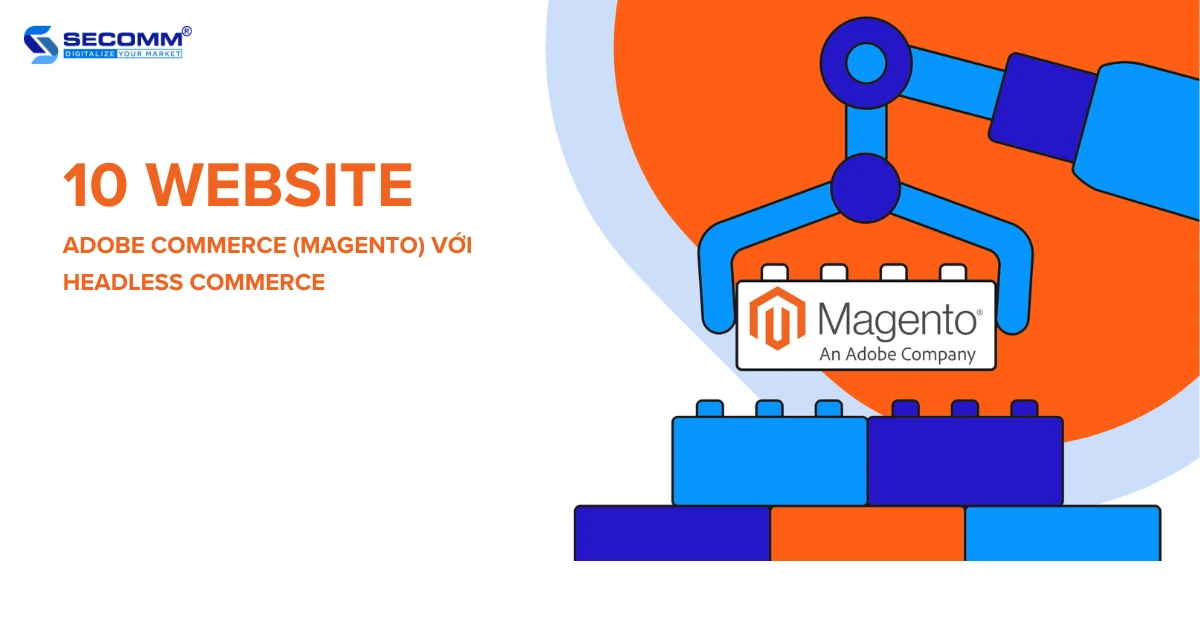
10 WEBSITES ADOBE COMMERCE (MAGENTO) WITH HEADLESS COMMERCE
Headless Commerce is a significant revolution in the technology sector, changing the way businesses approach eCommerce. In this field, Adobe Commerce leads in providing solutions and tools for implementing Headless Commerce.
Below is a list of 10 well-known brands currently utilizing Adobe Commerce and Headless Commerce.
Samsung
Samsung is a multinational conglomerate based in South Korea, operating in various sectors, with its most prominent being consumer electronics, generating a revenue of $234 billion in 2022.
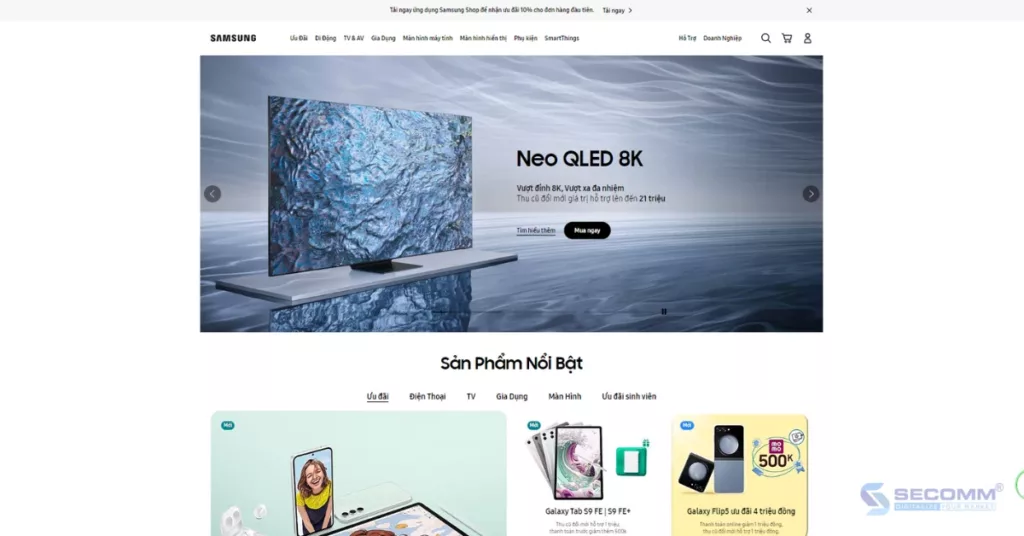
Samsung’s eCommerce website is built on the Adobe Commerce Cloud platform, utilizing Headless Commerce technology as its core. Thanks to this, Samsung has developed a virtual assistant to support customers in online and in-store shopping. In the U.S. market, customers can use this assistant to view product demos, receive usage instructions, and make online purchases. Customers have highly praised this feature for providing a more comfortable and convenient shopping experience.
- Website: https://www.samsung.com/
- Industry: Consumer Electronics
- Platform: Adobe Commerce
- Traffic: 1.2B/month
- Ranking: 125 (South Korea) & 37 (Global)
Target
Target Corporation is a major retail company in the United States, offering a wide range of products and services, including clothing, footwear, electronics, household goods, toys, and furniture. According to the financial report of Target Corporation in 2022, the revenue reached $106.8 billion, a growth of 8.4% compared to 2021.
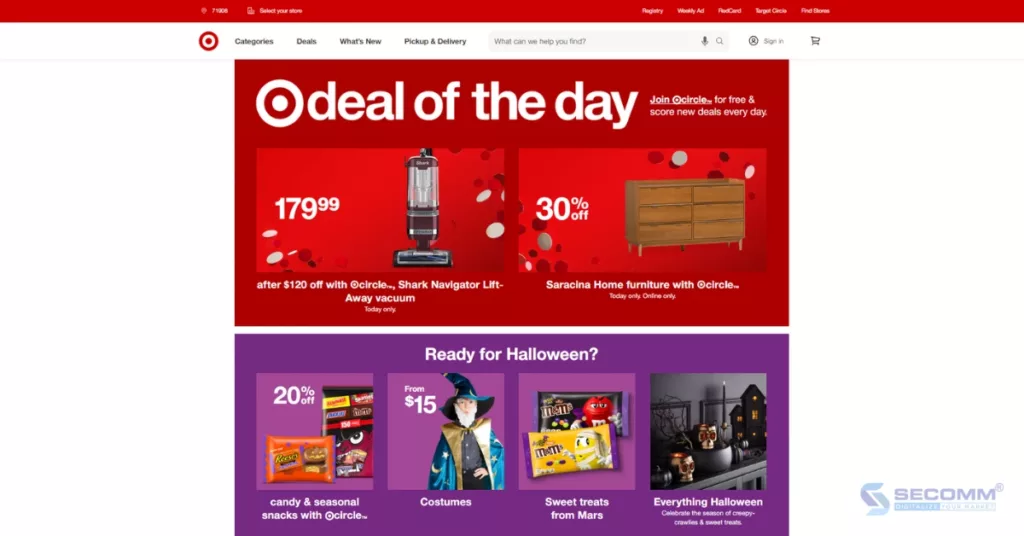
Target recognized that the brand was losing revenue as customers began their shopping journey on one device and ended it on another. The retailer has implemented Headless Commerce to deploy omnichannel sales to increase conversion rates on various devices, thereby making it easier for customers to complete their purchase transactions.
- Website: https://www.target.com/
- Industry: Retail
- Platform: Adobe Commerce
- Traffic: 154.7M/month
- Ranking: 52 (United States) & 194 (Global)
Toyota
Toyota is one of the largest automobile manufacturers in the world, selling over 10 million vehicles globally each year. Toyota produces a variety of vehicles and accessories, including cars, trucks, buses, and sports utility vehicles, as well as engines, transmissions, and auto parts.

Toyota’s website utilizes Headless Commerce to leverage Application Programming Interfaces (APIs) for integration with legacy systems and inventory management, providing a personalized omnichannel experience.
- Website: https://www.toyota.com/
- Industry: Automotive
- Platform: Adobe Commerce
- Traffic: 17.2M/month
- Ranking: 506 (United States) & 2,371 (Global)
Under Armour
Under Armour is an American sportswear company founded in 1996 by Kevin Plank. The company is headquartered in Baltimore, Maryland, and specializes in the production of sportswear, footwear, and accessories, with an annual revenue of over $10 billion.

Currently, Under Armour is using Headless Commerce to enhance the personalized fitness experience based on location, purchase history, and workout activities, as well as training logs. The Under Armour website features notable functionalities such as inventory alerts, traffic history, payment information, and content management using data from the order management system.
- Website: https://www.underarmour.com/
- Industry: Sportswear
- Platform: Adobe Commerce
- Traffic: 10.7M/month
- Ranking: 1,154 (United States) & 5,100 (Global)
Kirkland’s
Kirkland’s is a chain of home décor, furniture, textiles, accessories, and gift stores in the United States. The company is headquartered in Brentwood, Tennessee, and operates 431 stores in 35 states and an eCommerce website.

Kirkland’s has implemented Headless Commerce to address website-related issues such as flexibility, custom design, and providing a smooth shopping experience (single-click login and biometric payment capabilities).
- Website: https://www.kirklands.com/
- Industry: Furniture
- Platform: Adobe Commerce
- Traffic: 6.1M/month
- Ranking: 1,550 (United States) & 8,295 (Global)
Coca-Cola
Coca-Cola is a carbonated beverage brand established in 1886. It is currently the world’s best-selling beverage brand, available in over 200 countries and territories, with over 2 billion cans sold every day.
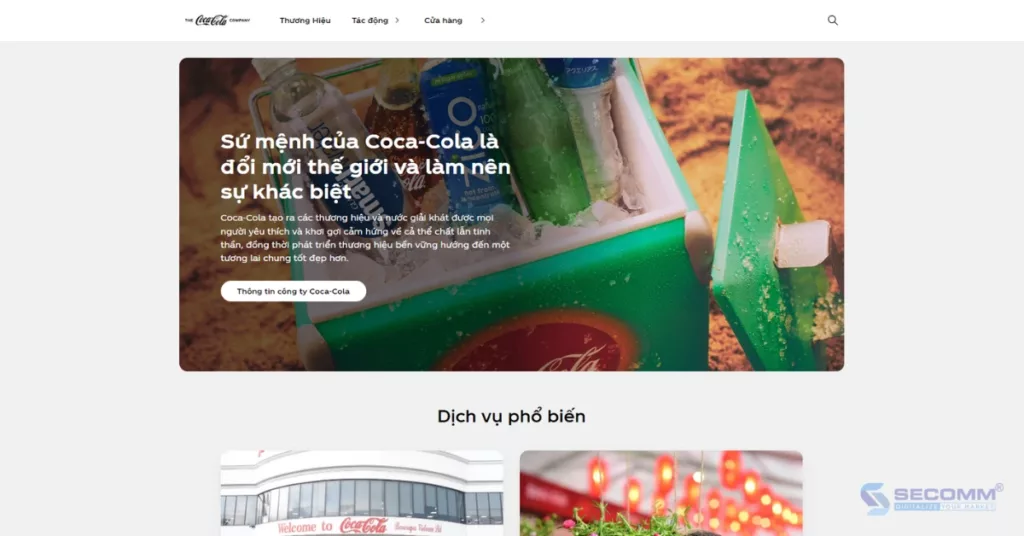
The Coca-Cola website utilizes Headless Commerce technology to leverage API integration, providing a seamless end-to-end omnichannel experience for global customers. This technology allows the business to expand through its markets, customize experiences, and integrate with third-party suppliers and solutions.
- Website: https://www.coca-cola.com/
- Industry: Beverage
- Platform: Adobe Commerce
- Traffic: 4.1M/month
- Ranking: 4,950 (United States) & 14,961 (Global)
Technodom
Technodom is one of the largest retailers in Central Asia, with an annual revenue of $800 million. This retail giant has around 9,000 employees, offering over 60,000 products and 4,000 categories.
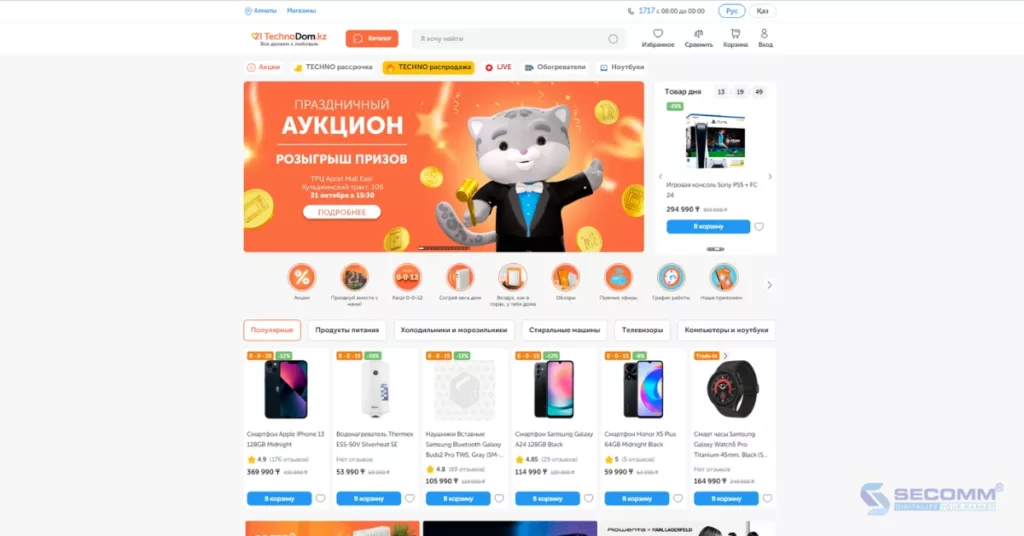
Technodom has implemented Headless Commerce on Magento with a page load speed of under one second, thanks to the PWA (Progressive Web App) pre-rendering solution. Additionally, the website’s backend is integrated with Akeneo PIM (Product Information Management) and ESB (Enterprise Service Bus), essential components for businesses to efficiently manage and distribute their databases.
- Website: https://www.technodom.kz/
- Industry: Retail
- Platform: Magento Open Source 2 (Backend), ScandiPWA (Frontend)
- Traffic: 2.8M/month
- Ranking: 69 (Kazakhstan) & 19,778 (Global)
Helly Hansen
Helly Hansen is a renowned Norwegian company that manufactures and retails clothing, sports gear, and outdoor accessories. Established in 1877, the company is now one of the world’s leading fashion and lifestyle brands, with a revenue of $2.8 billion in 2022.
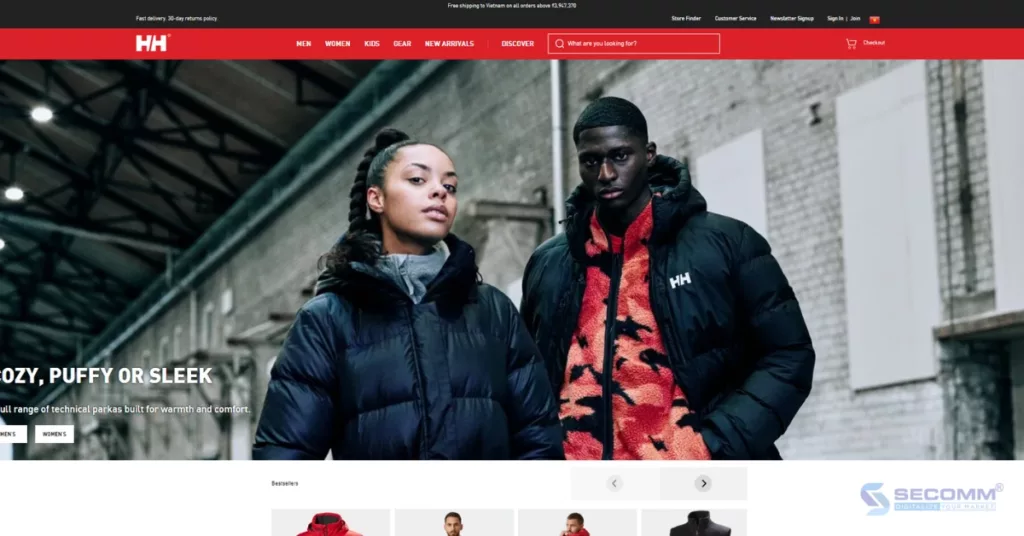
Initially, Helly Hansen’s eCommerce website was built on the Magento platform. After a period of business operations, Helly Hansen decided to transition to Adobe Commerce to implement Headless Commerce. As a result, Helly Hansen’s website quickly saw a 24% increase in traffic, a 48% increase in mobile traffic, and a more than 45% increase in total revenue.
- Website: https://www.hellyhansen.com/
- Industry: Fashion
- Platform: Adobe Commerce
- Traffic: 1.5M/month
- Ranking: 16,097 (Norway) & 28,402 (Global)
Kaporal
Kaporal is a French fashion brand specializing in jeans, T-shirts, shirts, jackets, and accessories. The brand was established in 2004 and is currently present in over 30 countries worldwide.
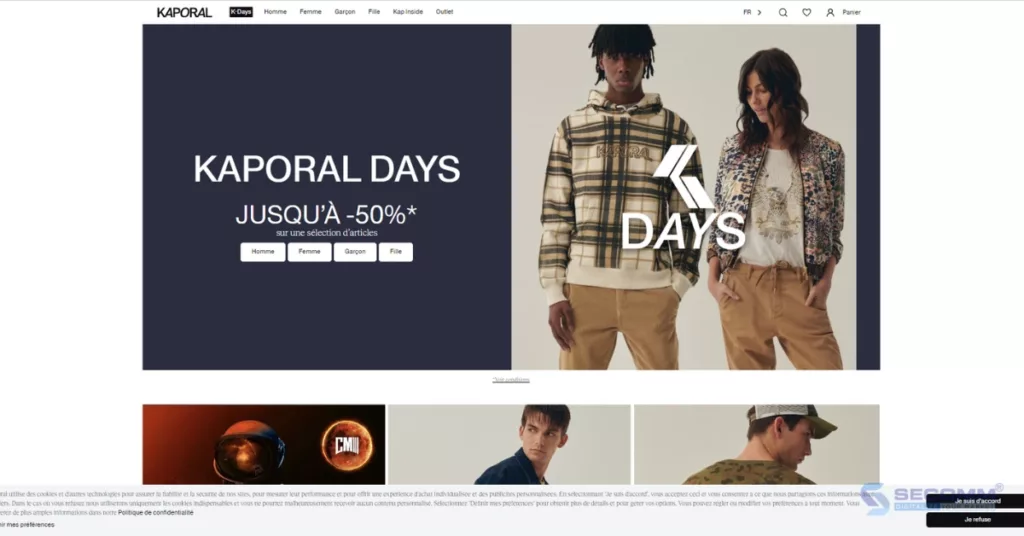
Similar to many longstanding Magento businesses, Kaporal has migrated its platform from Magento 1 to Magento 2 to take advantage of the Headless Commerce features from PWA Studio, addressing issues related to slow speed and poor mobile performance.
- Website: https://www.kaporal.com/
- Industry: Fashion
- Platform: Magento Open Source 2 (Backend), FrontCommerce (Frontend)
- Traffic: 212,200/month
- Ranking: 5,204 (France) & 161,873 (Global)
G-SP
G-SP is a brand specializing in the business of spare parts and digital accessories, established in 2009. This Swedish company currently has offices in Sweden, the Netherlands, and China, offering over 10,000 products.
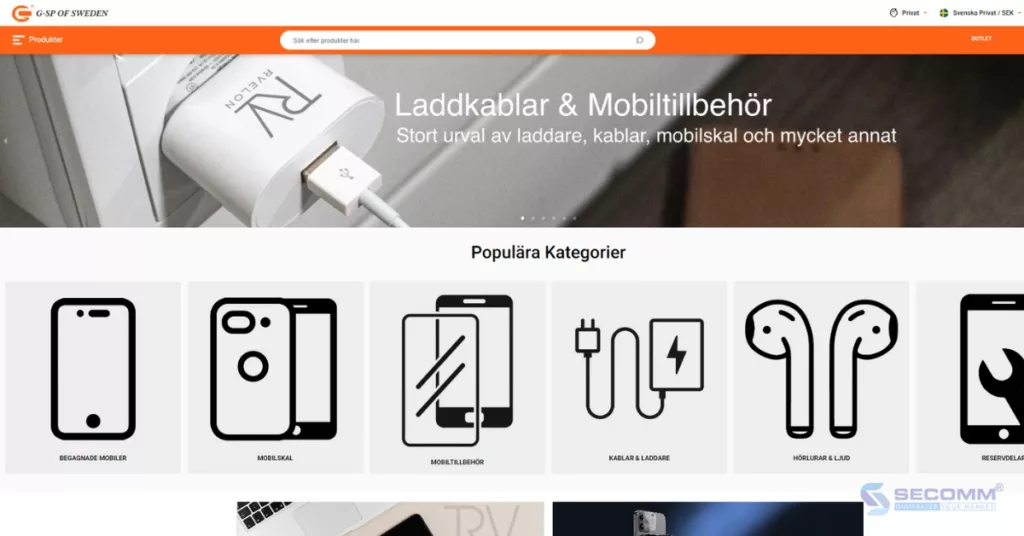
Similar to many other Magento stores, G-SP faced issues with website performance and stability. Therefore, G-SP opted for Headless PWA to enhance their digital conversions. The implementation of Headless PWA accelerated the mobile website speed by 2.7 times, which is particularly crucial for a complex Magento website with numerous plugins and categories like G-SP.
- Website: https://www.g-sp.se/
- Industry: Electronic Accessories
- Platform: Magento Open Source 2
- Traffic: 15,500/month
- Ranking: 13,116 (Sweden) & 1,216,288 (Global)
Above is the list of the top 10 eCommerce websites currently using the Adobe Commerce (Magento) eCommerce platform and Headless Commerce globally.
Looking for a suitable eCommerce Website Development Solution?
With deep expertise and the development of complex eCommerce systems for clients such as Changi Airport Group (Singapore), Trentham Estate (Australia), and The Warehouse (Vietnam), SECOMM understands the challenges in choosing a platform and deploying eCommerce that businesses are facing.
- Comprehensive Understanding: Providing comprehensive eCommerce solutions from consulting, development, and operation to the growth of eCommerce systems.
- Deep Expertise: Over 9 years of experience in deploying complex eCommerce systems for clients from various countries.
- Customized Solutions: Proposing eCommerce solutions, including technological architecture and a suitable team for each business.
- Flexible Progress: Project timelines and schedules are adjusted according to the specific needs of the business.
Contact SECOMM now or call directly at the hotline number (028 7108 9908) for free advice on the eCommerce website building roadmap!
 2
2

 1,578
1,578

 0
0

 1
1
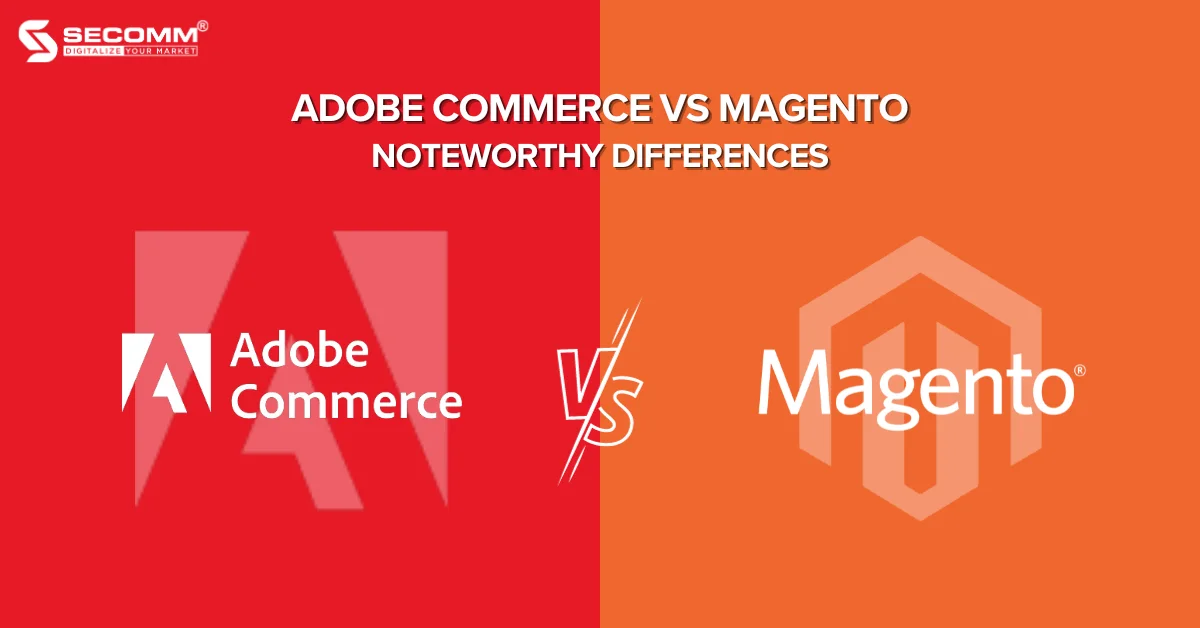
ADOBE COMMERCE VS MAGENTO: NOTEWORTHY DIFFERENCES
Magento and Adobe Commerce are considered popular eCommerce platforms, used by hundreds of thousands of businesses worldwide.
Both platforms have strong growth potential in the future, given the increasing trend of eCommerce and the demand for robust and flexible eCommerce solutions.
Overview
Magento is an open-source eCommerce platform used by over 300,000 eCommerce websites before being officially acquired by Adobe in 2018. Magento is known for its performance, user-friendliness, scalability, and security, especially in Magento 2.0.
Since its establishment, Magento has provided two main versions for businesses:
- Magento Open Source (also known as Community Edition): A free version that requires the integration of various extensions and technical knowledge for building and managing an eCommerce website.
- Magento Commerce: A paid version suitable for large enterprises seeking a customizable experience, unlimited features, and scalability for all deployment scales.
Currently, there are two main versions:
Magento Open Source and Adobe Commerce. Adobe Commerce is further divided into two versions, On-Premise (referred to as Adobe Commerce) and On-Cloud (referred to as Adobe Commerce Cloud).
What is Magento Open Source?
Magento Open Source is a free, open-source eCommerce platform that requires users to have technical knowledge and skills to install, build, and manage the website. This platform also takes time and money to deploy basic to advanced features.
Key features include:
- Category Management: Control over product data, product features, categories, prices, inventory quantities, images/videos for operations and optimized business.
- Store Management: Management of product inventory, control of business operations, and personnel for each branch.
- Cart & Checkout: Management of the shopping cart, and customer checkout information.
- Customer Management: Managing customer information to improve marketing efficiency, shopping experience, and customer satisfaction.
- Marketing Management: SEO optimization and implementation of marketing programs using support tools to boost sales for businesses.
- Sales Management: Setting up and operating sales processes, orders, payments, and shipping.
- Content Management: Development and optimization of content elements for CMS pages, image storage, theme customization, and website design.
- System Management: Role-based admin permissions, reviewing the best security methods, maintenance, and system care.
- Analysis & Reporting: Support for tracking, and measuring the performance of eCommerce systems, and planning for future strategies.
Depending on the complexity of the system, the cost of deploying a Magento website can fluctuate around $50,000 for the first year.
What is Adobe Commerce?
This is a paid on-premises service from Adobe, so this platform includes all the premium features of Magento Open Source and more.
After merging with Adobe, Magento Commerce was renamed Adobe Commerce and is considered part of the Adobe Experience Cloud—a set of solutions designed to help businesses make informed decisions and provide enhanced customer experiences based on detailed information and data.
Adobe Commerce is often integrated with Adobe Experience Manager, Adobe Analytics, and Adobe Target. Through Adobe Commerce, businesses have access to smart business services provided by Adobe, as well as machine learning capabilities and personalization provided by Adobe Sensei.
This makes Adobe Commerce the perfect eCommerce platform for businesses with complex needs and a desire to leverage leading capabilities to provide superior experiences for customers across multiple devices and channels. However, due to the relatively complex functional eCommerce website system on Adobe Commerce, businesses will need to be autonomous in the complex infrastructure as well.
The following diagram illustrates the reference architecture for deploying Adobe Commerce on AWS infrastructure. Other cloud service providers such as Azure, Google Cloud, and Alibaba Cloud also have similar infrastructure designs and services.
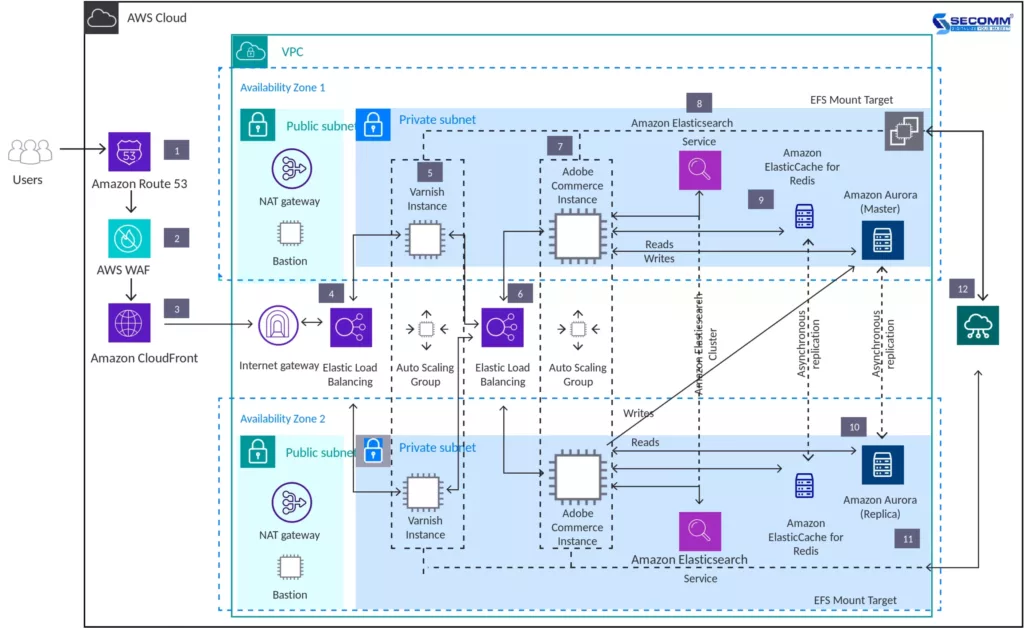
With all the reasons mentioned above, Adobe Commerce will have relatively high deployment costs, around $130,000 per project for the first year, depending on the complexity of the website system.
What is Adobe Commerce Cloud?
In contrast to the self-hosted version like Adobe Commerce, Adobe Commerce Cloud is a version that includes cloud services.
Specifically, this platform includes all the features of Adobe Commerce along with enhanced Adobe Cloud infrastructure, including integrated GIT (distributed source code management software) and specific environments for development, staging, and building the website system.
This means that developers using this platform can write code, test, and deploy on suitable environments, ensuring smooth performance.
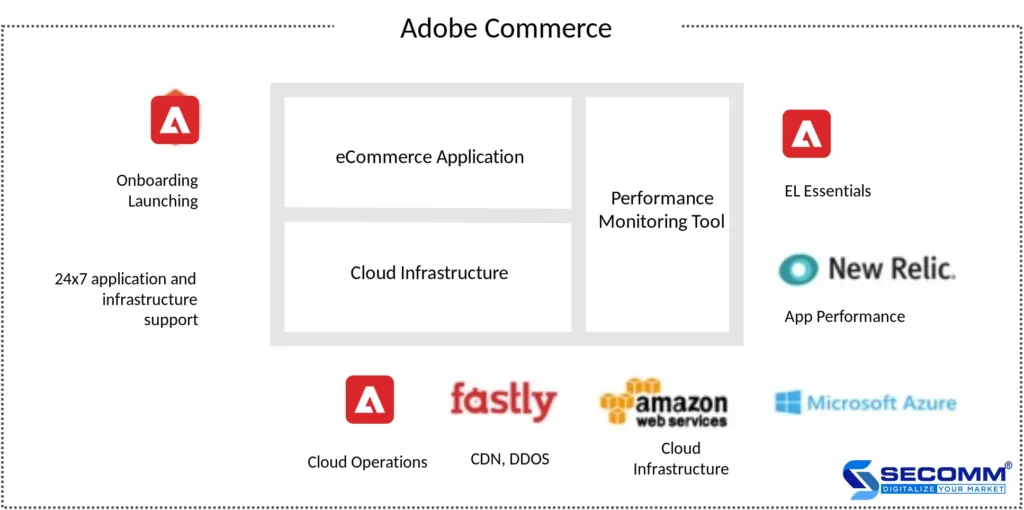
Similar to Adobe Commerce, Adobe Commerce Cloud is also suitable for large enterprises with special requirements because this version can meet all specialized needs, with flexibility and scalability through available management features.
However, the cost for enterprises to deploy Adobe Commerce Cloud will be higher than Adobe Commerce, around $150,000 per project for the first year, depending on the complexity of the website system.
Read more: The cost of building an Adobe Commerce (Magento) website
Adobe Commerce vs Magento: Notable Differences
Although Adobe Commerce and Magento share the same core technology platform, they have functional differences. Magento includes some core features, and businesses can develop or integrate additional features through extensions.
On the other hand, Adobe Commerce includes features from Magento Open Source, along with additional features developed by the Adobe team.
Similarly, Adobe Commerce Cloud includes features from Adobe Commerce, along with advanced and more specialized features designed to address specific challenges for each business.
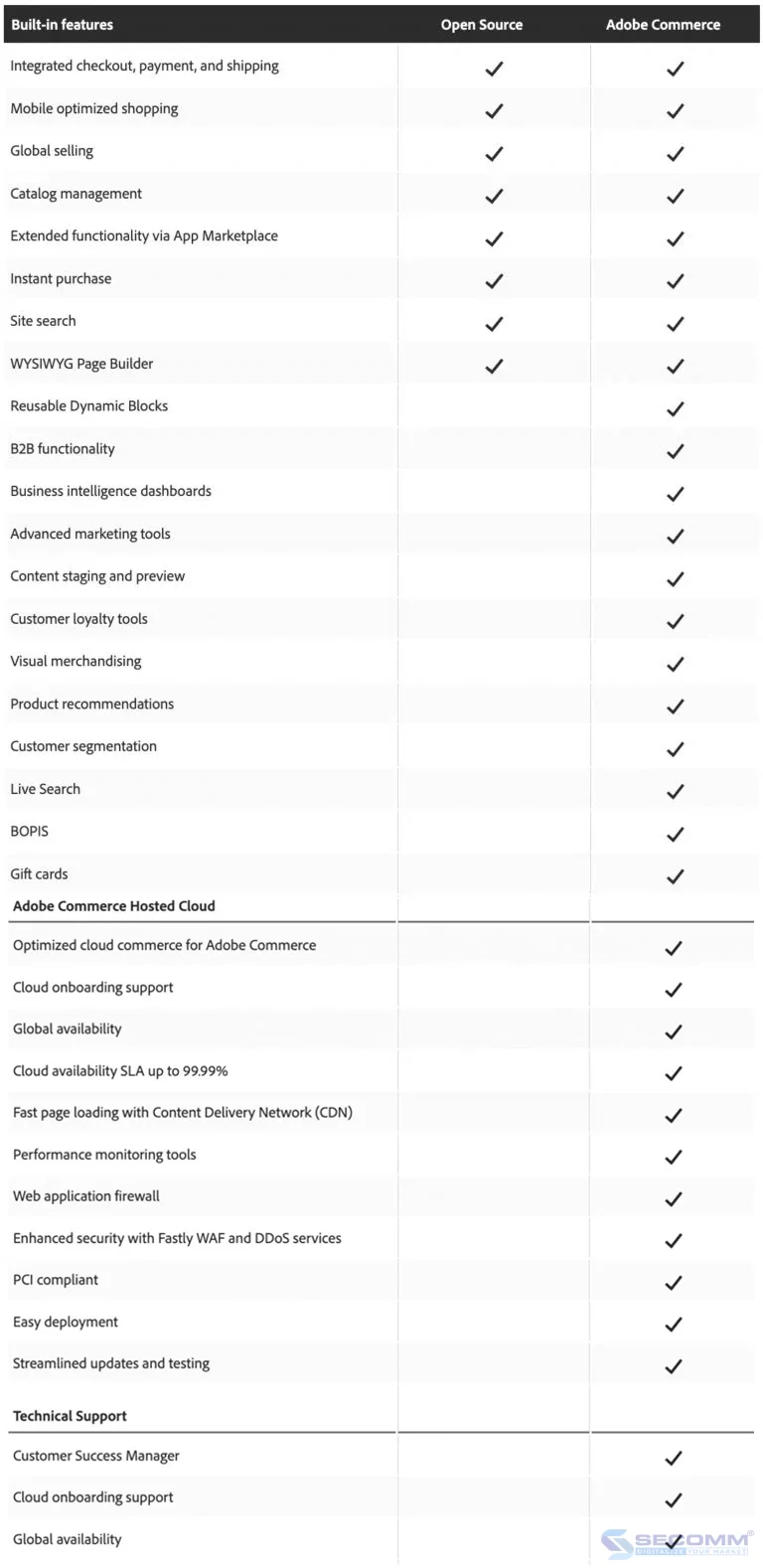
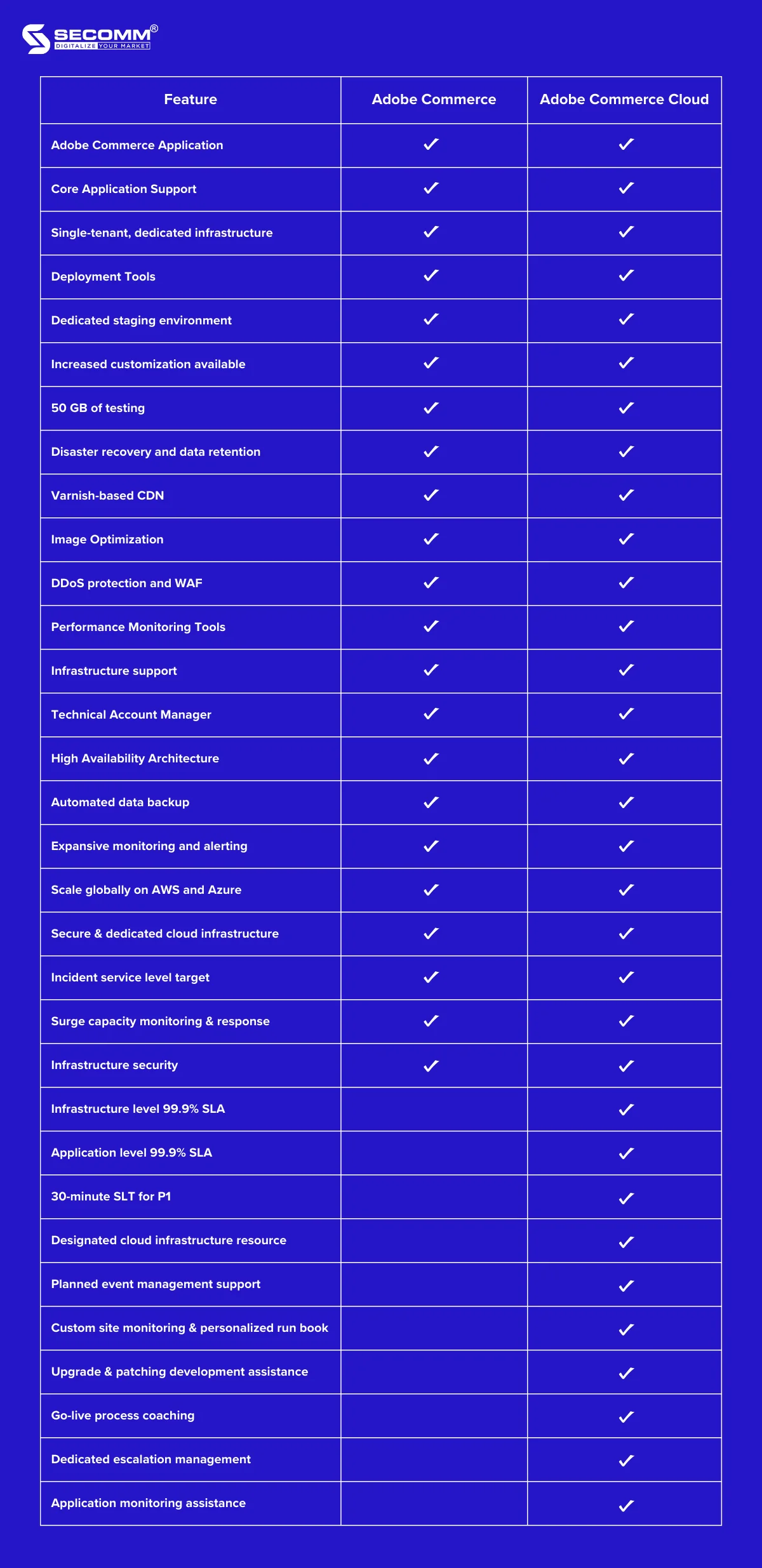
Besides the features, Magento and Adobe Commerce (both versions) also have some other differences.
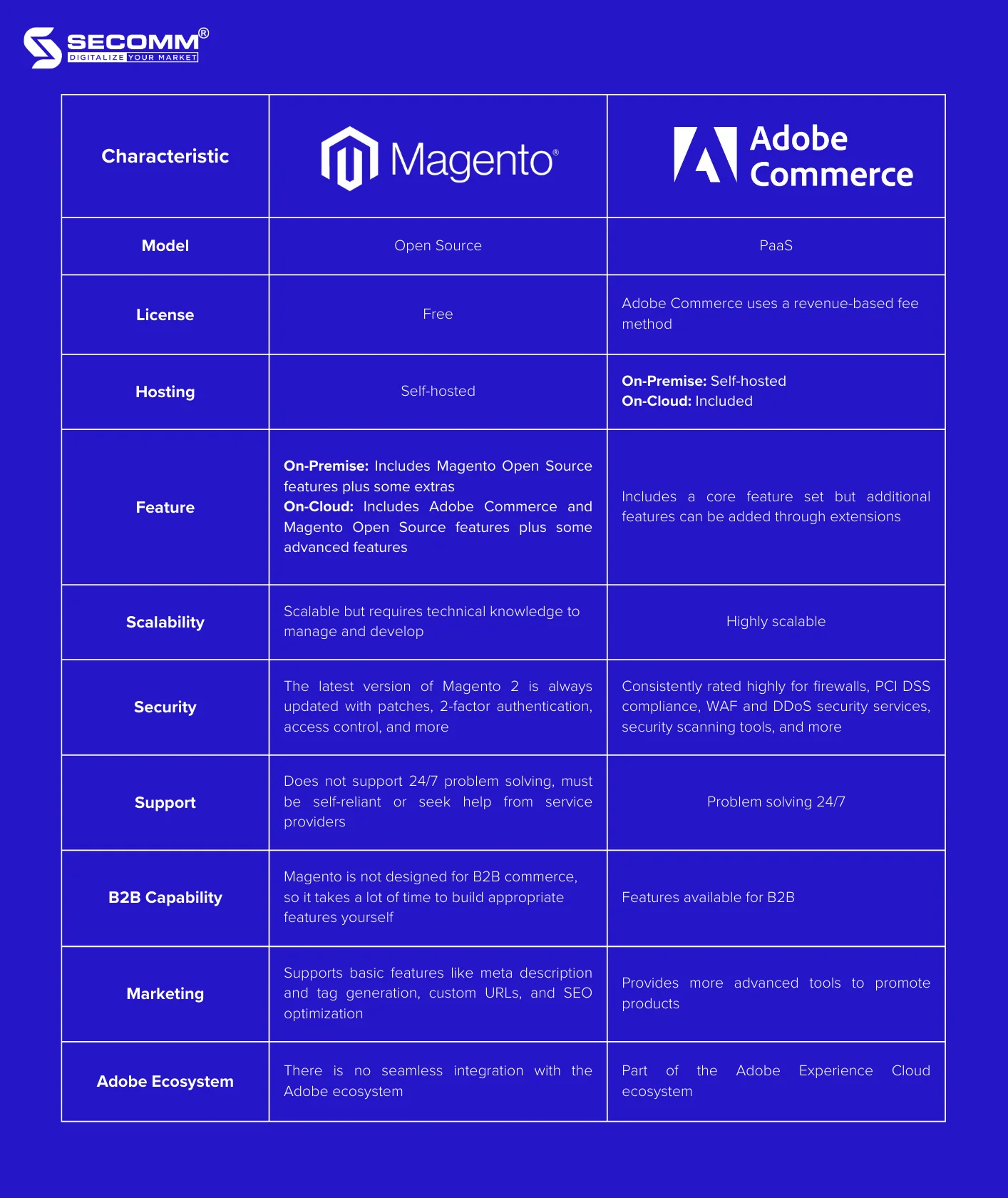
Magento and Adobe Commerce are both powerful eCommerce platforms that can meet the needs of businesses of all sizes. However, there are some notable differences between these two platforms.
Choosing the right eCommerce platform for a brand depends on the specific needs and budget of each business. If a business is a small to medium-sized enterprise, newly entering the market, and only requires basic and advanced features, then Magento Open Source is a good choice.
However, if the business is large and complex, requiring extensive features and scalability, then Adobe Commerce is a better choice.
Looking for a suitable eCommerce Website Development Solution?
With deep expertise and the development of complex eCommerce systems for clients such as Changi Airport Group (Singapore), Trentham Estate (Australia), and The Warehouse (Vietnam), SECOMM understands the challenges in choosing a platform and deploying eCommerce that businesses are facing.
- Comprehensive Understanding: Providing comprehensive eCommerce solutions from consulting, development, and operation to the growth of eCommerce systems.
- Deep Expertise: Over 9 years of experience in deploying complex eCommerce systems for clients from various countries.
- Customized Solutions: Proposing eCommerce solutions, including technological architecture and a suitable team for each business.
- Flexible Progress: Project timelines and schedules are adjusted according to the specific needs of the business.
Contact SECOMM now or call directly at the hotline number (028 7108 9908) for free advice on the eCommerce website building roadmap!
Read more:
 8
8

 3,691
3,691

 0
0

 1
1
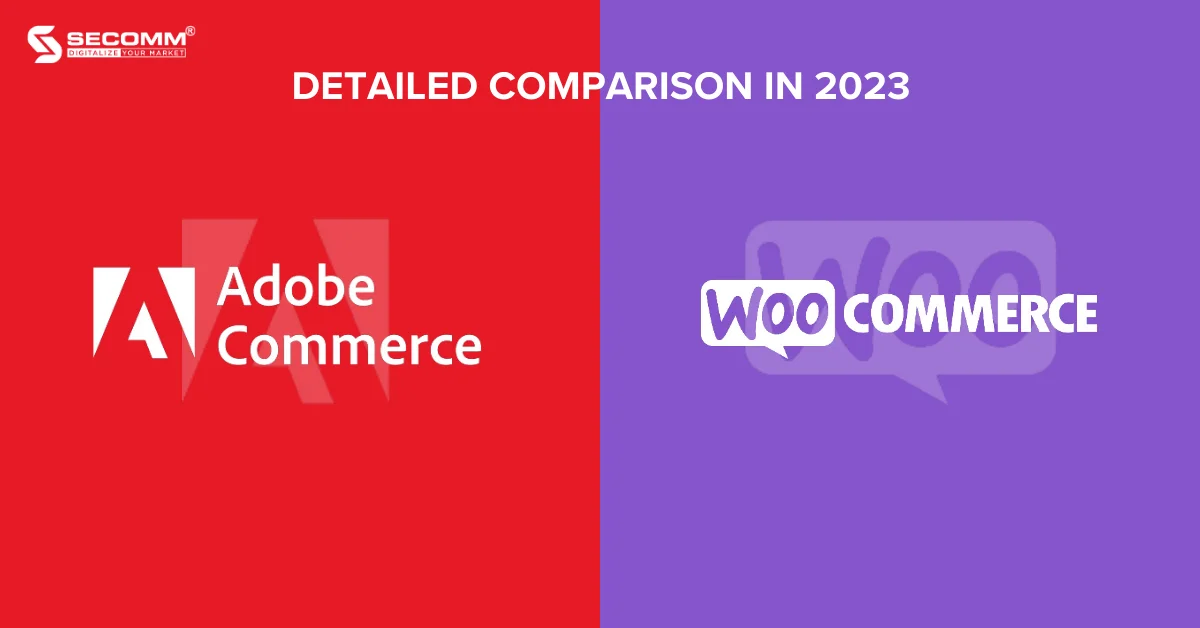
ADOBE COMMERCE VS WOOCOMMERCE: DETAILED COMPARISON IN 2023
Among the eCommerce platforms that businesses consider choosing to develop their online stores, the two names Adobe Commerce and WooCommerce are always put on the scale for comparison.
Both are suitable for small and large businesses to build websites due to their flexible customization capabilities and high scalability. However, there are significant differences between WooCommerce and Adobe Commerce that are worth noting.
Overview
What is Adobe Commerce?
Adobe Commerce, formerly known as Magento Commerce, is an open-source eCommerce solution designed for medium to large-scale businesses, particularly those undergoing rapid growth and with high demands for customization and scalability.
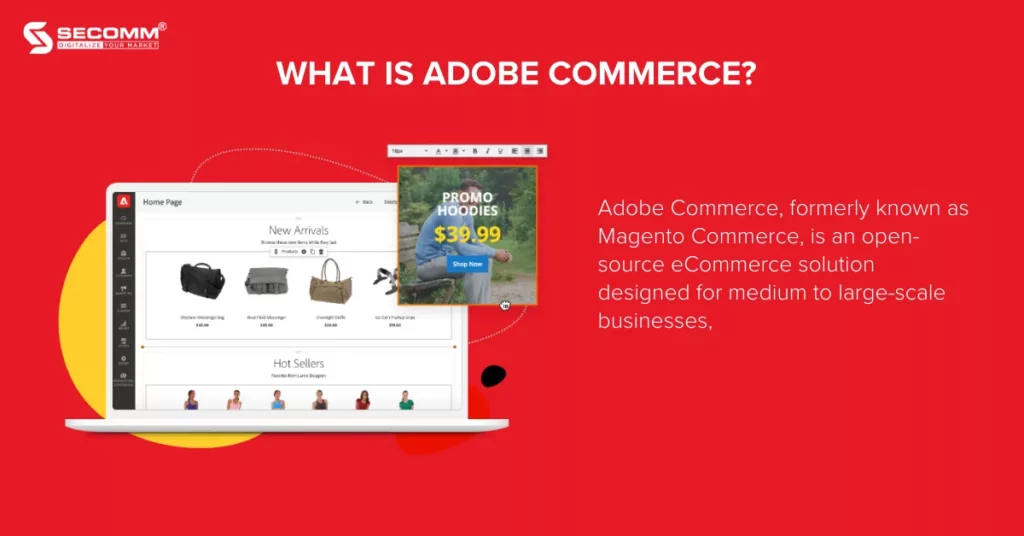
Currently, Adobe Commerce offers two different version options:
- Adobe Commerce (formerly Magento Enterprise): A paid version, further divided into two types—On-Premise version allows businesses to self-manage storage, and On-Cloud version provides hosting services with a fixed fee.
- Magento Open Source: A free version available for download and use by the general public. This version provides essential features businesses need to build and manage online stores.
Related article: Top 20 eCommerce websites using Adobe Commerce (Magento)
What is WooCommerce?
WooCommerce is an open-source eCommerce plugin developed for the WordPress platform, a widely used Content Management System (CMS) for creating and managing websites.
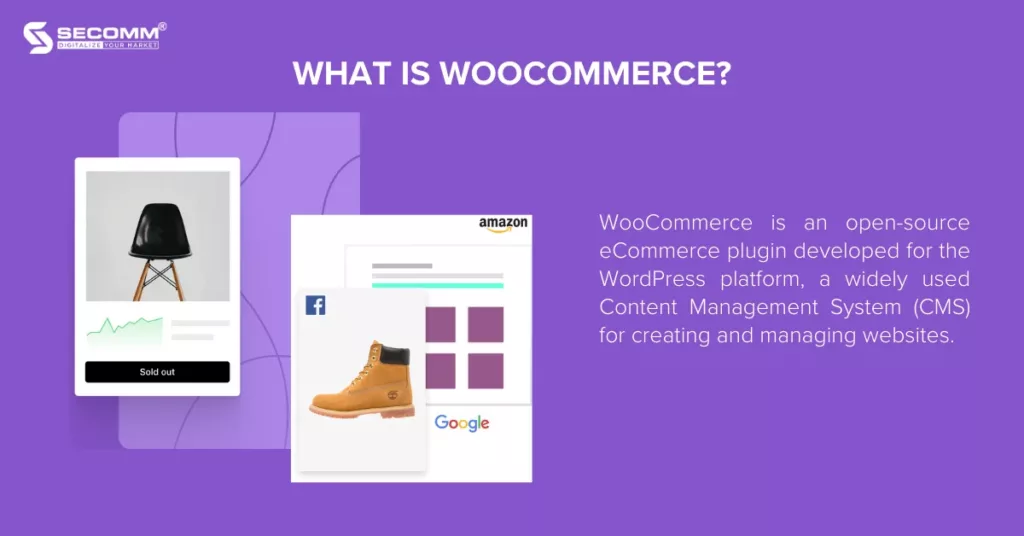
Consequently, WooCommerce is favoured by many businesses utilizing WordPress to develop their eCommerce websites.
Related article: Top 20 eCommerce websites using WooCommerce
Adobe Commerce vs WooCommerce
Adobe Commerce and WooCommerce are two popular eCommerce platforms, but each platform serves different business needs due to differences in deployment costs, feature systems, scalability, and security.
Deployment Cost
The deployment costs of Adobe Commerce will depend largely on the version chosen by the business.
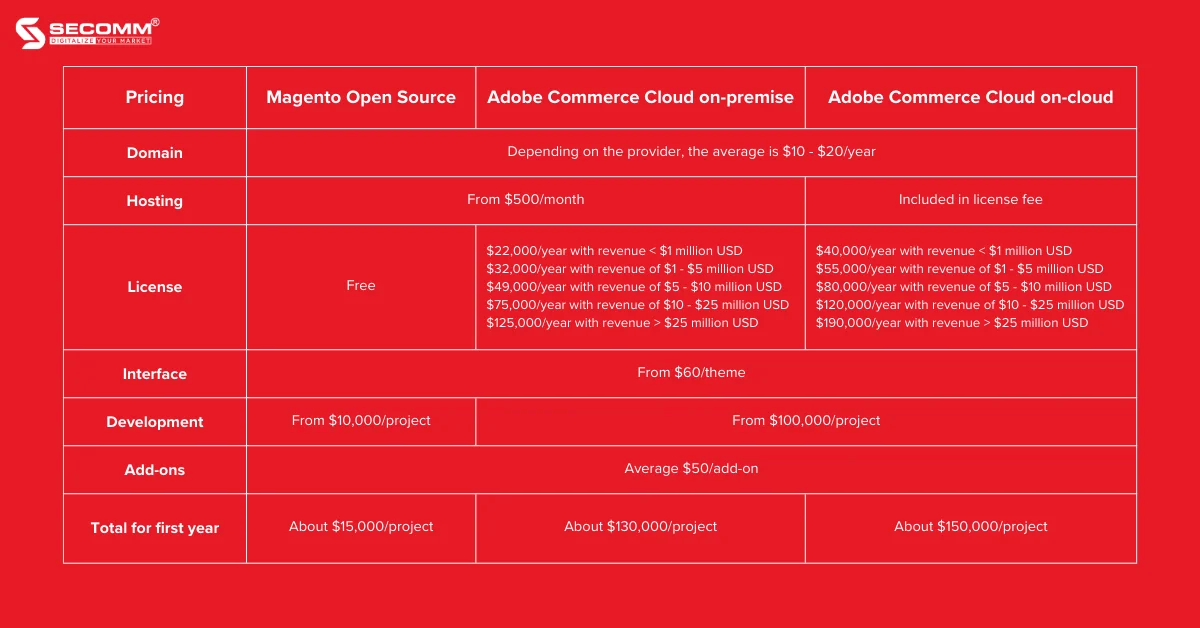
It can be seen that the deployment cost for an eCommerce website on Adobe Commerce is relatively high, starting from $15,000 per project for the Magento version and $130,000 per project for the first year with the Adobe Commerce version.
In contrast, the cost of using WooCommerce is entirely free, and the website construction cost is also relatively more budget-friendly compared to Adobe Commerce. Below are some estimated costs for deploying an eCommerce website on WooCommerce:
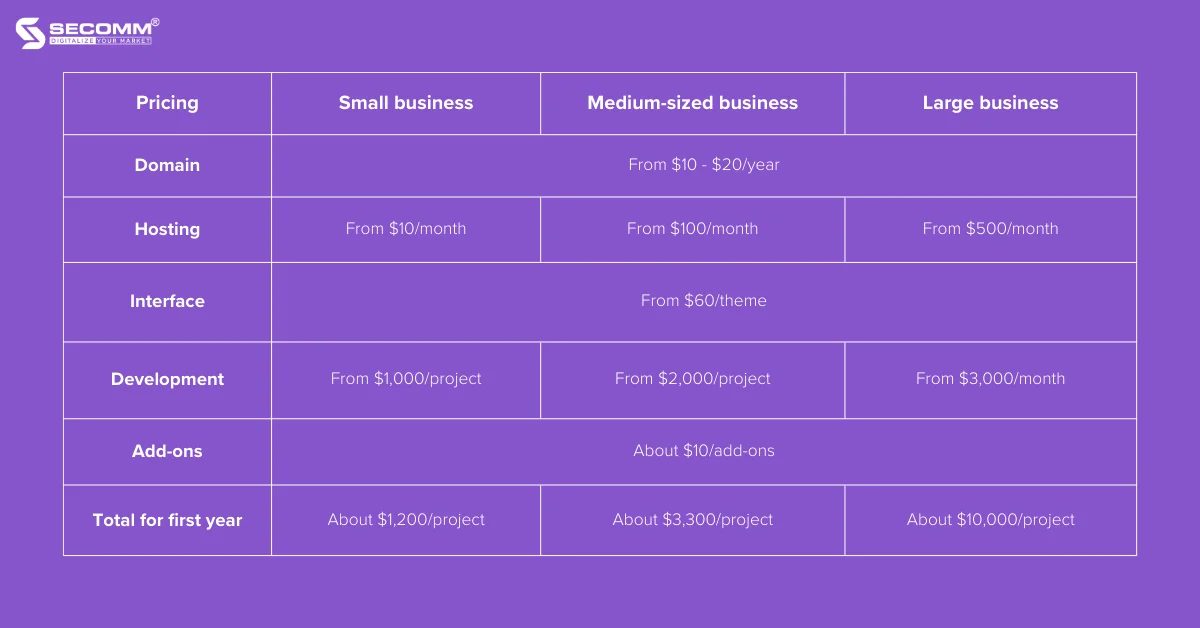
Note: These are only cost estimates. Actual costs may vary depending on factors such as needs, service providers, and optional features.
Feature System
Adobe Commerce and WooCommerce are both comprehensive eCommerce platforms covering everything from A to Z. Both have their advantages and disadvantages, catering to the diverse functional needs of businesses.
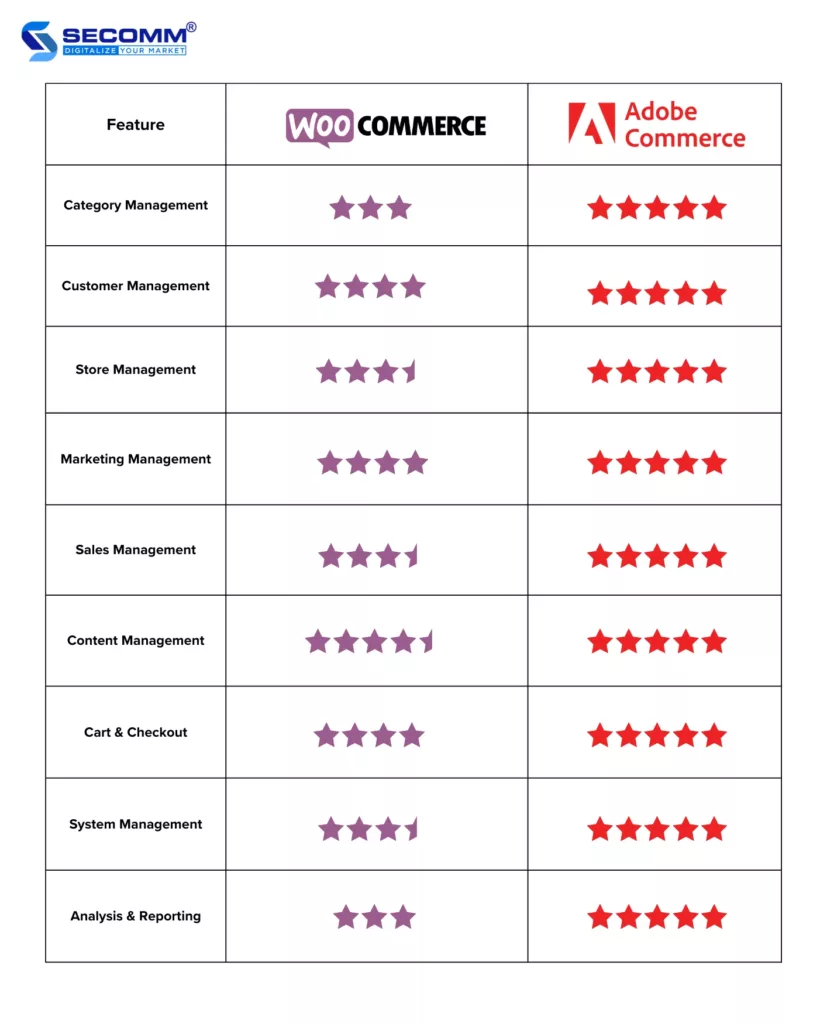
In addition to the basic feature set, businesses also need to consider advanced features that the system can accommodate.
- Headless Commerce: Adobe Commerce provides a Headless Commerce solution using technologies such as JavaScript, React, and Vue.js, while WooCommerce does not have a specific Headless Commerce solution.
- Omnichannel Deployment: Adobe Commerce can integrate with various sales channels, such as Amazon, eBay, Etsy, etc., while WooCommerce does not offer as many options as Adobe Commerce.
- Customer Management: Adobe Commerce has its own Customer Relationship Management (CRM) system, allowing businesses to track customer information, such as purchase history, and preferences, while WooCommerce does not have one and requires integration with third-party CRM solutions.
- Revenue Management: Adobe Commerce has tools to help businesses manage revenue, such as tracking sales, performance analytics, etc. WooCommerce does not have integrated revenue management tools but can integrate with third-party solutions.
It can be seen that the feature system of Adobe Commerce is more comprehensive than WooCommerce, covering both basic and advanced functionalities.
Therefore, for small to medium-sized businesses just starting in eCommerce, WooCommerce is a suitable choice. If the brand is a large enterprise with the need to build a large, complex online store, Adobe Commerce would be a perfect choice.
Read more: Top 10 Features To Increase eCommerce Website Revenue
Customization and Scalability
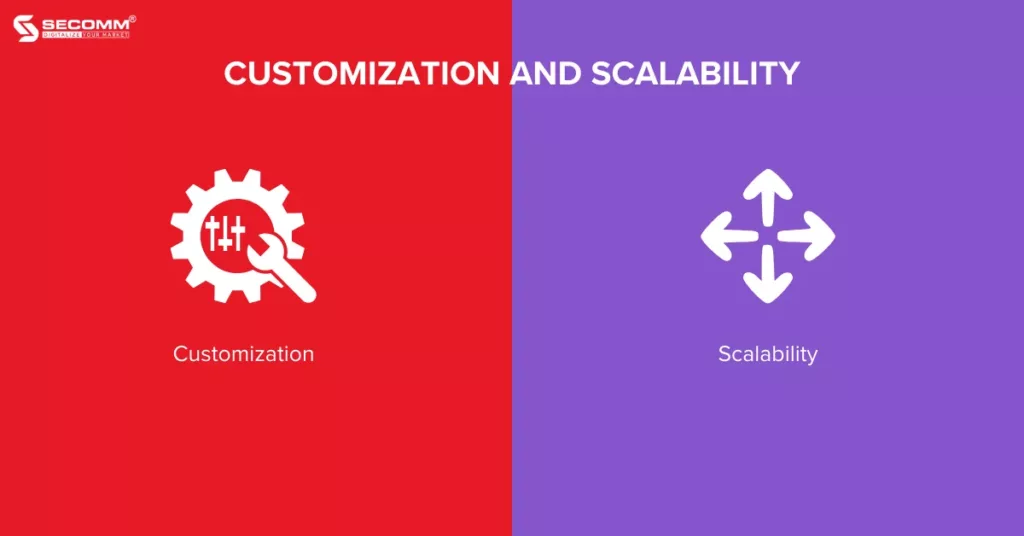
Customization
Adobe Commerce is an open-source platform, especially the Magento Open Source version, meaning developers can access the source code, making customization easier. This allows businesses to create features and integrate customizations to meet specific needs.
Similarly, WooCommerce also provides high customization capability with numerous available themes, plugins, and apps.
However, as a WordPress plugin, WooCommerce’s customization capability is not as extensive as Adobe Commerce.
Scalability
Both platforms have high scalability to handle traffic and large transaction volumes. However, Adobe Commerce’s scalability is higher than WooCommerce’s, especially for businesses with large, complex product catalogues or significant inventory management needs.
In summary, Adobe Commerce offers higher customization and scalability capabilities compared to WooCommerce. Still, the website development process with Adobe Commerce is more complex, requiring developers with substantial experience and technical expertise.
Security Capability
Adobe Commerce and WooCommerce both provide features and tools for securing customer and business data. However, there are some notable differences in security capabilities between these two platforms.
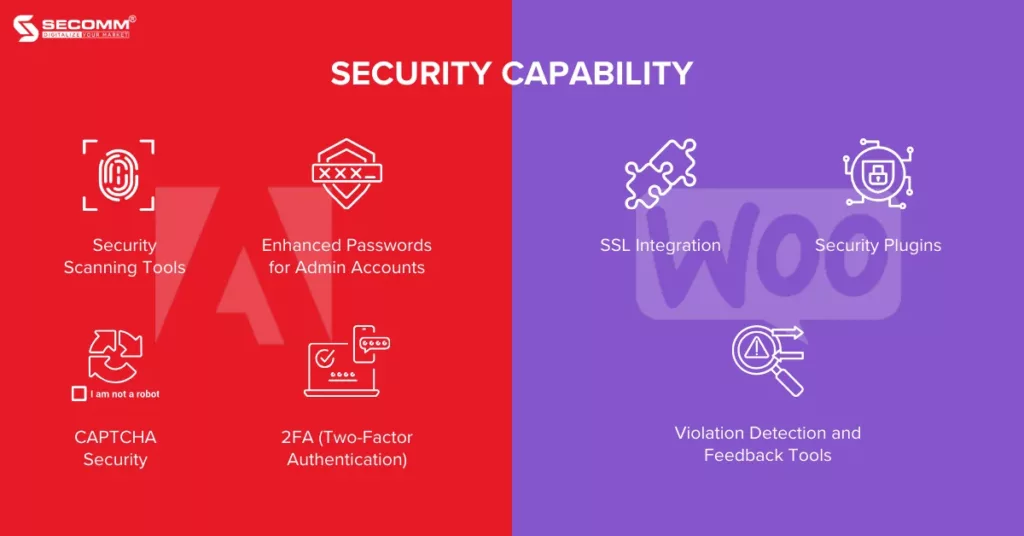
Adobe Commerce offers a range of security features and tools, including:
- Security Scanning Tools: Adobe Commerce is equipped with regular security scanning tools to identify security issues or malicious software. It also updates patches and notifications, suggesting security solutions to address emerging issues.
- Enhanced Passwords for Admin Accounts: Administrator passwords must have a minimum length of 7 characters, including letters, numbers, and special characters, and require re-login after a certain login session duration.
- CAPTCHA Security: Using CAPTCHA helps the system prevent spam from bots and unauthorized code intrusion.
- 2FA (Two-Factor Authentication): After logging in, the account needs to be verified with a one-time password (OTP) sent to the registered phone number during the account registration, limiting unauthorized access and enhancing user protection.
WooCommerce also provides some security features and tools, including:
- SSL Integration: WooCommerce supports SSL integration with hosting service providers.
- Security Plugins: Several security plugins for WooCommerce can help businesses enhance security for their eCommerce stores.
- Violation Detection and Feedback Tools: Several violation detection and feedback tools can be integrated with WooCommerce.
Similar to the above factors, Adobe Commerce is generally considered to have higher security compared to WooCommerce.
Conclusion
It can be seen that Adobe Commerce is rated higher than WooCommerce in many aspects. However, while WooCommerce is known for being a user-friendly platform, making it easy for businesses without strong technical capabilities to quickly deploy, Adobe Commerce requires a professional team to build and manage a highly customized, scalable, and complex system.
In general, WooCommerce is suitable for small to large businesses using WordPress, wanting to start e-commerce deployment, and requiring basic customization and expansion solutions. However, Adobe Commerce offers flexibility, customization, and scalability, making it more suitable for corporations with complex system requirements.
In reality, the more flexible and customizable platforms with high scalability, the more complex and costly the deployment process becomes. Therefore, businesses need to consider the scale and development needs to make an appropriate choice.
Looking for a suitable eCommerce Website Development Solution?
With deep expertise and the development of complex eCommerce systems for clients such as Changi Airport Group (Singapore), Trentham Estate (Australia), and The Warehouse (Vietnam), SECOMM understands the challenges in choosing a platform and deploying eCommerce that businesses are facing.
- Comprehensive Understanding: Providing comprehensive eCommerce solutions from consulting, development, and operation to the growth of eCommerce systems.
- Deep Expertise: Over 9 years of experience in deploying complex eCommerce systems for clients from various countries.
- Customized Solutions: Proposing eCommerce solutions, including technological architecture and a suitable team for each business.
- Flexible Progress: Project timelines and schedules are adjusted according to the specific needs of the business.
Contact SECOMM now or call directly at the hotline number (028 7108 9908) for free advice on the eCommerce website building roadmap!
Read more: Shopify Plus vs Adobe Commerce: Key Differences 2023
 2
2

 4,186
4,186

 0
0

 1
1
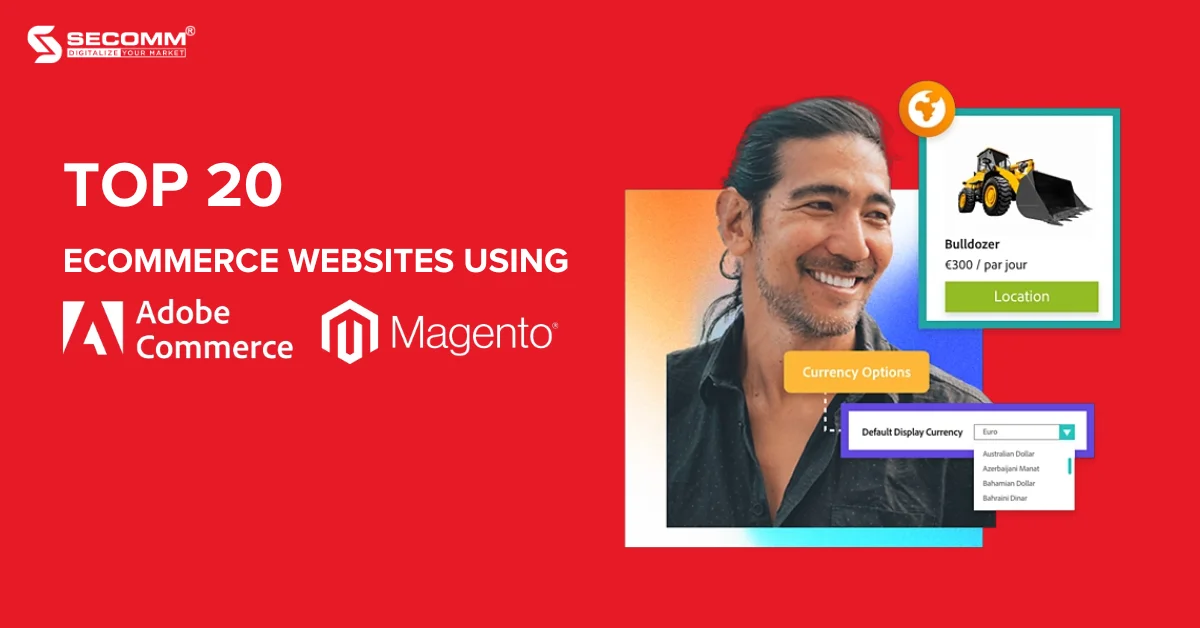
TOP 20 ECOMMERCE WEBSITES USING ADOBE COMMERCE (MAGENTO)
Adobe Commerce is an open-source eCommerce platform designed specifically for businesses ranging from medium to very large scales with high growth and significant customization and scalability needs.
Adobe Commerce has two versions, including:
- Magento Open Source: The free version, deployed and managed on the business’s servers.
- Adobe Commerce Cloud: The paid version, is deployed and managed on the cloud by Adobe.
According to reports from W3Techs and Adobe Commerce, as of July 2023, there are a total of over 367,000 eCommerce websites using Magento and Adobe Commerce. Among them, Magento holds about 5% of the global eCommerce market share, and Adobe Commerce holds about 3% of the global eCommerce market share.
See more: What is Adobe Commerce? Should we use Adobe Commerce?
Here is a list of 10 famous international brands and 10 famous brands in Vietnam currently using Adobe Commerce.
HP
HP is a multinational IT company based in Palo Alto, California, specializing in the development of personal computers, printers, and related supplies, as well as 3D printing solutions.
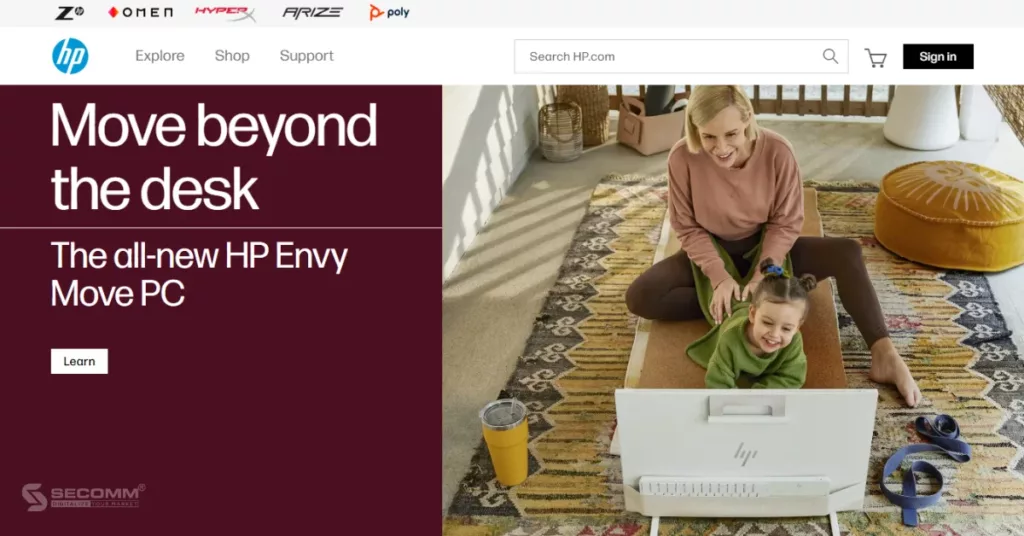
HP deployed its first Magento Open Source 1 (formerly known as Magento Commerce) website in Thailand and Indonesia in 2013. When opening stores in China, they decided to switch to the Adobe Commerce version to support customers searching for products globally.
With Adobe Commerce, HP can further optimize the shopping experience and implement new features more quickly, helping the business achieve its eCommerce goals.
- Website: https://www.hp.com/
- Platform Used: Adobe Commerce
- Industry: Consumer Electronics
- Traffic: 61.7M/month
- Ranking: 624 (United States) & 736 (Global)
ASUS
ASUS is an abbreviation for Asus Software Unit Systems, a multinational conglomerate headquartered in Taiwan, specializing in the manufacturing of electronic products and computer hardware. ASUS was founded in 1989 and is currently one of the world’s largest computer manufacturers.
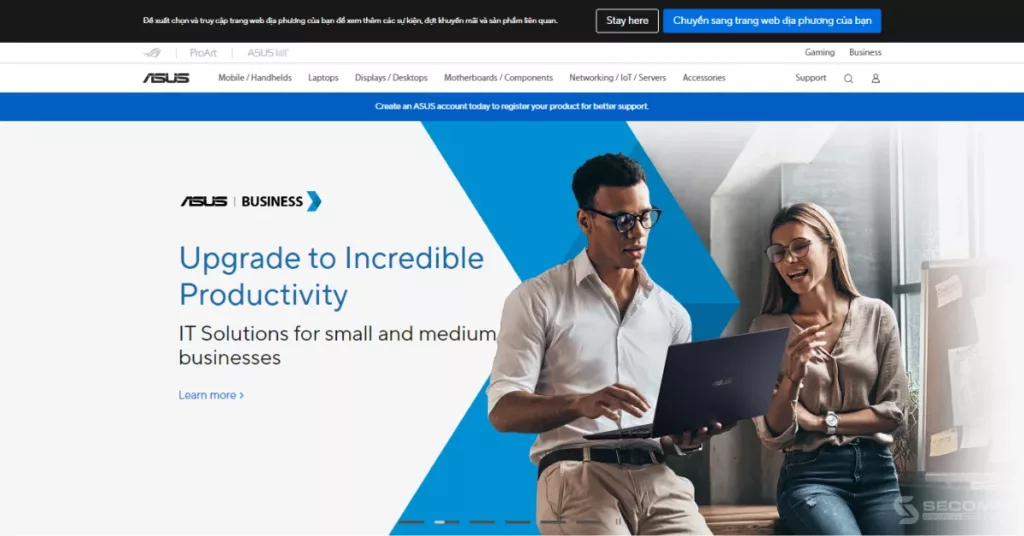
ASUS aimed to have a unified platform for both B2B and B2C eCommerce, so the business chose Adobe Commerce for its flexibility in integration, high customization, and streamlining of support processes.
- Website: https://www.asus.com/
- Platform Used: Adobe Commerce
- Industry: Consumer Electronics
- Traffic: 48.8M/month
- Ranking: 998 (Taiwan) & 2,375 (Global)
Hydro Flask
Hydro Flask is a brand of thermal flasks and water bottles established in 2009 in Seattle, Washington, USA. The brand is known for its high-quality, well-insulated, and visually appealing products.
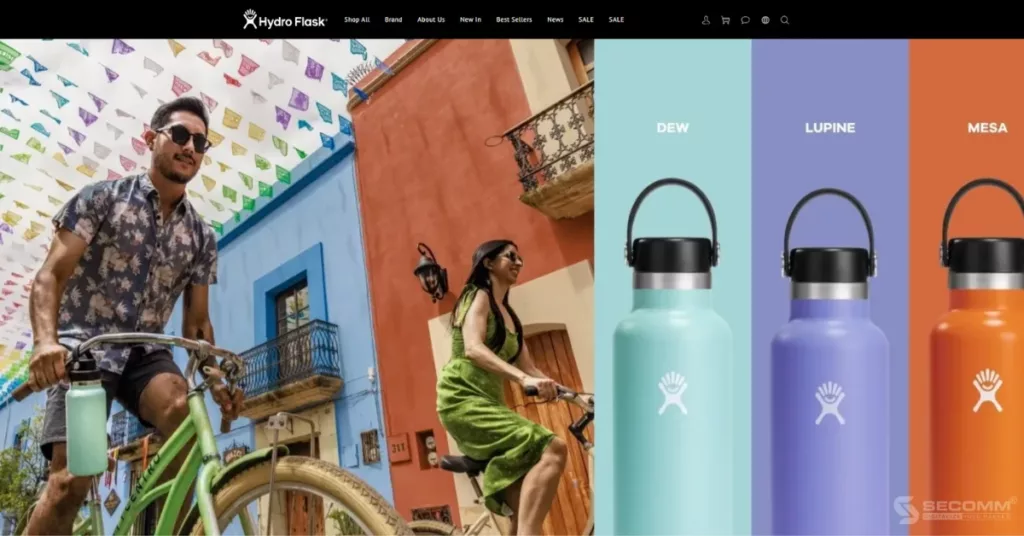
Hydro Flask utilized Magento Open Source to build and develop its eCommerce website due to its ability to provide the necessary features and functionalities.
- Website: https://www.hydroflask.com/
- Platform Used: Magento Open Source
- Industry: Home & Living
- Traffic: 1.6M/month
- Ranking: 6,679 (USA) & 31,775 (Global)
Filson
Filson is an outdoor gear manufacturing company based in Seattle, Washington, USA. The company was established in 1897 by Charles Filson, a tailor and cobbler. Filson specializes in producing high-quality, durable products designed for outdoor activities such as camping, fishing, hiking, etc.

In 2022, Filson adopted Magento 2 to build its eCommerce website. With the microservices architecture of Magento 2, Filson can easily customize and scale its eCommerce website as needed.
- Website: https://www.filson.com/
- Platform Used: Magento Open Source
- Industry: Fashion
- Traffic: 1M/month
- Ranking: 11,546 (USA) & 55,840 (Global)
Alshaya Group
Alshaya is one of the major franchise operators globally, managing brands such as American Eagle Outfitters, H&M, Debenhams, Victoria’s Secret, Bath & Body Works, The Body Shop, Boots, and M.A.C in the United Arab Emirates (UAE). As shopping habits began to change, Alshaya gradually shifted towards developing its eCommerce sector and decided to choose Adobe Commerce to build its website in 2017.
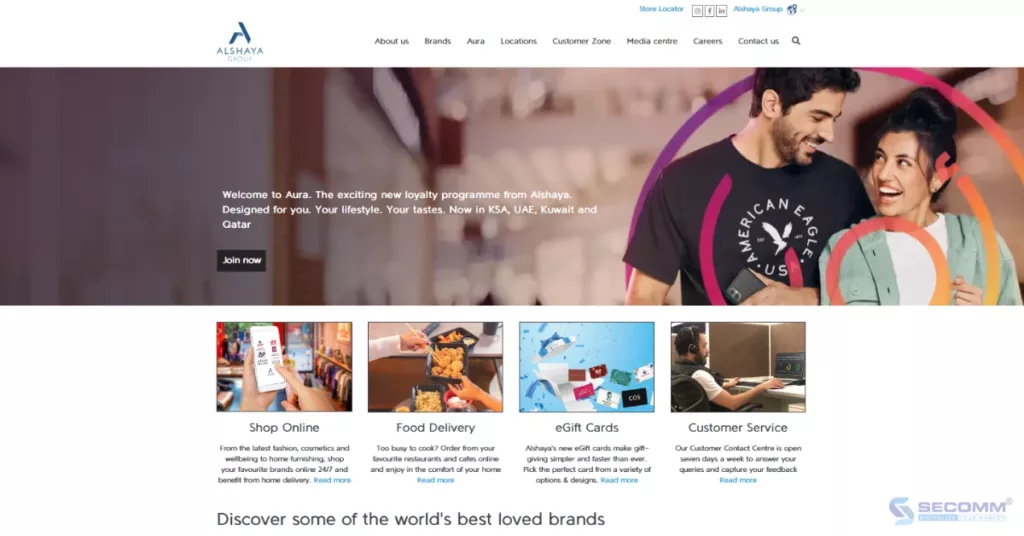
“Thankfully, when COVID-19 hit, we had already built up the digital framework to launch new websites quickly. And because we had built our approach on the Adobe Commerce global reference architecture, we were able to leverage parent configurations rather than building new sites from scratch. With IT complexity removed from the equation, we were able to roll out the new sites in a matter of weeks.” – Marc van der Heijden, Chief Technology Officer, Alshaya Group.
- Website: https://www.alshaya.com/
- Platform Used: Adobe Commerce
- Industry: Retail
- Traffic: 681.7K/month
- Ranking: 747 (UAE) & 63,003 (Global)
Catbird
Catbird is a high-end jewelry brand established in 2004 in New York City, USA. The brand is known for its delicate and artistic designs. Catbird’s products are crafted from various materials, including gold, silver, gemstones, etc.
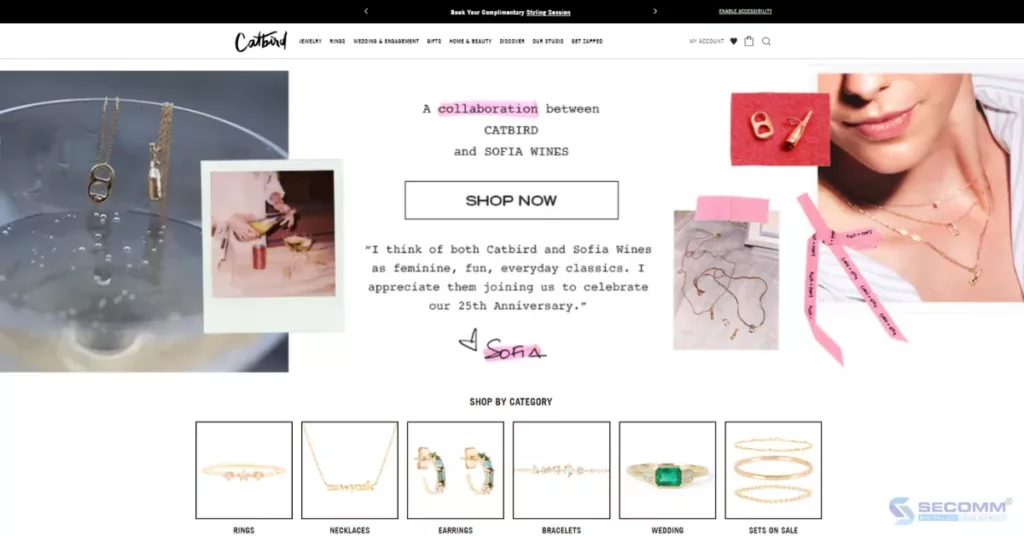
Catbird has utilized Adobe Commerce to build custom functionalities for the jewelry eCommerce industry, including notifications for available, and out-of-stock items, and advance delivery notices to ensure customers can view complete inventory. According to Ali Ahmed, the Founder of Imagination Media, “Like Catbird, Adobe Commerce is a truly robust, dazzling, and creative platform that allows us to build and create basically whatever we want because it is open and extensible”.
- Website: https://www.catbirdnyc.com/
- Platform Used: Adobe Commerce
- Industry: Jewelry
- Traffic: 487.6K/month
- Ranking: 20,501 (US) & 95,772 (Global)
DKNY
DKNY, short for Donna Karan New York, is a high-end fashion and apparel brand founded by designer Donna Karan in 1989. DKNY is known for its youthful, modern, and highly practical fashion products.

DKNY leveraged Magento to build its fashion eCommerce website in 2023. Thanks to the advantages of open source, DKNY prioritizes user interface personalization, showcasing its distinctive brand style, and providing advanced features such as intelligent product search, product previews, and product customization.
- Website: https://www.dkny.com/
- Platform Used: Magento Open Source
- Industry: Fashion
- Traffic: 258K/month
Ranking: 95,191 (US) & 173,066 (Global)
Volkswagen Classic Parts
Volkswagen Classic Parts is a part of the Volkswagen Group, responsible for supplying genuine replacement parts for classic Volkswagen vehicles. Volkswagen Classic Parts is headquartered in Wolfsburg, Germany, and operates in over 100 countries worldwide.
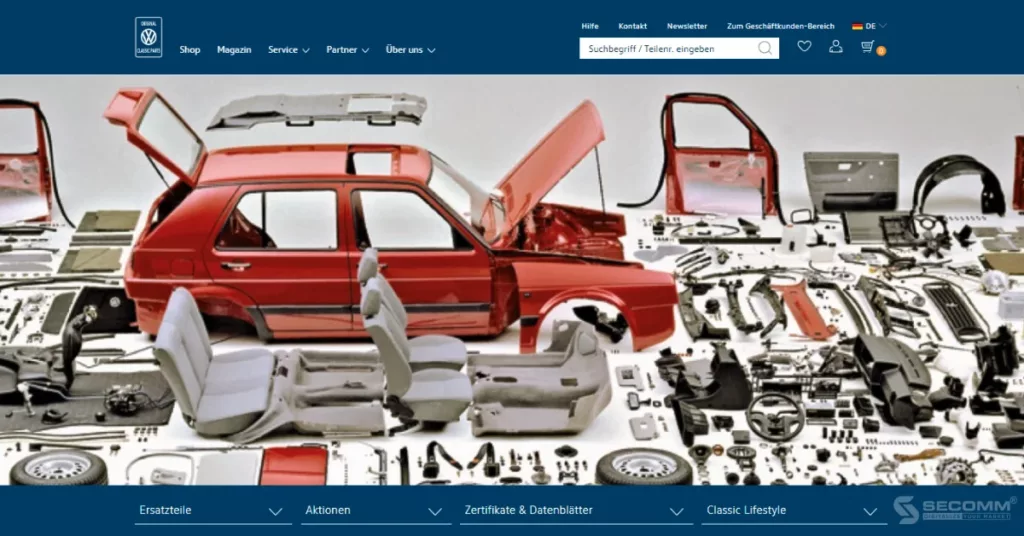
The eCommerce website for Volkswagen parts features around 60,000 accessories, catering to the needs of both new and seasoned Volkswagen enthusiasts, bringing joy to fans of classic Volkswagen vehicles.
Initially, Volkswagen used Magento Commerce 1 for several years and reaped significant benefits from this open-source platform. Recently, Volkswagen Classic Parts decided to upgrade to Adobe Commerce and utilize Adobe Experience Manager to further develop the brand in the eCommerce market.
- Website: https://www.volkswagen-classic-parts.com/
- Platform Used: Adobe Commerce
- Industry: Automotive
- Traffic: 155.1K/month
- Ranking: 12,821 (Germany) & 205,974 (Global)
Laybyland
Laybyland is a ‘Buy Now, Pay Later’ retail business for consumer electronics established by Stuart Duff in 2012 in Australia. After two years of operation, Laybyland realized that the current CMS system using Drupal was not meeting the operational requirements and struggled to handle the growing data volume.
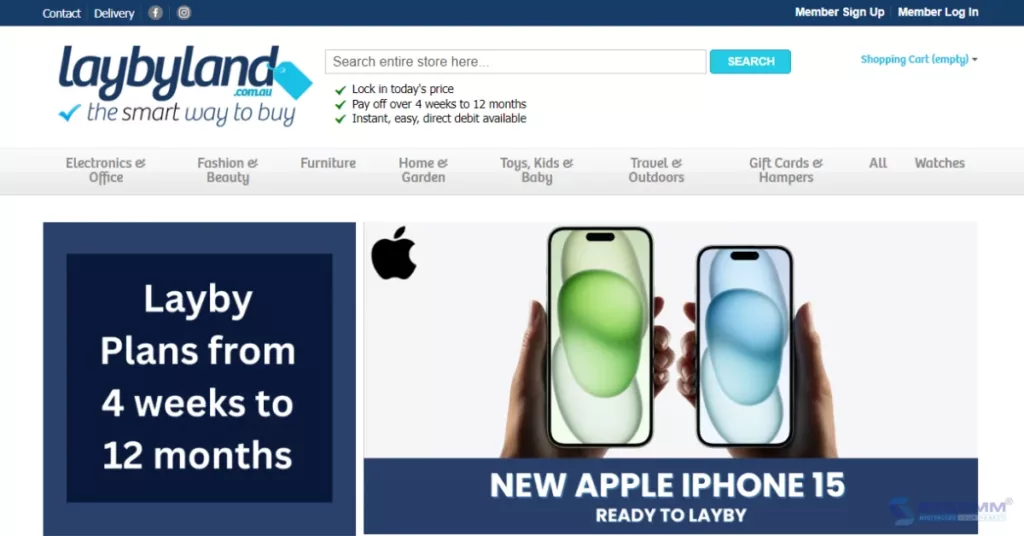
Therefore, Laybyland chose SECOMM to migrate the website to a robust eCommerce platform like Magento Open Source. With over 10 years of operation, thanks to a unique business strategy—the exclusive Lay-by payment process allowing customers to customize the time and frequency of instalments when shopping online—and a professionally controlled eCommerce system by SECOMM, Laybyland expanded the ‘Buy Now, Pay Later’ retail system to two other major markets, the United States and New Zealand.
“SECOMM’s technical expertise allowed us to successfully overcome these development challenges and deploy a website that has performed exactly as we wanted from day one.” – Stuart Duff, CEO at Laybyland
- Website: https://www.laybyland.com.au/
- Platform Used: Magento Open Source
- Industry: ‘Buy Now, Pay Later’ Retail
- Traffic: 80.6K/month
- Ranking: 13,263 (Australia) & 641,341 (Global)
Covento
Covento is a young business in the renewable energy sector, operating in five countries: Denmark, Germany, Spain, the Netherlands, and France. At Covento, users can find the necessary spare parts/components for turbine models from various manufacturers and suppliers.
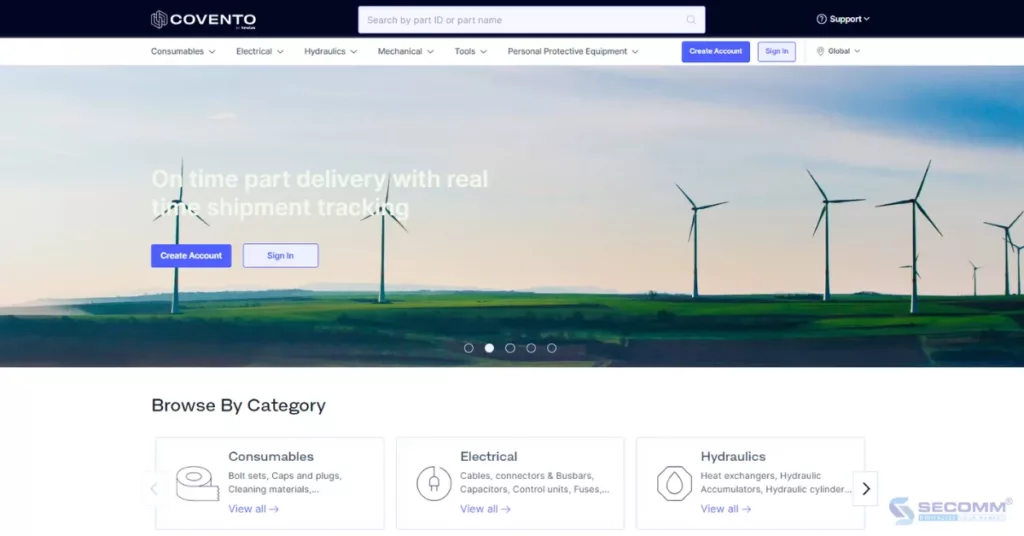
Jill Ashley Brandt, CEO of Covento, plans to leverage the continuous improvements of Adobe Commerce to make Covento more user-friendly for buyers and suppliers in the U.S. market, serving the goal of expanding the business.
- Website: https://covento.com/
- Platform Used: Adobe Commerce
- Industry: Energy
- Traffic: 27.1K/month
- Ranking: 52,014 (Australia) & 3,204,045 (Global)
Di Dong Viet
Di Dong Viet is a reputable brand in the field of electronic devices and a strategic partner of global technology conglomerates such as Apple, Samsung, OPPO, Sony, ASUS, and more.
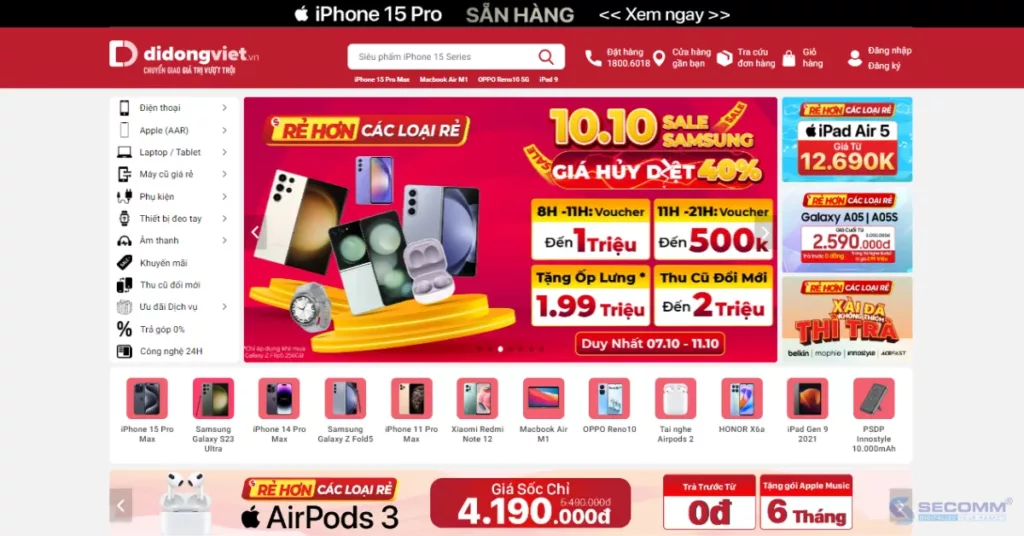
By using Magento Open Source, Di Dong Viet has successfully built a high-quality eCommerce website with features such as product management, shopping cart, online payment, order management, and various other extended features to create a convenient online shopping experience for customers.
- Website: https://didongviet.vn/
- Platform Used: Magento Open Source
- Industry: Consumer Electronics
- Traffic: 4.5M/month
- Ranking: 281 (Vietnam) & 14,617 (Global)
CGV
CGV is one of the top 5 largest cinema chains globally and is a major film distributor and cinema chain in Vietnam, alongside Galaxy, Lotte Cinema, BHD Star Cineplex, and CineStar.

CGV has built an eCommerce website on the Magento Enterprise platform (the paid version of Magento, now known as Adobe Commerce) to meet the feature requirements suitable for large enterprises like CGV.
- Website: https://www.cgv.vn/
- Platform Used: Magento Enterprise (Adobe Commerce)
- Industry: Film
- Traffic: 2M/month
- Ranking: 600 (Vietnam) & 31,466 (Global)
Kids Plaza
Established in 2009, Kids Plaza is a major player in the eCommerce race in the Baby industry. Kids Plaza has deployed an eCommerce website on the Magento platform to efficiently manage a diverse and extensive product portfolio. The brand regularly runs promotional programmes such as gift shopping promotions, flash sales, buy 5 get 1 free, and loyalty point accumulation for attractive rewards.
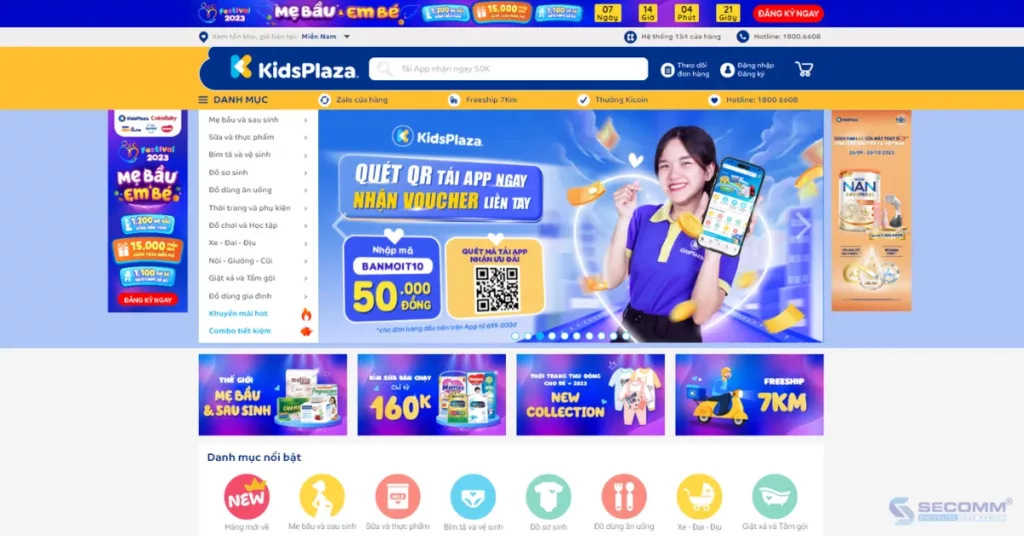
This has contributed significantly to the increase in website traffic on every promotional occasion, and deploying Magento can enhance customization and scalability to handle sudden traffic increases. On average, the website receives about 1 million visits per month.
- Website: https://www.kidsplaza.vn/
- Platform Used: Magento Open Source
- Industry: Mother & Baby
- Traffic: 1.3M/month
- Ranking: 1,047 (Vietnam) & 54,186 (Global)
Hoang Phuc International
Hoang Phuc International is a high-end fashion retailer for Kappa, Ecko Unltd, Superga, Replay, and Staple, established in 1989. After three decades of traditional business development, the brand decided to transition to participate in the eCommerce market.
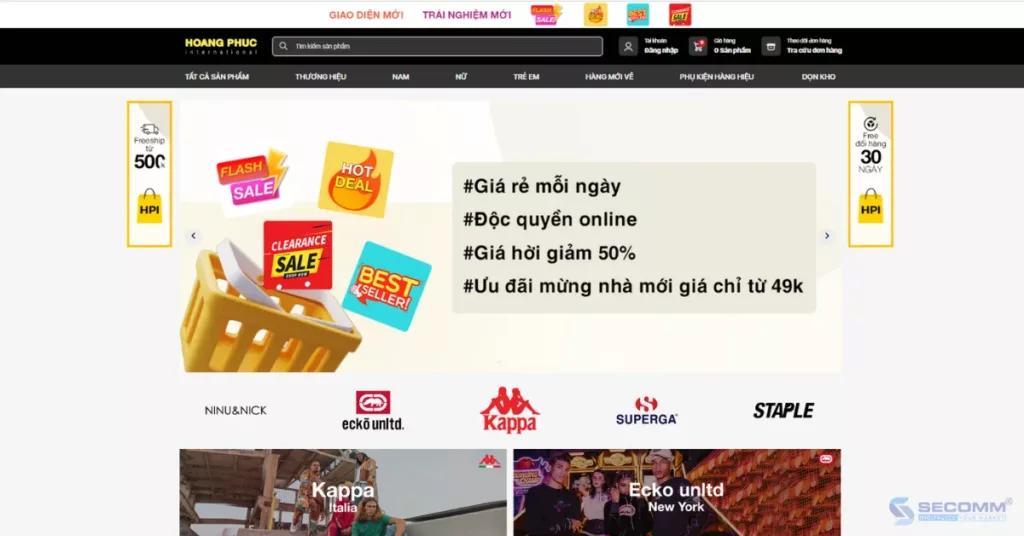
To successfully develop the current eCommerce website, Hoang Phuc has used and converted many platforms. As of now, the business is using the Magento platform – an open-source eCommerce platform specializing in eCommerce.
- Website: https://hoang-phuc.com/
- Platform Used: Magento Open Source
- Industry: Fashion
- Traffic: 248.3K/month
- Ranking: 3,602 (Vietnam) & 171,782 (Global)
Bach Long Mobile
Bach Long is one of the popular retailers of smartphones, tablets, and technology accessories in Vietnam. Similar to other consumer electronics retailers like CellphoneS, Di Dong Viet, Bach Long Mobile also chose the Magento platform to build their websites.

Therefore, the brand’s website has seen significant improvements in features, customization capabilities, and performance, helping the company attract more customers, grow its market share, and increase revenue and profits.
- Website: https://bachlongmobile.com/
- Platform Used: Magento Open Source
- Industry: Consumer Electronics
- Traffic: 197.3K/month
- Ranking: 5,472 (Vietnam) & 254,860 (Global)
On Off
On Off is a lingerie brand established in 2005 with a mission to bring daily comfort to everyone.

On Off has chosen the Magento Open Source version, the free version of Magento, to build its eCommerce website to meet the company’s specific needs for features, customization capabilities, and system scalability.
- Website: https://onoff.vn/
- Platform Used: Magento Open Source
- Industry: Fashion
- Traffic: 156.9K/month
- Ranking: 7,196 (Vietnam) & 326,722 (Global)
EROPI
EROPI is another prominent jewelry brand in Vietnam, specialising in distributing various types of gold, silver, jewelry, gemstones, pearls, wedding jewelry, and feng shui jewelry. After many years of operation, the company has not only expanded its chain of stores nationwide but also developed an online sales channel to meet the shopping needs of customers.
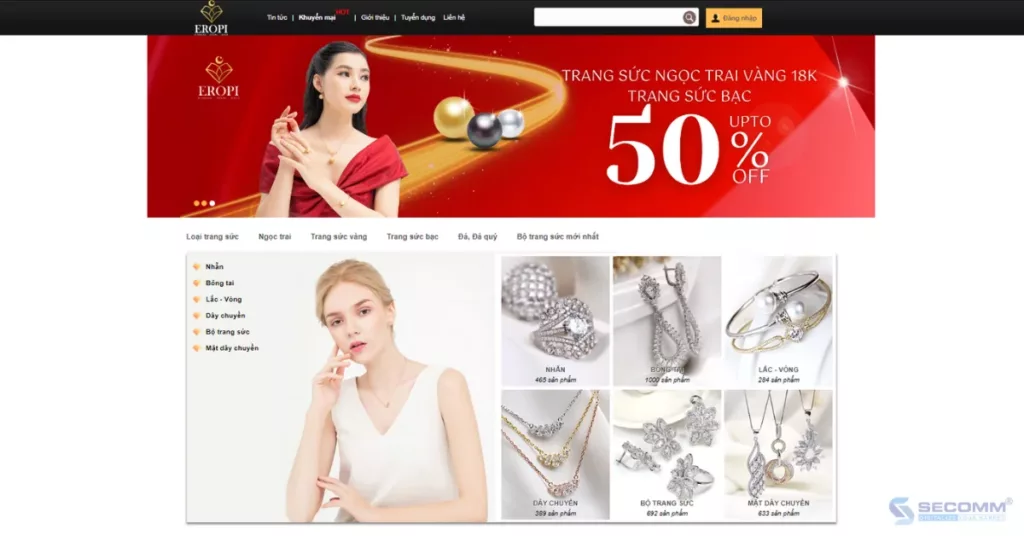
The primary online channel that EROPI focuses on is the eCommerce website built on the Magento Open Source platform with superior customization capabilities. This allows EROPI to develop advanced features and flexible scalability, ensuring the long-term development goals of the business.
- Website: https://eropi.com/
- Platform Used: Magento Open Source
- Industry: Jewelry
- Traffic: 95.8K/month
- Ranking: 13,832 (Vietnam) & 602,063 (Global)
Baya
At first, the company was established in 2006 under the name Uma Furniture Supermarket and officially changed its name to Baya Furniture and Decoration Supermarket in 2019. Despite the name change, the brand still retains its core values and brings customers high-quality furniture with simple, elegant designs, in line with contemporary trends, featuring neutral colours, and each piece having its own beauty.
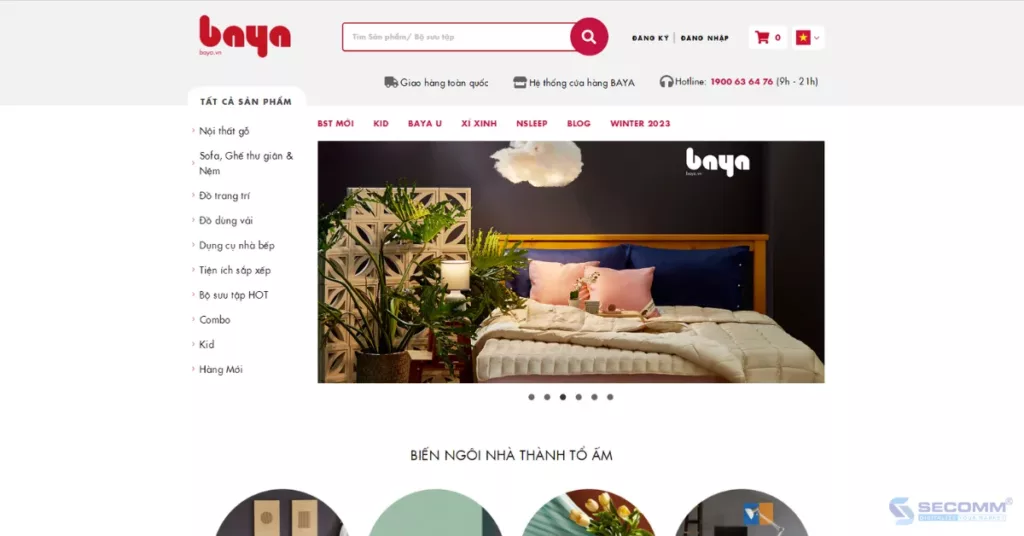
As of the current time, Baya’s website attracts nearly 100,000 visits per month, thanks to the proper investment in building an eCommerce furniture website with the open-source Magento platform. The website features an attractive, captivating interface that is user-friendly.
- Website: https://baya.vn/
- Platform Used: Magento Open Source
- Industry: Furniture
- Traffic: 76K/month
- Ranking: 7,544 (Vietnam) & 352,023 (Global)
Rohto Vietnam
Rohto is a well-known Japanese pharmaceutical and cosmetic brand established in 1899, specialising in manufacturing and selling eye care, skincare, lip care, hair care, cosmetics, pharmaceuticals, etc.

Rohto Vietnam’s eCommerce website is built on the Magento Enterprise version. Through Magento, the website is designed with an attractive and user-friendly interface, integrating features and customer support services to make shopping easier and more convenient.
- Website: https://shop.rohto.com.vn/
- Platform Used: Magento Enterprise
- Industry: Health
- Traffic: 69.7K/month
- Ranking: 24,537 (Vietnam) & 853,571 (Global)
Annam Gourmet
Annam Gourmet, born out of a deep passion for European cuisine by the founders of the Annam Group, has been a strong player in the Vietnamese market for over 20 years. The Annam Gourmet store chain has expanded significantly, offering imported high-quality products such as premium food, wine, beverages, and cosmetics.
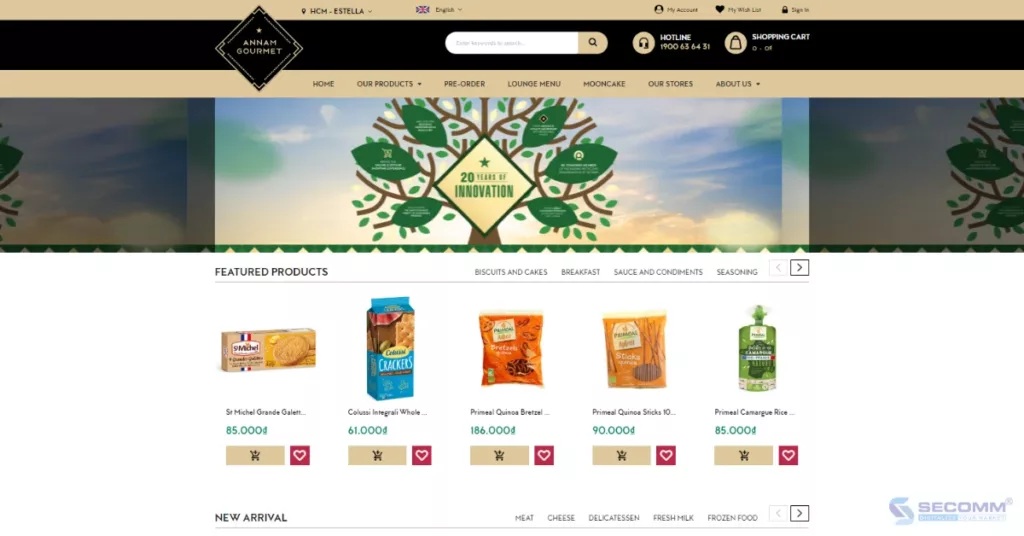
While Annam Gourmet had an existing online presence, it was primarily used for brand development, and the effectiveness of eCommerce was not a primary focus. To ensure the website is fully developed and operates smoothly, Annam Gourmet chose SECOMM and strategic partner Synova to develop the eCommerce website on the Magento Open Source 2 platform.
- Website: https://shop.annam-gourmet.com/
- Platform Used: Magento Open Source
- Industry: Food & Beverage
- Traffic: 49.4K/month
- Ranking: 16,711 (Vietnam) & 643,508 (Global)
Here is a list of the top 20 eCommerce websites using the Adobe Commerce (Magento) eCommerce platform in both the international and Vietnamese markets.
Is the Adobe Commerce (Magento) development solution suitable?
With deep experience and the development of complex eCommerce systems for clients such as Changi Airport Group (Singapore), Trentham Estate (Australia), and The Warehouse (Vietnam), SECOMM understands the challenges in choosing a platform and implementing eCommerce that businesses are facing.
Contact SECOMM now or call directly on the hotline (028 7108 9908) for free advice on developing eCommerce on the Adobe Commerce (Magento) platform!
- Comprehensive understanding: Provide a comprehensive eCommerce solution from consulting, development, and operation to the growth of the eCommerce system.
- Deep expertise: Over 8 years of experience in implementing complex eCommerce systems for clients from various countries.
- Customized solutions: Propose eCommerce solutions including technology architecture and a suitable team for each business.
- Flexible progress: The project timeline and progress are adjusted according to the specific needs of the business.
 2
2

 5,750
5,750

 0
0

 1
1
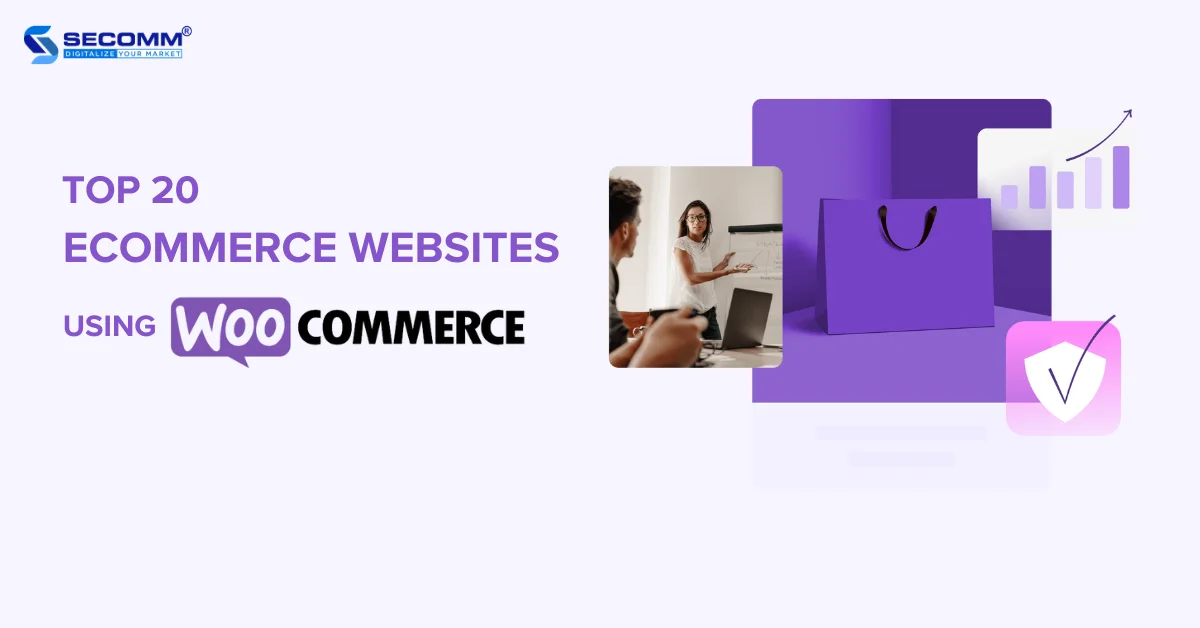
TOP 20 ECOMMERCE WEBSITES USING WOOCOMMERCE
WooCommerce is an open-source plugin for WordPress, that enables businesses to turn their brand’s content website into an online store. According to WooCommerce’s report, as of July 2023, over 6 million eCommerce websites are using WooCommerce, capturing more than 25% of the global eCommerce market share.
Here are some well-known brands using WooCommerce in both the international and Vietnamese markets.
Dr. Scholl’s
Established by Dr. William Mathias Scholl over 110 years ago, Dr. Scholl’s has become a trusted name in foot health care. The brand is known for various innovative products, from shoe insoles and foot-shaping tools to specialized treatment methods.
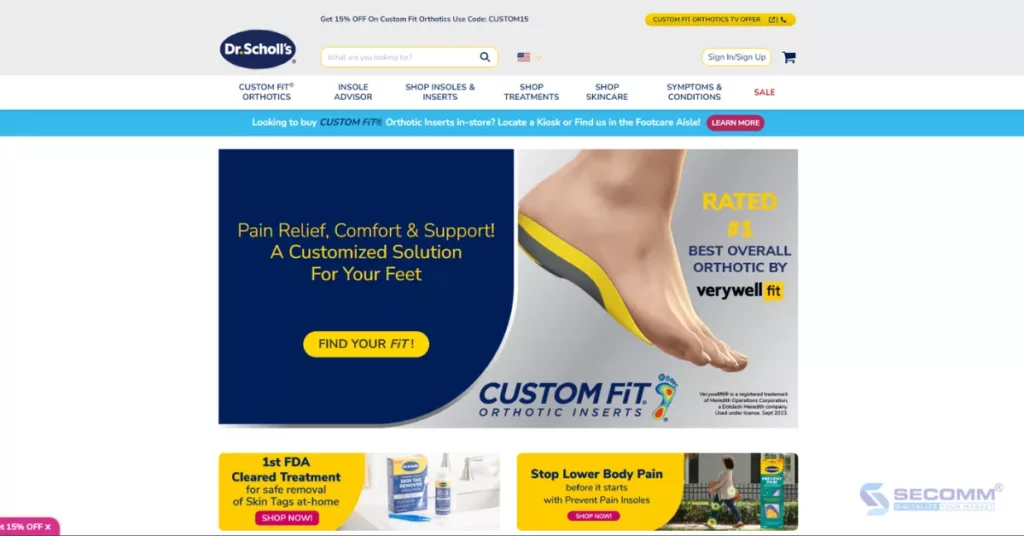
Despite being a globally renowned brand, Dr. Scholl’s continues to advance with strategies to maximize online sales. By utilizing the open-source eCommerce platform WooCommerce, Dr. Scholl’s has streamlined the process of building an eCommerce website and rationalized the online sales process.
- Website: https://www.drscholls.com/
- Industry: Health
- Traffic: 662.1K/month
- Ranking: 18,381 (US) & 89,309 (Global)
Wienerschnitzel
Wienerschnitzel is the world’s largest hot dog chain, founded by John Galardi in 1961. Currently serving over 120 million hot dogs annually, Wienerschnitzel’s website is built using WooCommerce to enter the eCommerce market.

This system also connects franchisees with the main management system, allowing customers to easily locate the nearest restaurants through Google Maps API.
- Website: https://www.wienerschnitzel.com/
- Industry: Food and Beverage
- Traffic: 395.1K/month
- Ranking: 20,279 (US) & 115,404 (Global)
Superdrug Health Clinics
Superdrug Health Clinics is the second-largest well-known health clinic in the UK, with a presence throughout the United Kingdom. The clinics at Superdrug offer various eCommerce pharmaceutical services such as vaccinations for children, sexual health screenings, flu vaccinations, and occupational health services.
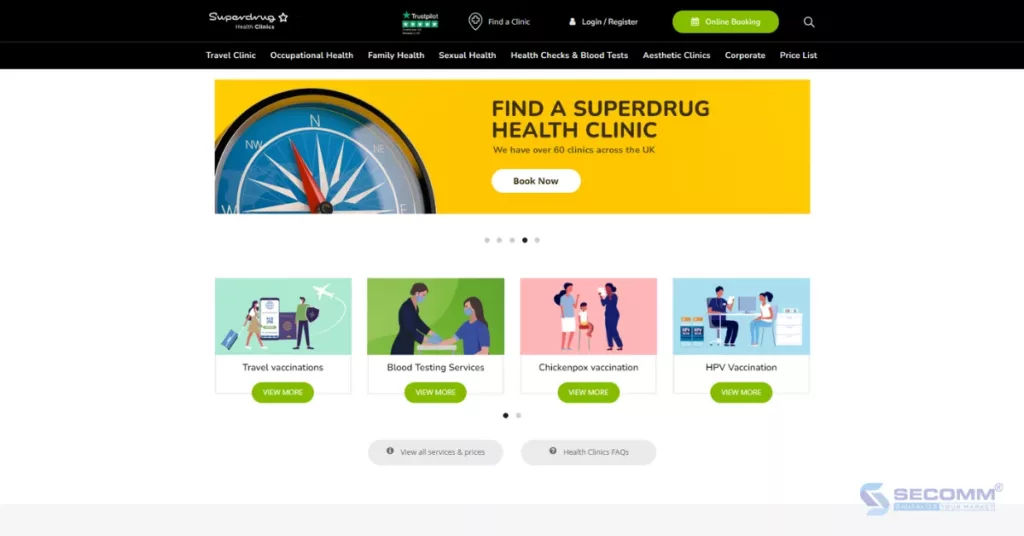
By building a basic eCommerce website using WooCommerce, customers can schedule free consultations with nurses/pharmacists or book appointments at specific locations.
- Website: https://healthclinics.superdrug.com/
- Industry: Health
- Traffic: 390.8K/month
- Ranking: 120,604 (UK) & 387,012 (Global)
GoComics
GoComics is a popular online comic and cartoon business in the United States. Some iconic cartoons associated with GoComics include Calvin and Hobbes, Garfield, Peanuts, and The Far Side, alongside recent successes like Pearls Before Swine, The Boondocks, and Foxtrot.
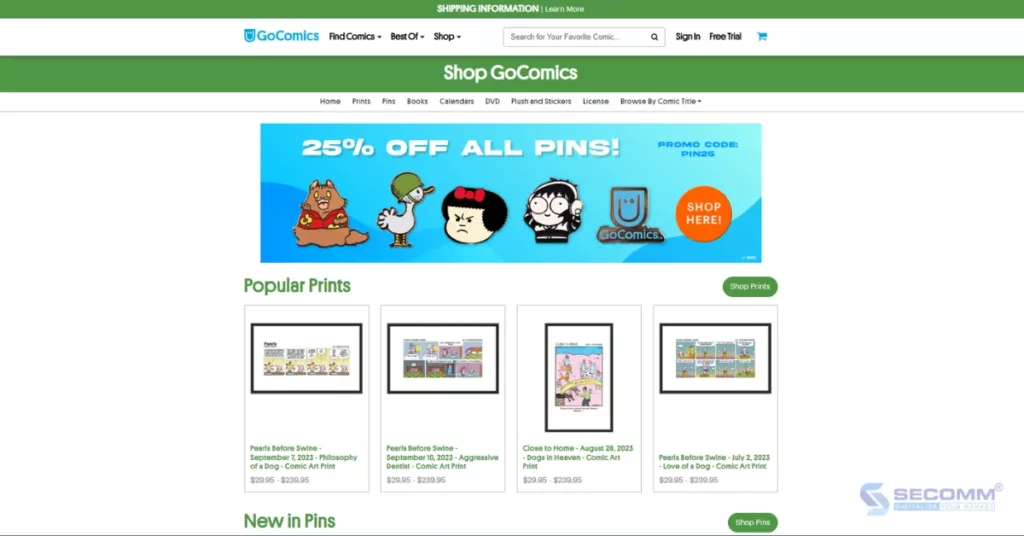
By building a WooCommerce website, users can choose between two membership options – free and premium – to gain personalized access to the GoComics library and shop online for items such as art prints, books, and calendars, ideal for comic enthusiasts of all ages.
- Website: https://store.gocomics.com/
- Industry: Bookstore
- Traffic: 134.4K/month
- Ranking: 50,379 (US) & 325,404 (Global)
The Kind Pen
The Kind Pen is a vape (electronic cigarette) manufacturing company based in Ocean City, New Jersey, USA. With a lifetime warranty and over 1,000,000 satisfied customers, this brand has quickly become a trusted name in the industry.
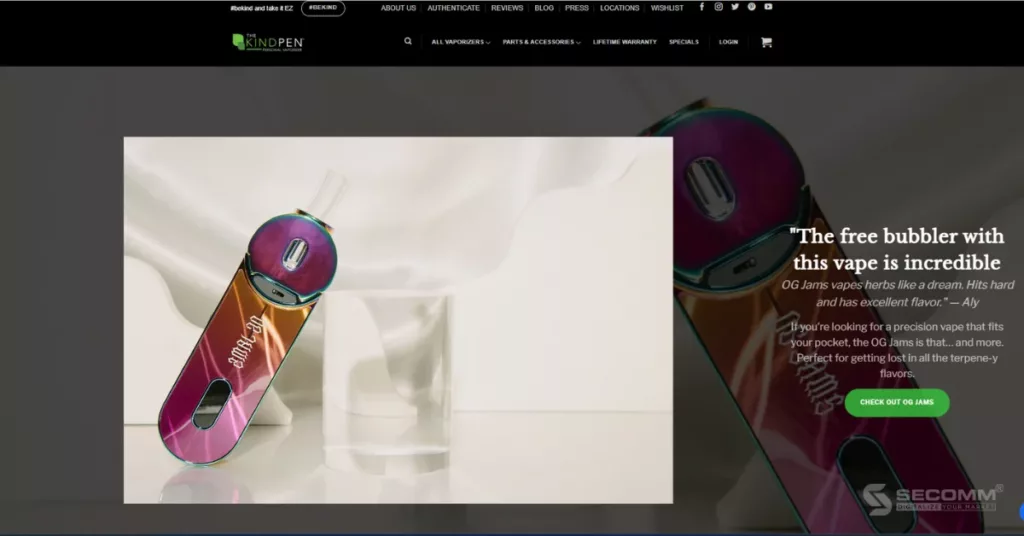
Kind Pen has decided to use WooCommerce to enhance the user experience on its online store. Images are optimized and converted into fast-loading formats without compromising quality, CSS and JavaScript files are compressed and merged, and with WordPress and WooCommerce extensions, the results have yielded unexpected benefits for user experience, such as a more than 35% increase in website loading speed.
- Website: https://www.thekindpen.com/
- Industry: Consumer Electronics
- Traffic: 98.5K/month
- Ranking: 124,995 (US) & 657,668 (Global)
Badeloft
Badeloft is an online retailer of bathroom fixtures founded by Cedric Christiani in Berlin, Germany, in 2009. After achieving certain successes in their home country, Cedric set his sights on the U.S. market. He recruited some high school friends, Eric Jensen and Tyler Kuhlman, and together, they established Badeloft USA at the end of 2013. Today, the company has rapidly expanded to the point where its sales have surpassed the European market.
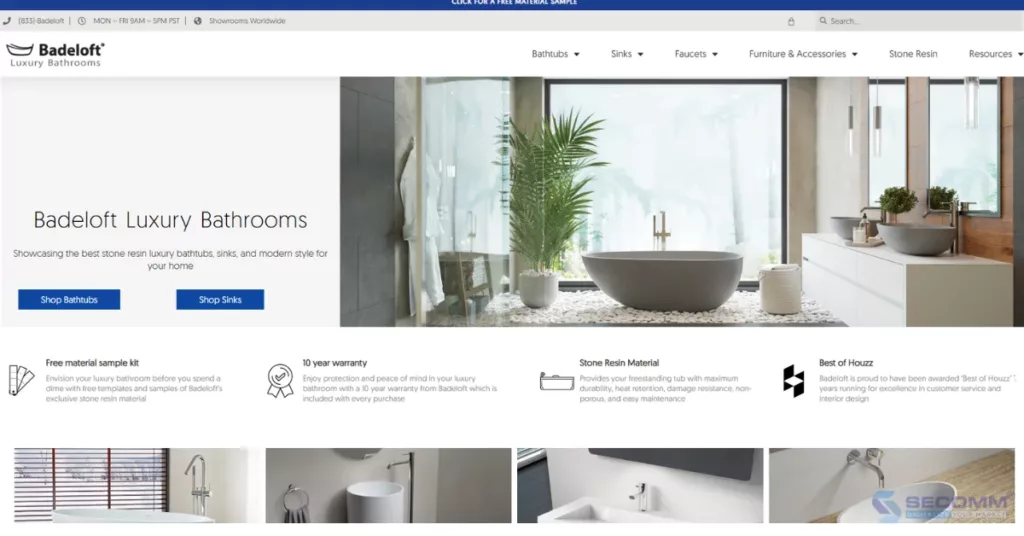
In 2017, Badeloft decided to transition its eCommerce website platform from X-Cart to WooCommerce due to its customization capabilities and the availability of numerous extensions.
- Website: https://www.badeloftusa.com/
- Industry: Furniture
- Traffic: 97.7K/month
- Ranking: 115,604 (US) & 497,012 (Global)
All Blacks
All Blacks is the national rugby team of New Zealand and is the most successful international sports team in the past 100 years. With such a long and illustrious history, it’s no surprise that the team’s jerseys, training gear, and support equipment are highly favoured by fans worldwide.

This provided the foundation for All Blacks to establish an online store for the brand on WooCommerce, offering a variety of products for supporters of all ages.
“We selected WooCommerce as it allowed for easy integration into the team’s other back-office systems.“– Norm McKenzie, Meta Digital
- Website: https://allblackshop.com/
- Industry: Fashion
- Traffic: 87.6K/month
- Ranking: 6,757 (New Zealand) & 434,042 (Global)
Telldus
Telldus is a Swedish brand specializing in home automation products, aiming to provide simple solutions to everyday problems to enhance one’s quality of life tremendously.
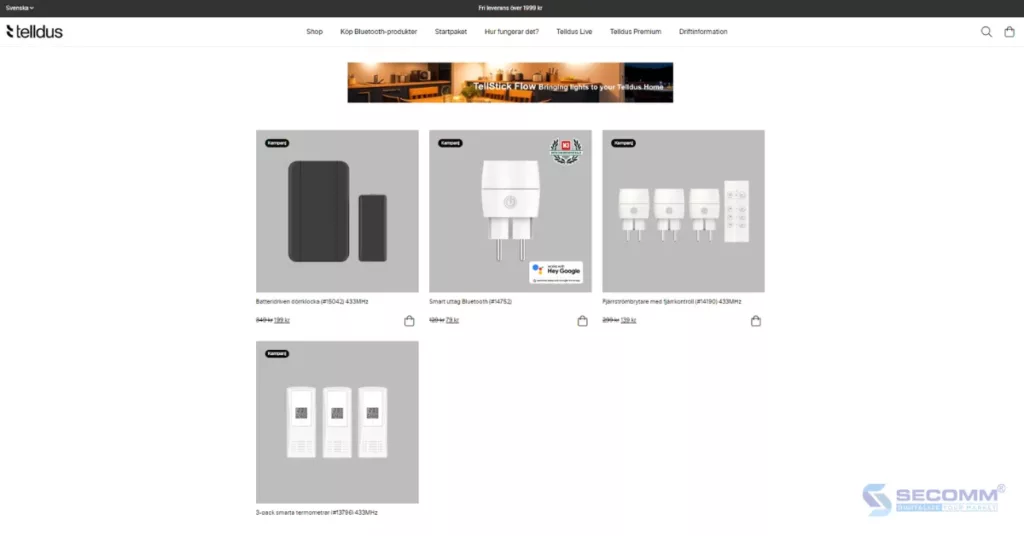
“We believe that simple solutions to small everyday problems can increase one’s quality of life tremendously.”
To expand its customer base in Sweden, Tellus chose WooCommerce to build its website due to its customization capabilities and support for integration with enterprise resource planning (ERP) systems and product information management (PIM).
- Website: https://telldus.com/
- Industry: Consumer Electronics
- Traffic: 86.7K/month
- Ranking: 7,721 (Sweden) & 449,029 (Global)
Grace Loves Lace
Grace Loves Lace is a wedding fashion brand founded by Megan Ziems in 2011 in Australia. The brand is renowned for its beautiful, handcrafted, and custom-fitted wedding attire.
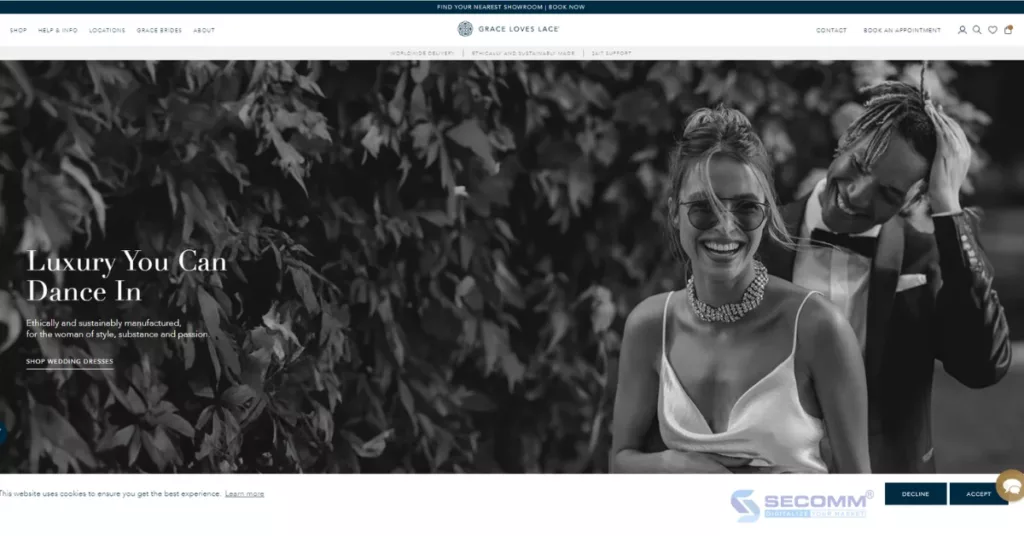
After years of development in both offline and online markets, Grace Loves Lace has become one of the most popular and successful eCommerce websites for wedding fashion nationwide. The success is, in part, attributed to the WooCommerce website system designed to focus on professional product images and optimized for high conversion rates and mobile-friendliness.
- Website: https://graceloveslace.com.au/
- Industry: Fashion
- Traffic: 61.8K/month
- Ranking: 8,597 (Australia) & 471,233 (Global)
Daelmans Stroopwafels
Daelmans Stroopwafels is the world’s leading company in Stroopwafels (traditional Dutch syrup waffles). Established in 1909, Daelmans has elevated the stroopwafel to become a globally popular pastry.
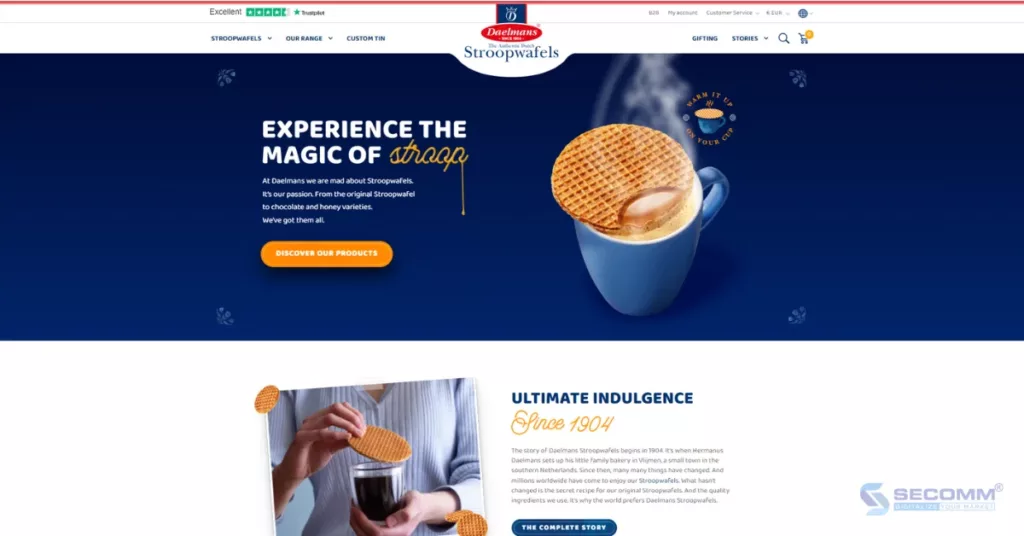
Over the years, the small bakery in Vlijmen has evolved into an international business. Therefore, building a WooCommerce website is essential, allowing customers to shop online and design their custom stroopwafel boxes.
- Website: https://www.stroopwafels.com/
- Industry: Food and Beverage
- Traffic: 50K/month
- Ranking: 38,108 (Netherlands) & 1,062,929 (Global)
Hai Trieu
Established in 1991, Hải Triều has over 30 years of experience in the watch market. To become the leading watch retailer in Vietnam, Hải Triều has combined its eCommerce strategy on the WooCommerce platform with a unique business model to adapt to changes in the market and consumer preferences.
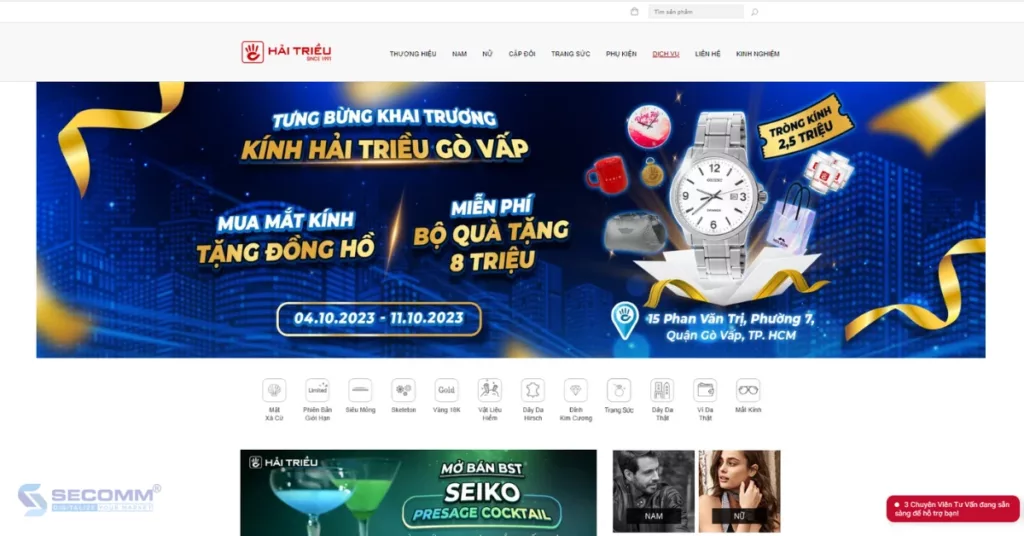
As of now, Hai Trieu’s eCommerce website has over 2 million monthly visits and is a prominent figure consistently topping the rankings in the fashion eCommerce sector in Vietnam (according to iPrice).
- Website: https://donghohaitrieu.com/
- Industry: Fashion
- Traffic: 2.5M/month
- Ranking: 584 (Vietnam) & 29,249 (Global)
Dien Thoai Vui
Dien Thoai Vui – The name carries a commitment to bring joy and happiness to customers with damaged phones or other electronic devices such as laptops, tablets, smartwatches, etc.
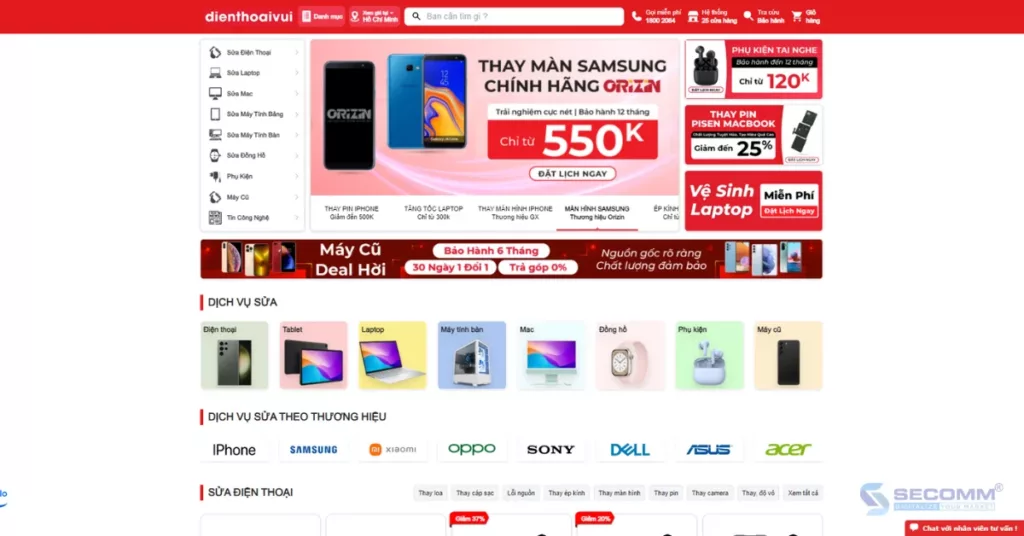
After many years of operation, Dien Thoai Vui has become a familiar destination for many customers both online and offline. The website system of Dien Thoai Vui is built on WooCommerce, allowing customization to a certain extent for the consumer electronics industry’s functionalities, as well as supporting integration with many third-party services.
- Website: https://dienthoaivui.com.vn/
- Industry: Consumer Electronics
- Traffic: 1.4M/month
- Ranking: 1,137 (Vietnam) & 56,958 (Global)
Clickbuy
Clickbuy is a well-known retail system for technology products in Vietnam, established in 2012. Currently, the Clickbuy system has expanded to include 5 stores and 2 modern service centres in Hanoi and Ho Chi Minh City.
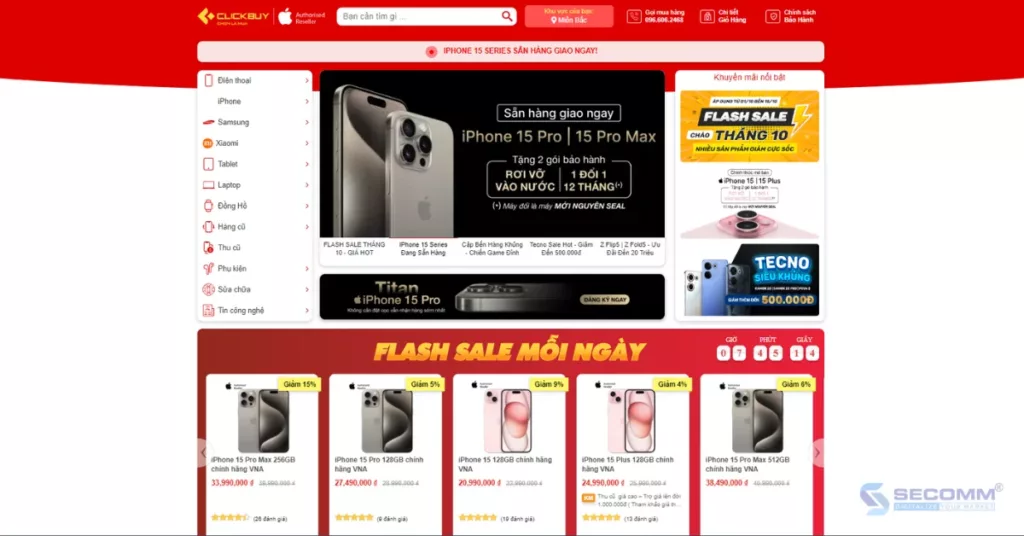
Similar to Dien Thoai Vui, Clickbuy is also built on WooCommerce due to its customization capabilities and integration with many third-party services through WordPress.
- Website: https://clickbuy.com.vn/
- Industry: Consumer Electronics
- Traffic: 1.2M/month
- Ranking: 1,254 (Vietnam) & 64,647 (Global)
Nha Thuoc Than Thien
Nha Thuoc Than Thien is a retail pharmacy chain meeting GPP standards in Vietnam. This brand specializes in prescription drugs, over-the-counter medicines, and some other healthcare products.
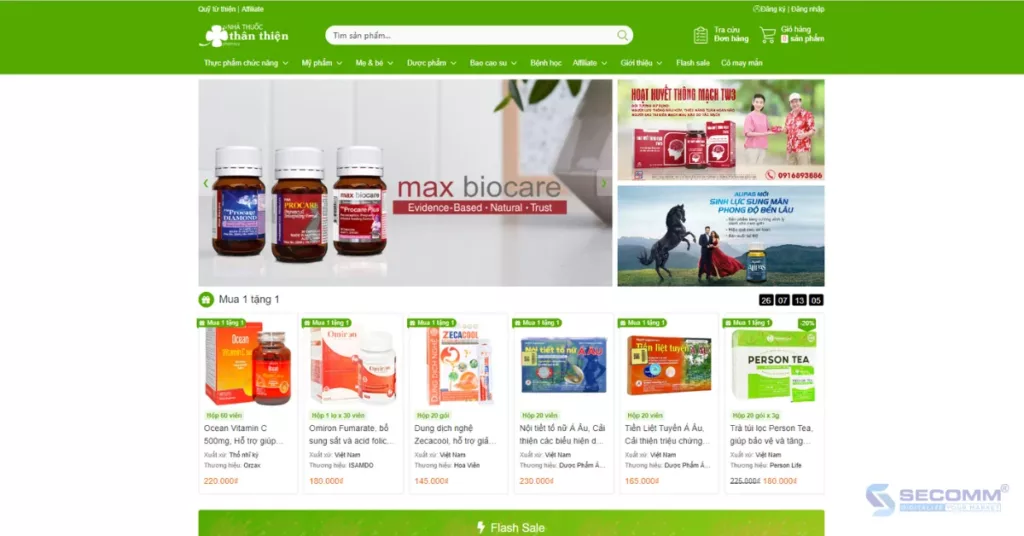
The business combines an offline pharmacy model with an online pharmacy through its main sales channel, an eCommerce website developed with WooCommerce. The website is designed for easy navigation, featuring basic functionalities that help customers easily search for products, make purchases, and track orders.
- Website: https://nhathuocthanthien.com.vn/
- Industry: Pharmacy
- Traffic: 253.5K/month
- Ranking: 5,781 (Vietnam) & 268,868 (Global)
Paula’s Choice
Paula’s Choice is a skincare and cosmetics brand founded by Paula Begoun, a leading expert in beauty and skincare. This brand is renowned for producing high-quality and meticulously researched skincare products, often recognized for their simplicity and transparency in ingredient disclosure.
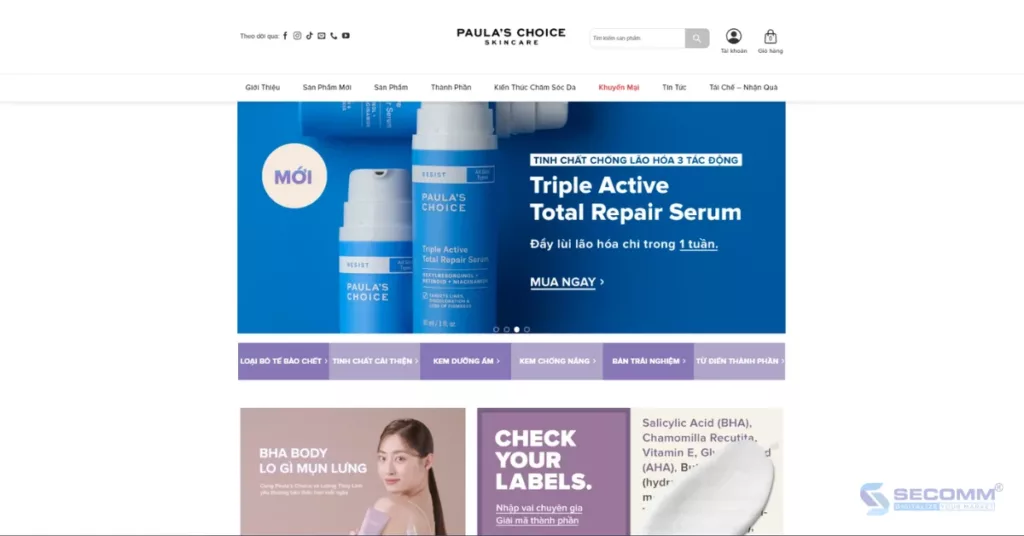
After establishing a presence in the Vietnamese market, Paula’s Choice decided to build a website on the WooCommerce platform for the ability to customize the website and leverage the existing functional system.
- Website: https://paulaschoice.vn/
- Industry: Cosmetics
- Traffic: 211.5K/month
- Ranking: 4,170 (Vietnam) & 197,732 (Global)
Bo Shop
Beauty enthusiasts in Ho Chi Minh City undoubtedly know about Bo Shop, a brand that offers a wide range of quality cosmetics from skincare to makeup at specific and affordable prices, catering to all beauty care needs.
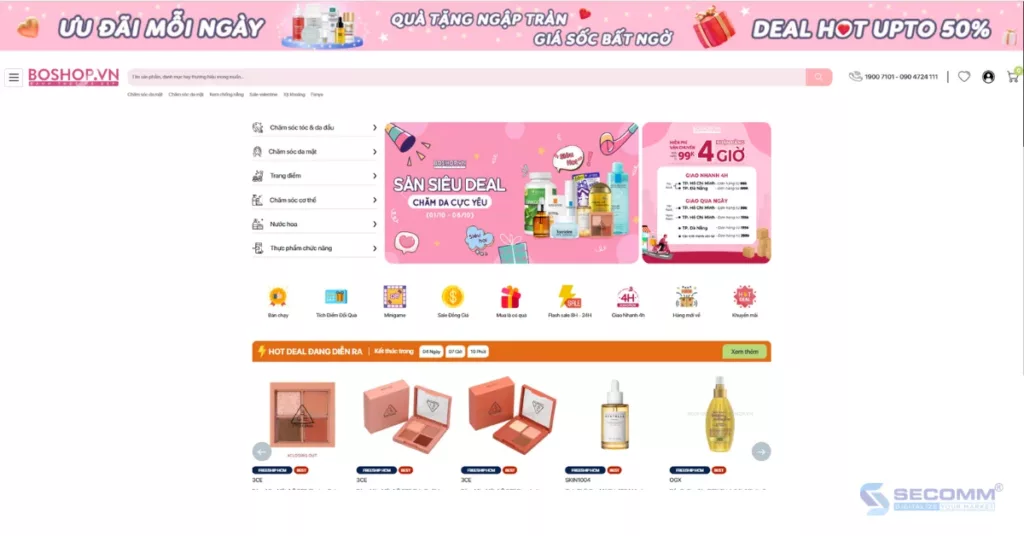
To become the leading cosmetics retail brand in Vietnam, the company swiftly developed an eCommerce website with WooCommerce to align with modern business trends.
- Website: https://www.boshop.vn/
- Industry: Cosmetics
- Traffic: 186.8K/month
- Ranking: 6,409 (Vietnam) & 298,796 (Global)
AB Beauty World
AB Beauty World (ABBW) emerged amid the Covid-19 pandemic in 2020, positioning itself as the leading family cosmetics hypermarket in Vietnam. Despite the seemingly untimely launch, the brand did not succumb to adversity.
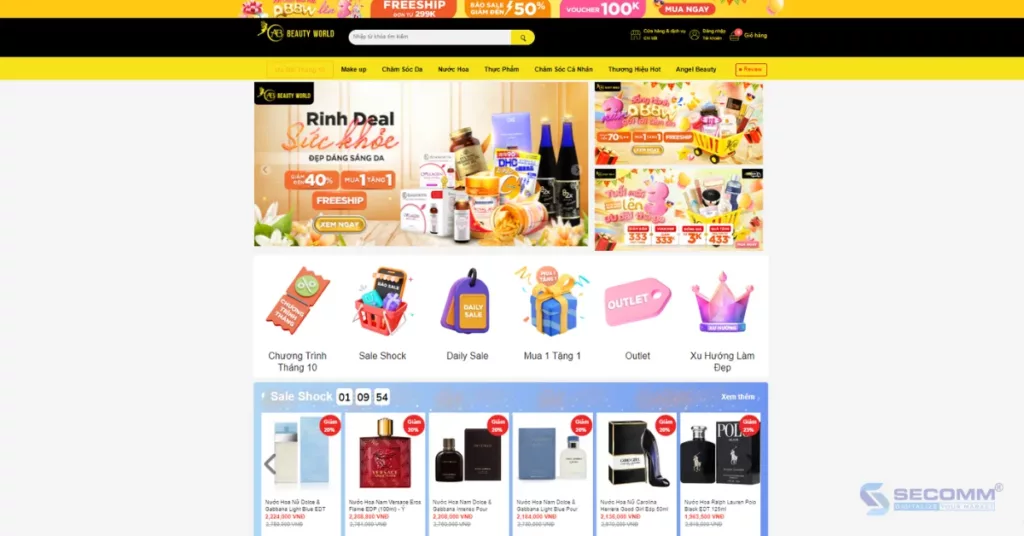
Just two years after opening its first store, AB Beauty World has grown and expanded to nearly 20 branches across districts and neighbourhoods in Ho Chi Minh City, thanks to timely adaptation and a focus on eCommerce development.
The cosmetics selling website of AB Beauty World is built with WooCommerce, featuring industry-specific design and functionality. In a short time since its launch, the website has garnered high traffic for a newcomer in the digital transformation race.
- Website: https://abbeautyworld.com/
- Industry: Cosmetics
- Traffic: 83.8K/month
- Ranking: 22,173 (Vietnam) & 911,443 (Global)
Orchard
Founded in 2004, Orchard is the destination for over 200 premium perfume brands worldwide. To become the number one perfume retail brand in Vietnam, Orchard early on implemented eCommerce to tap into the ‘gold mine’ of this market.
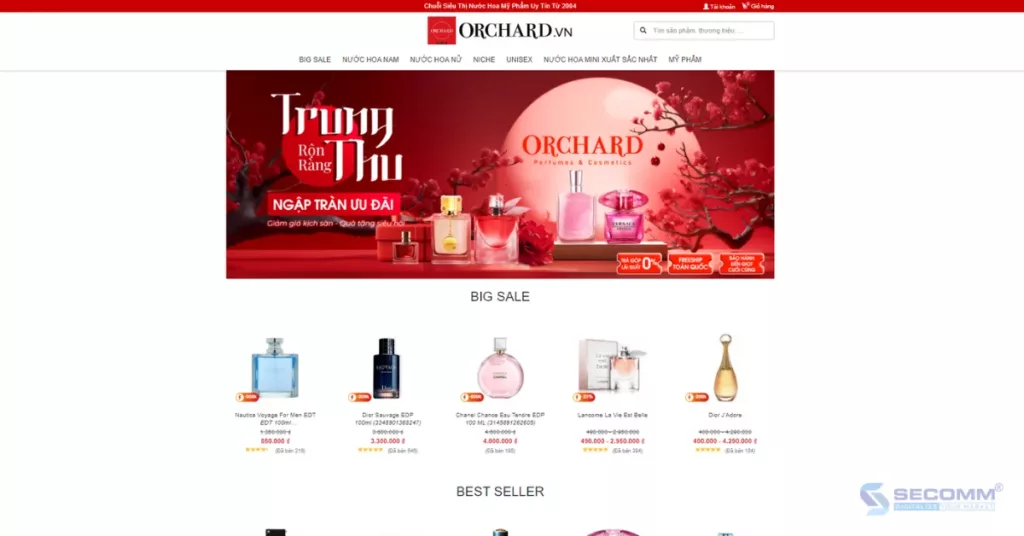
To date, Orchard’s eCommerce website, built with WooCommerce, is the top choice for customers who love to shop for perfumes online.
- Website: https://orchard.vn/
- Industry: Perfume
- Traffic: 67.2K/month
- Ranking: 19,314 (Vietnam) & 772,251 (Global)
Nha Xinh
With a minimalist and cosy interior design style, Nhà Xinh (Beautiful Home) chooses simplicity for each of its products. This is evident in the eCommerce website’s interface, which is built on the WooCommerce platform, and features a simple and user-friendly design.
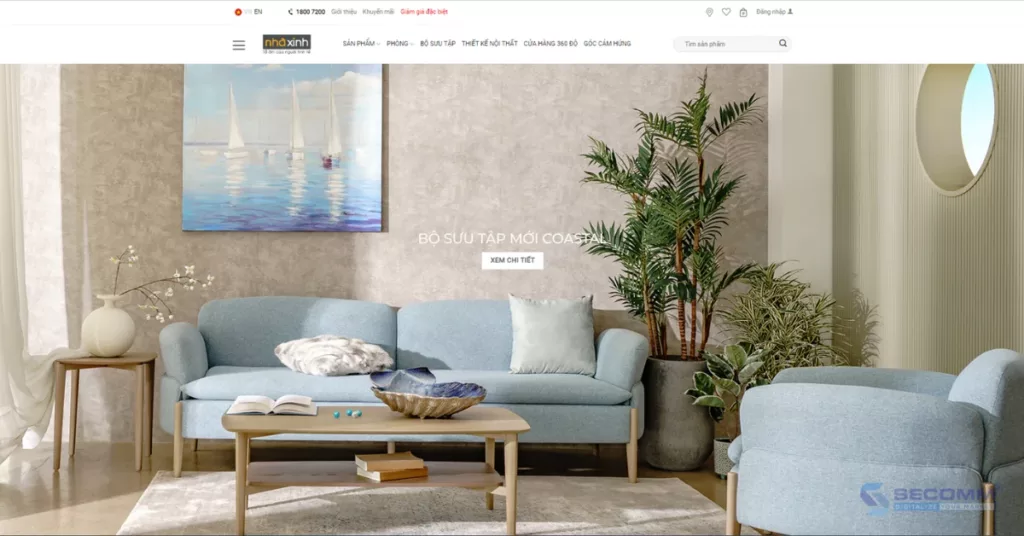
In addition, Nha Xinh’s website incorporates 360-degree technology, allowing customers to experience the company’s furniture products remotely in a realistic manner, exploring every nook and cranny of the room and every angle of the product with detailed information and pricing for each item.
- Website: https://nhaxinh.com/
- Industry: Furniture
- Traffic: 41.6K/month
- Ranking: 41,251 (Vietnam) & 1,547,325 (Global)
Winecellar
Established in 2007, Vietnam Wine Cellar Co., Ltd. is one of the largest wine companies in Vietnam, specializing in providing a wide range of products, including wine, beer, whiskey, food, mineral water, tea, and high-quality ceramics.
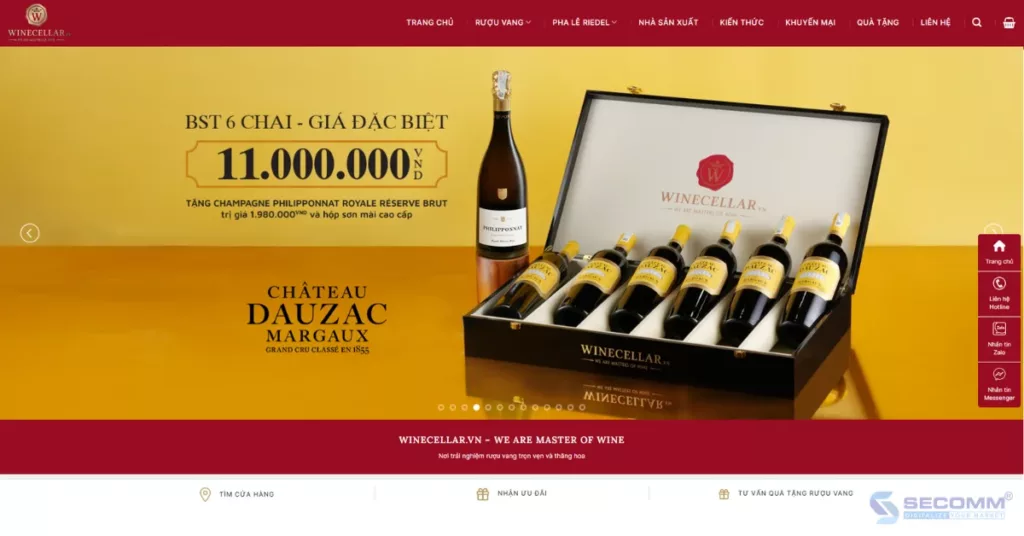
Winecellar pursues an eCommerce business model by investing in building a website on the WooCommerce platform. Through this, the company can easily reach numerous potential customers in the online market.
- Website: https://winecellar.vn/
- Industry: Wine
- Traffic: 31.4K/month
- Ranking: 73,054 (Vietnam) & 3,034,069 (Global)
Above is a list of the top 20 eCommerce websites using the WooCommerce platform in both the international and Vietnamese markets.
With deep expertise and experience in developing complex eCommerce systems on WooCommerce for various clients such as Laybyland (Australia, the US, New Zealand), Jasnor (Australia, New Zealand), and The Warehouse (Vietnam), SECOMM understands the challenges in choosing a platform and implementing eCommerce solutions that businesses are currently facing.
Contact SECOMM today or call directly on the hotline (028 7108 9908) for a free consultation on deploying a WooCommerce website for your brand.
 2
2

 5,194
5,194

 0
0

 1
1
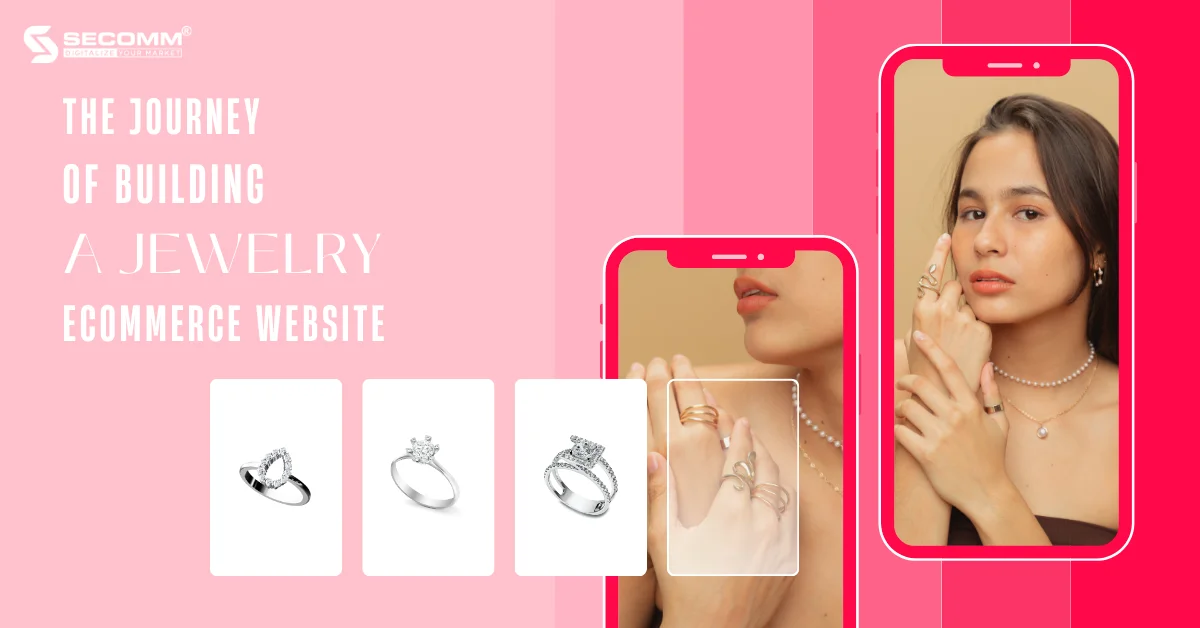
THE JOURNEY OF BUILDING E JEWELRY ECOMMERCE WEBSITE
According to Grand View Research, the global jewelry eCommerce market is predicted to reach USD 117.8 billion by 2027, with a CAGR of 12.2% from 2022 to 2027. According to Research and Markets, the United States is the largest jewelry eCommerce market in the world, with expected revenue of USD 45.6 billion by 2027. Other regions, including China, India, and Southeast Asia, are also experiencing rapid growth.
Several jewelry brands have successfully implemented eCommerce early on and achieved unexpected success, such as Cartier, Tiffany & Co., PNJ, ANA LUISA, Missoma, etc. The common characteristic of these brands lies in comprehensive eCommerce websites that cater to customers’ needs for purchasing jewelry and gemstones.
For more information:
- What opportunities are open to the jewelry eCommerce?
- 10 Jewelry eCommerce websites in Vietnam and worldwide
With nearly 10 years of experience in eCommerce, SECOMM has outlined the common journey of building jewelry eCommerce websites in Vietnamese businesses.
Phase 1: Building the basic jewelry eCommerce website
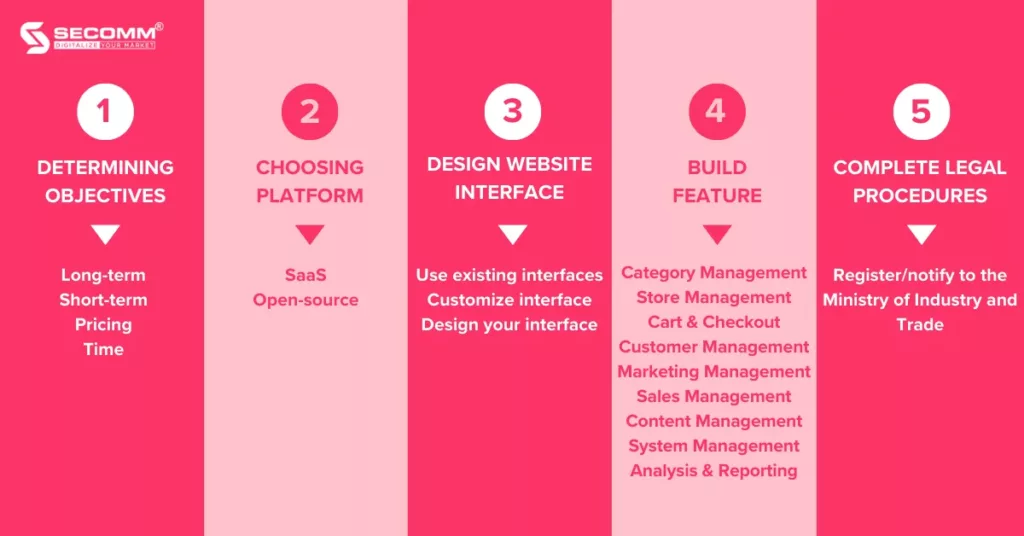
Determining Objectives
Firstly, businesses in the jewelry industry need to clearly define their goals and prioritize each of these goals when planning the development of an eCommerce website.
In the long-term vision, businesses may be interested in building and strengthening their brand presence in the online market, exploring the potential of online customers, and optimizing business operations from online to offline.
For short-term objectives, businesses may prioritize monitoring and analyzing customer behaviour on the website, assessing the effectiveness of online marketing campaigns to improve sales performance.
When setting objectives, the timeframe is also a crucial factor. Businesses may choose to deploy quickly to penetrate the eCommerce market or even opt for a gradual deployment to have time for testing, evaluation, and adaptation to this large and competitive market.
Choosing an eCommerce Platform
Currently, two popular types of platforms support the development of eCommerce websites: SaaS (Software as a Service) and open source.
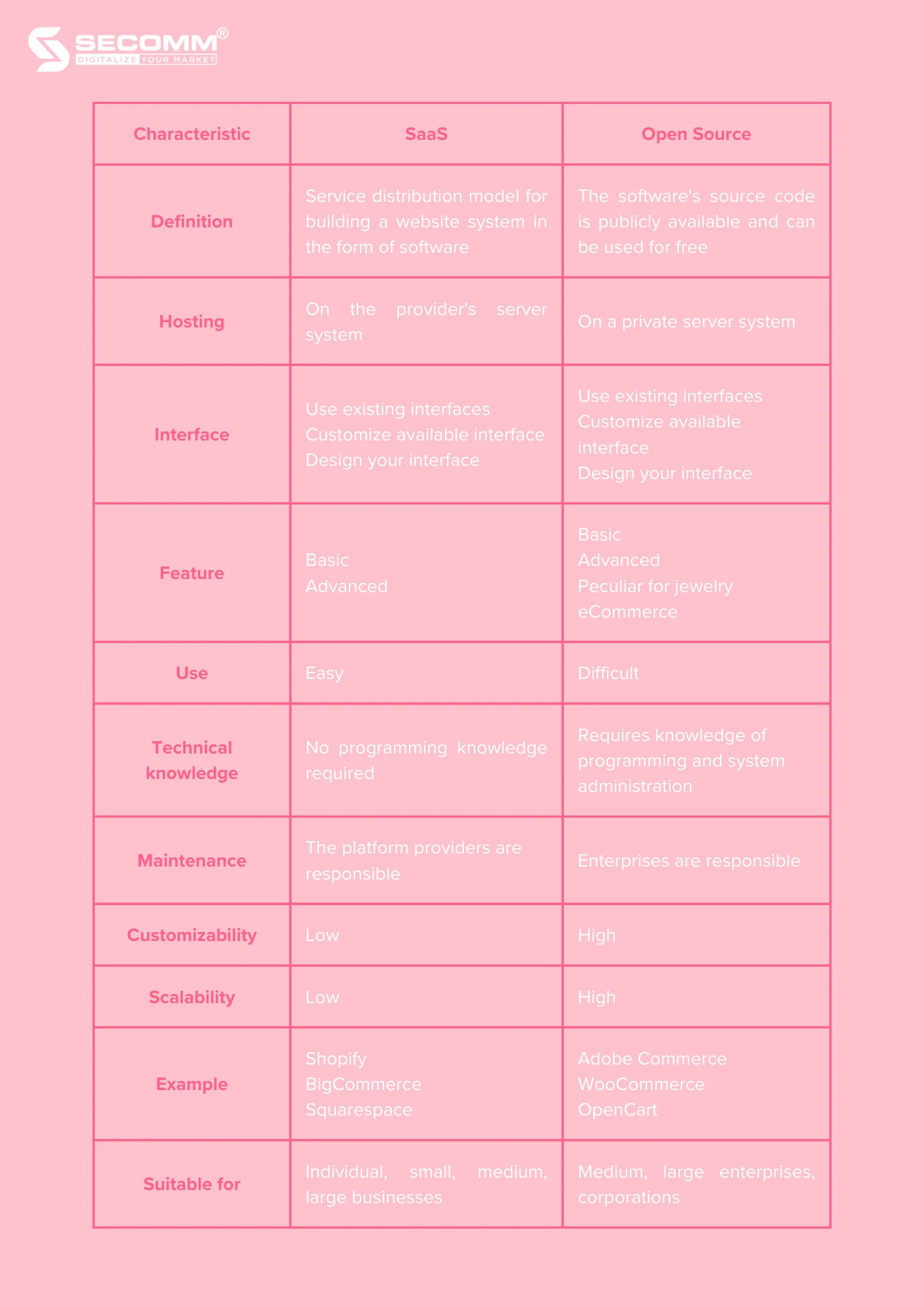
Read more:
- What is Shopify? Pros and Cons of using Shopify in 2023
- BigCommerce 2023: Pricing, Features, Pros and Cons
- What is Magento? The superior pros and cons of Magento
- WooCommerce 2022: Its benefits and downsides to consider
- What is OpenCart? Pros and Cons of using OpenCart
Typically, new businesses entering the eCommerce market will choose SaaS platforms to save time and costs during the initial stage of building an eCommerce website. Subsequently, businesses may transition to open-source platforms for the development of more advanced eCommerce websites.
However, businesses can also choose an open-source platform right from the start to build a basic eCommerce website and later upgrade the system over time on the same platform to avoid the need for platform migration in later stages.
Design website interface
When designing the website interface, businesses need to meet basic criteria such as UI/UX standards, reflecting the brand’s characteristics, presenting products consistently, providing complete usage instructions, etc.
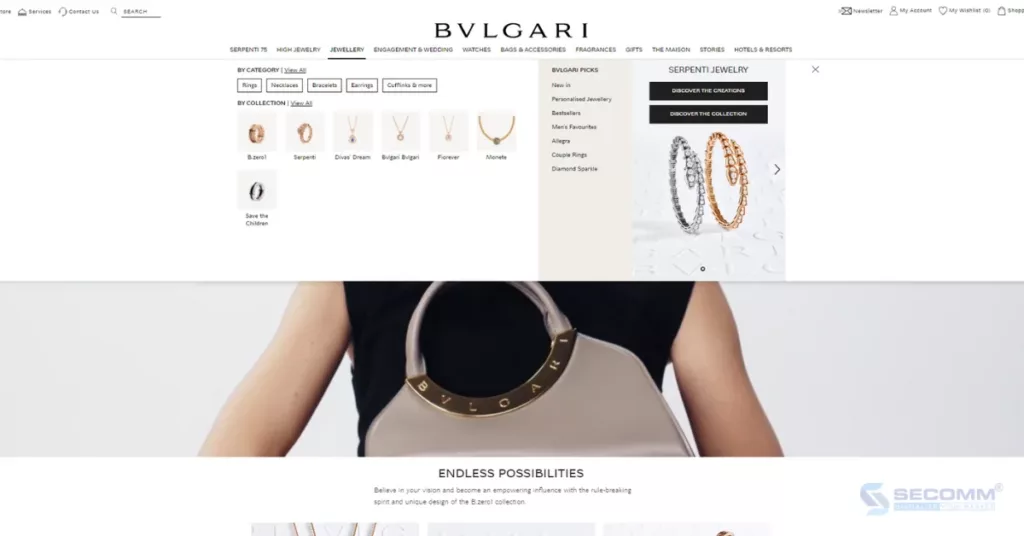
Currently, there are three ways to design the interface, including:
- Use ready-made themes: Optimize interface design costs but may limit the brand positioning due to the risk of theme duplication with other websites.
- Customize themes according to needs: Save costs while adding some brand identity elements such as colours, fonts, layout, etc. However, effective theme customization requires a specialized and experienced team.
- Design a custom theme: Businesses will have a website tailored to their brand. However, this approach requires more investment in design costs and time.
In this stage, businesses often choose ready-made themes to save costs, but some financially stronger businesses may opt for the other two methods to better position their brand.
Build features for the website
In this stage, businesses can prioritize the development of basic functions to meet the most fundamental needs when operating a jewelry eCommerce website. Some essential functions that should be included in a jewelry eCommerce website are:
- Category Management: Control data, product functions, categories, prices, inventory quantities, and images/videos for smooth operation and optimized business.
- Store Management: Manage inventory quantities, and control business operations, and personnel for each branch.
- Cart & Checkout: Manage the shopping cart and customer checkout information.
- Customer Management: Manage customer information to improve marketing efficiency, shopping experience, and overall customer satisfaction.
- Marketing Management: Optimize SEO and implement marketing programs using supportive tools to boost sales for the business.
- Sales Management: Establish and operate sales processes, orders, payments, and shipping.
- Content Management: Develop and optimize all content-related aspects for CMS pages, image storage, theme customization, and website design.
- System Management: Assign administrator roles for system operation, and review the best methods for security, maintenance, and overall system care.
- Analysis & Reporting: Support track, measure the performance of the eCommerce system, and plan for future strategies.
Complete Legal Procedures
After successfully completing the features, testing, and launching of the website, the business needs to fulfil legal procedures related to eCommerce operations. According to Decree 52/2013/ND-CP issued by the Government of Vietnam, individuals or organizations owning eCommerce websites for sales are required to notify or register with the Ministry of Industry and Trade through the Public Service Portal of the Ministry of Industry and Trade.
Note: Websites that operate for an extended period or fail to register/notify the competent management authority within the specified time frame may be subject to administrative penalties as stipulated by the regulations.
Phase 2: Building an Advanced eCommerce Jewelry Website
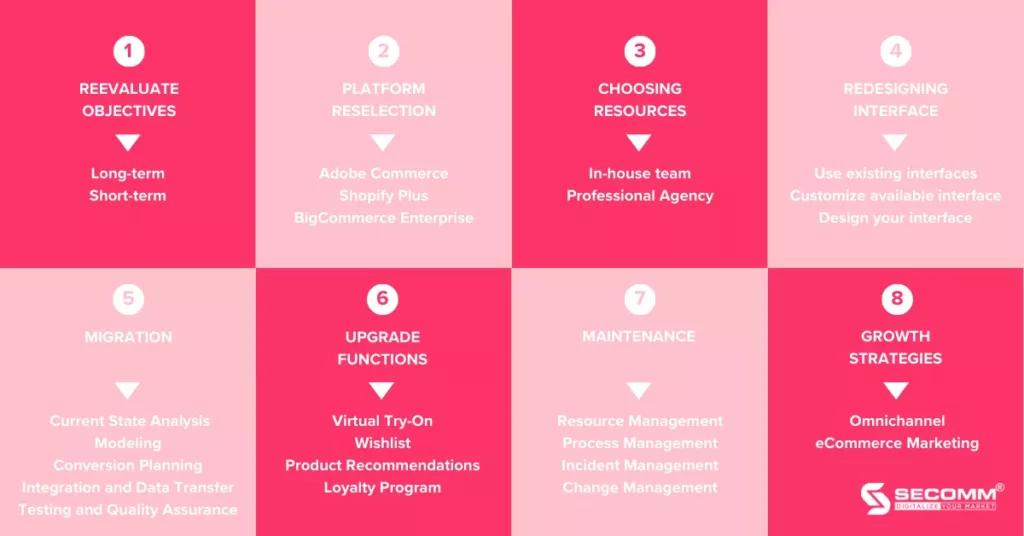
Reevaluate Objectives
When a business is in the development phase and the market is undergoing significant changes, adjusting objectives becomes necessary. This is particularly crucial when leadership needs to review the business strategy and make decisions regarding investing in an eCommerce website, including both time and budget considerations.
In this phase, businesses often focus on setting short-term and long-term goals for the online jewelry business system. For long-term objectives, businesses may consider expanding the brand presence in the market, building a loyal customer program, and promoting the purchasing habits of jewelry and gemstone customers in the middle and upper classes. These goals lay the foundation for sustainable development and prosperity in the future.
Regarding short-term goals, businesses may concentrate on attracting additional potential customers, increasing revenue, and supporting the eCommerce marketing strategy. Tools such as Influencer Marketing may be prioritized to drive rapid growth and create immediate business opportunities.
Overall, establishing specific goals and adjusting them based on market conditions and business development is a crucial part of managing and succeeding in the eCommerce jewelry industry.
Platform Selection for Transition
When basic SaaS platforms are no longer sufficient to support the expansion of the website system, businesses will need to transition to more specialized platforms such as Adobe Commerce, Shopify Plus, BigCommerce Enterprise to develop a more advanced eCommerce jewelry website.
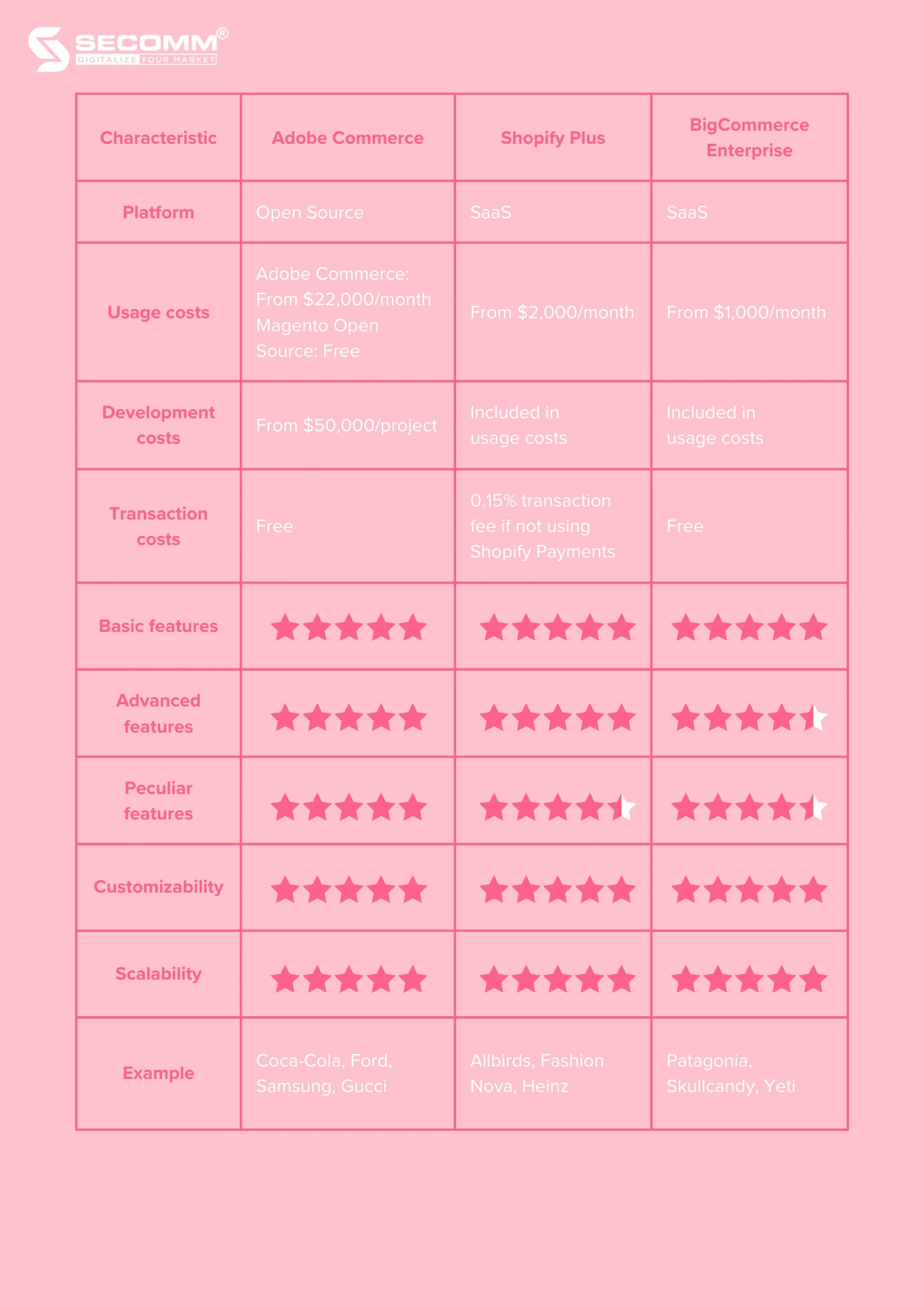
Read more:
- Shopify Plus vs BigCommerce Enterprise: Full Comparison 2024
- Top 5 eCommerce Platforms for Building Jewelry Websites
Of course, when switching platforms, businesses will face challenges such as conversion costs, time required for staff training on the new platform, and potential data loss during the platform migration.
Choosing development resources
To build a professional and complex eCommerce website, businesses need to choose suitable resources to implement the project. Generally, there are two main options: building an in-house team or partnering with a professional development partner. Regardless of the choice, specialized knowledge and experience in the chosen field are crucial.
When deciding to build an in-house team, businesses need to recruit and train IT and eCommerce personnel with knowledge and practical experience on the chosen platform. This may require a significant amount of time and financial resources to build a suitable workforce. However, this approach allows the business to have better control over resources and the ability to make adjustments, developing the website system according to specific requirements.
Another option is to collaborate with a professional development partner. In this case, businesses should seek a partner with extensive experience in eCommerce, a professional team, clear work processes, and the ability to handle complex projects. Collaborating with specialized units helps businesses learn and accumulate more experience while developing an eCommerce website that suits the specific characteristics of the jewelry industry.
Therefore, the choice between building an in-house resource and collaborating with a development partner depends on the goals, resources, and specific requirements of the business.
Redesigning the website interface
During the platform transition process, businesses may decide to keep the current website interface if the brand believes it still aligns with the strategy and the new platform. However, many businesses often choose to redesign the interface to ensure that the eCommerce website reflects the brand’s business strategy and the new platform accurately.
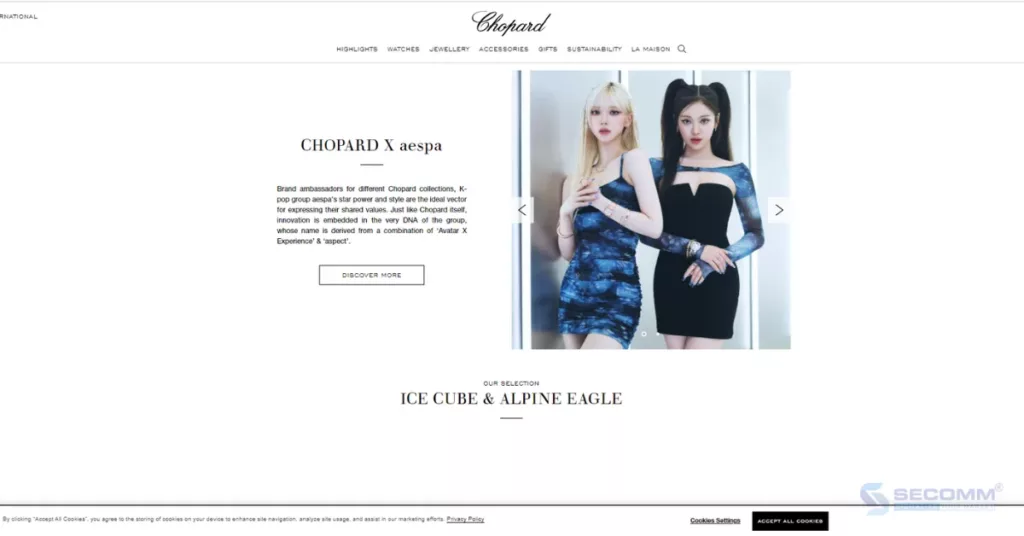
Similar to the previous stage, businesses have several options when designing the eCommerce website interface: using ready-made themes available on the market, customizing themes, and designing a unique interface.
In the jewelry industry, customizing or designing a unique interface is often prioritized to showcase the uniqueness and sophistication of the products. However, the final decision should be based on the business strategy and resources available.
Platform Conversion and Data Migration
After choosing a suitable conversion platform, the redesign of the system and platform conversion is crucial. This requires a high level of expertise from solution architects to design a system that can address the challenges the business is facing and align with the long-term development journey and business model of the enterprise.
In addition, the process of migrating data also needs to be carried out carefully to limit the risk of data loss or errors for the business. Typically, data conversion is automated as much as possible to avoid potential errors.
The platform conversion process includes the following steps:
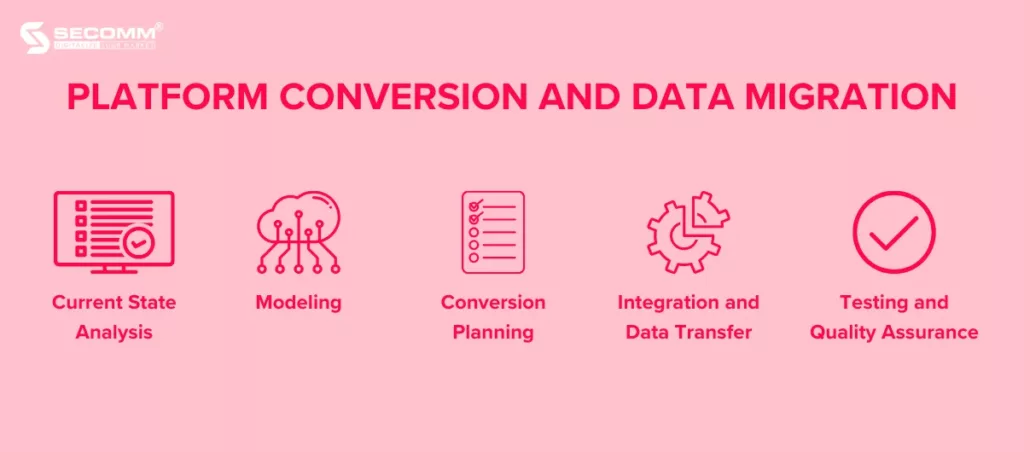
- Current State Analysis: Detailed evaluation of the existing system, including the database, interface design, integrations, and any custom options implemented.
- Modeling: Detailed data modelling, determining source and target systems, data formats, and data structures to visualize how data will move and plan the most appropriate conversion.
- Conversion Planning: Develop a detailed plan for the conversion process, including timelines, resources, and participants.
- Integration and Data Transfer: Extract data from the old system and record it in the new system, including information about products, orders, customers, and other relevant data. Common conversion methods include data file import/export, manual conversion, and automated conversion.
- Testing and Quality Assurance: Conduct comprehensive testing to identify and fix errors to ensure that the conversion is carried out according to the plan, the system operates smoothly and securely, and that the data has been fully and accurately migrated.
Upgrade System Functions
In addition to basic functions, at this stage, businesses should focus on building more sophisticated system functions, including advanced and industry-specific features for the jewelry sector.
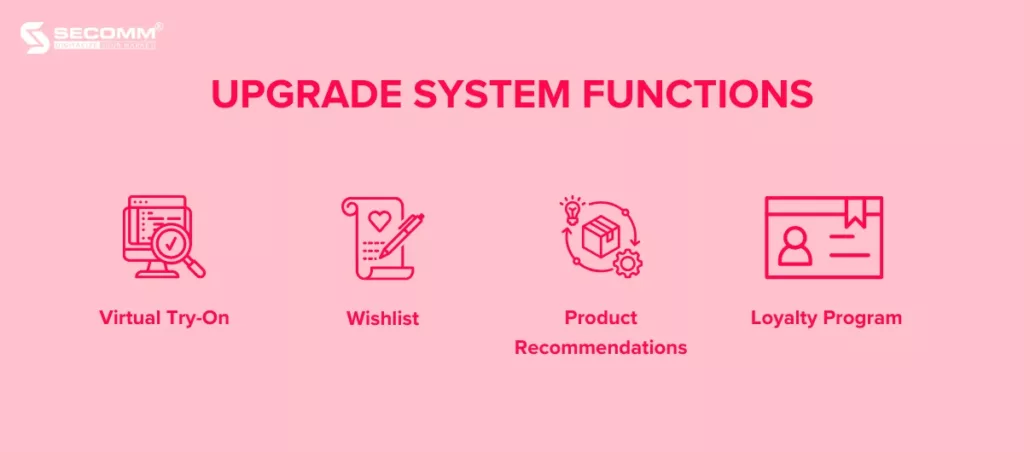
- Virtual Try-On: Integrate augmented reality (AR) or virtual reality (VR) tools to allow customers to visualize how jewelry items will look when worn.
- Wishlist: Enable customers to save favourite items for future reference, encouraging revisits and conversions.
- Product Recommendations: Utilize artificial intelligence (AI) technology to deploy product recommendation tools based on customer behaviour and preferences.
- Loyalty Program: Establish a loyalty program to reward frequent customers with discounts, exclusive offers for new collections, and other incentives.
Furthermore, businesses need to continuously innovate and update to develop user-friendly functions and keep up with market trends.
Operations & System Maintenance
Operating an eCommerce system is an ongoing process that businesses must carry out to ensure the system operates smoothly and efficiently. This process includes the following crucial tasks:
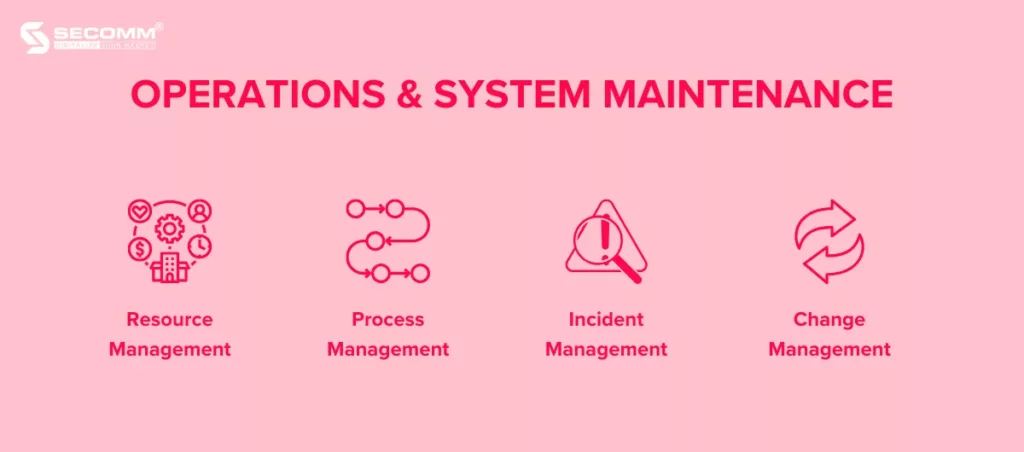
- Resource Management: This involves monitoring and managing fundamental resources such as server hardware, application software, data, and IT personnel. This ensures that the system is provided with sufficient resources to operate smoothly.
- Process Management: Ensuring that all system operation processes are carried out efficiently. This may include processes for new development, deployment, daily operations, and regular maintenance.
- Incident Management: For any system, incidents can occur. The incident management process involves identifying the cause of the incident, swiftly and effectively addressing it, and establishing preventive measures to avoid similar incidents in the future.
- Change Management: When there are changes in the system, change management ensures that the impacts of these changes are carefully assessed. Implementing changes must be done safely and effectively to avoid unintended incidents.
Additionally, continuous care, maintenance, updates, and upgrades of the website system are essential for businesses to sustain sustainable growth and adapt quickly to changes in the eCommerce market, especially in the jewelry and gemstone product sector.
Implementing Growth Strategies
After a period of operation, businesses should shift their focus to eCommerce marketing strategies or omnichannel strategies to boost the sales of jewelry products.
Implementing omnichannel involves setting up a seamless sales, marketing, and management system through various channels such as the website, social media platforms (Facebook, Instagram, Zalo, TikTok Shop), and eCommerce platforms (Shopee, Tiki, Lazada, Sendo) to optimize the customer experience and enhance business efficiency.
Developing a comprehensive marketing strategy and plan based on key eCommerce marketing channels such as Content Marketing, SEO/SEM, Email Marketing, and Affiliate Marketing is essential for rapid business growth.
In conclusion, the journey of building an eCommerce website for the jewelry market in Vietnam is not an easy one. This journey requires businesses to invest a significant amount of time and budget to research the most suitable eCommerce strategy for each stage of their development.
Understanding the difficulties and challenges that businesses face when building an eCommerce jewelry website, SECOMM is ready to provide free consultations and detailed solutions for the development of an eCommerce system tailored to the specific needs of each business.
Contact SECOMM today or call directly at the hotline (028 7108 9908) for a free and detailed consultation.
 2
2

 6,842
6,842

 0
0

 1
1
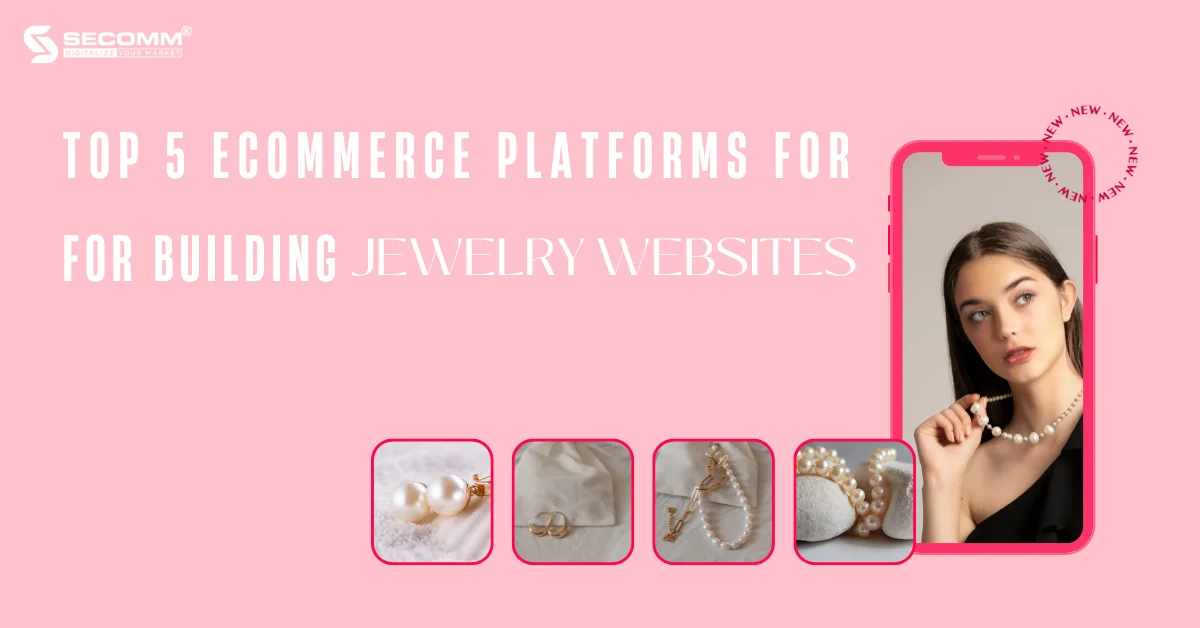
TOP 5 ECOMMERCE PLATFORMS FOR BUILDING JEWELRY WEBSITES
eCommerce is increasingly thriving and becoming a popular sales channel, especially in the jewelry industry, with global eCommerce jewelry sales reaching $100 billion in 2022 and projected to reach $150 billion in 2025.
To harness the immense potential of this market, choosing the right eCommerce platform is a crucial part of the success of your jewelry business in this billion-dollar market
Read more: What opportunities are open to jewelry eCommerce?
Criteria for Choosing an eCommerce Platform for Jewelry
Professional Interface
A professional interface is one of the crucial criteria to consider when building an eCommerce website for jewelry. This criterion helps businesses create a positive impression on customers, increase conversion rates, and boost sales.
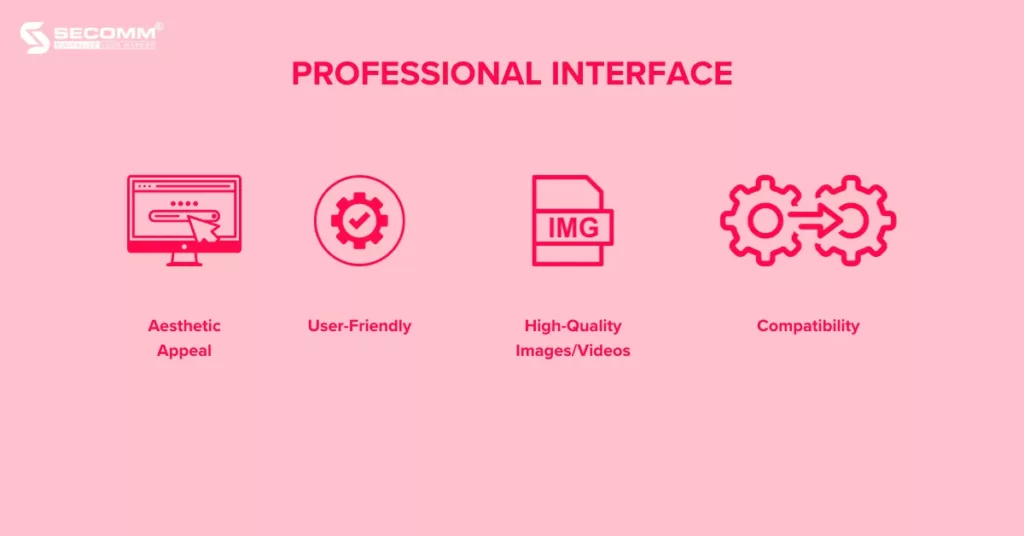
Here are some factors to note when designing the website interface:
- Aesthetic Appeal: The interface should be beautifully designed, visually appealing, and aligned with the jewelry industry and brand identity.
- User-Friendly: Ensure user-friendly elements, making it easy for customers to navigate and shop for products.
- High-Quality Images/Videos: Businesses should use high-quality, clear, and high-resolution images/videos to assist customers in detailed product examination.
- Compatibility: The interface should be compatible with various devices, especially mobile devices, to capitalize on the Mobile Commerce trend, making shopping more convenient for customers.
Specialized Functional System
When building a jewelry website, in addition to basic eCommerce functions, businesses need to focus on developing advanced features that address industry-specific needs:
- Virtual Try-On: Integrate augmented reality (AR) or virtual reality (VR) tools to allow customers to visualize how jewelry will look when worn.
- Wishlist: Enable customers to save favourite items for future reference, encouraging return visits and conversions.
- Product Recommendations: Utilize artificial intelligence (AI) technology to deploy product recommendation tools based on customer behaviour and preferences.
- Loyalty Program: Establish a loyalty program to reward frequent customers with discounts, exclusive offers for new collections, and other incentives.
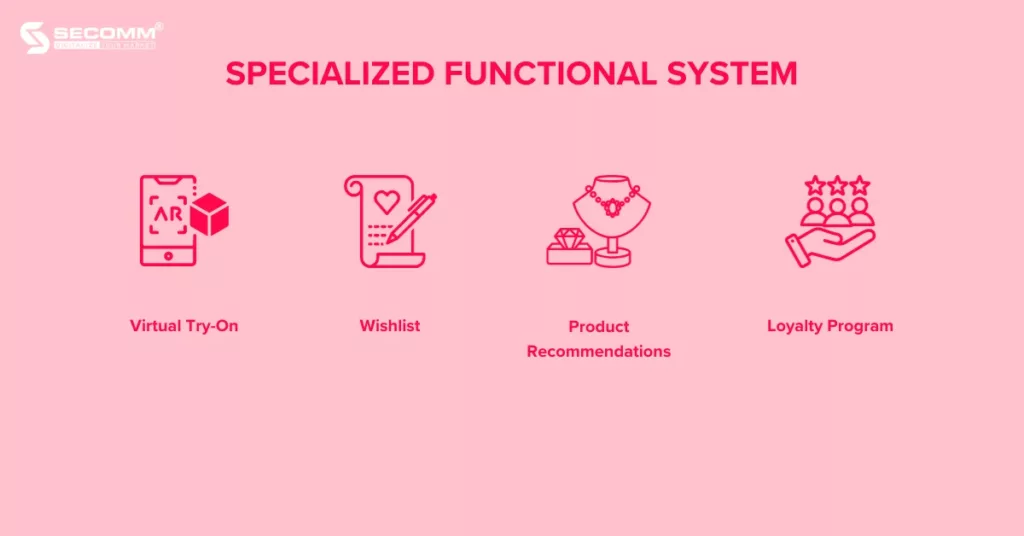
High Scalability
An eCommerce jewelry website needs to have high scalability to meet the evolving needs of the business in the future. Here are some factors to consider when evaluating scalability:
- Scalability in Size: As the business grows and requires the deployment of large-scale marketing campaigns, the website system needs to handle high traffic and large datasets.
- Scalability in Functionality: As behaviours and markets change, businesses need to develop new features or integrate with third-party modules and applications to meet the evolving needs of the business.
- Scalability in Design: After a period of online business, jewelry website administrators may want to customize or redesign the website interface to align with the new brand identity as well as the market and user preferences.
High Security
Jewelry is a high-value item, so an eCommerce jewelry website needs to have high security to ensure the safety of customer information and prevent fraudulent activities and theft online.
As eCommerce jewelry websites often require customers to provide personal information such as name, address, phone number, email, credit card details, bank account numbers, etc., for ordering and payment purposes, ensuring the security of this information is crucial. If this information is compromised, customers may fall victim to scams, lose money, or have their privacy violated.
Top 5 eCommerce Platforms for Building Jewelry Websites
Shopify
Shopify is a SaaS eCommerce platform founded in 2006. Over the years, Shopify has rapidly become a leading platform in the eCommerce industry, supporting numerous businesses worldwide in establishing and growing their online presence.
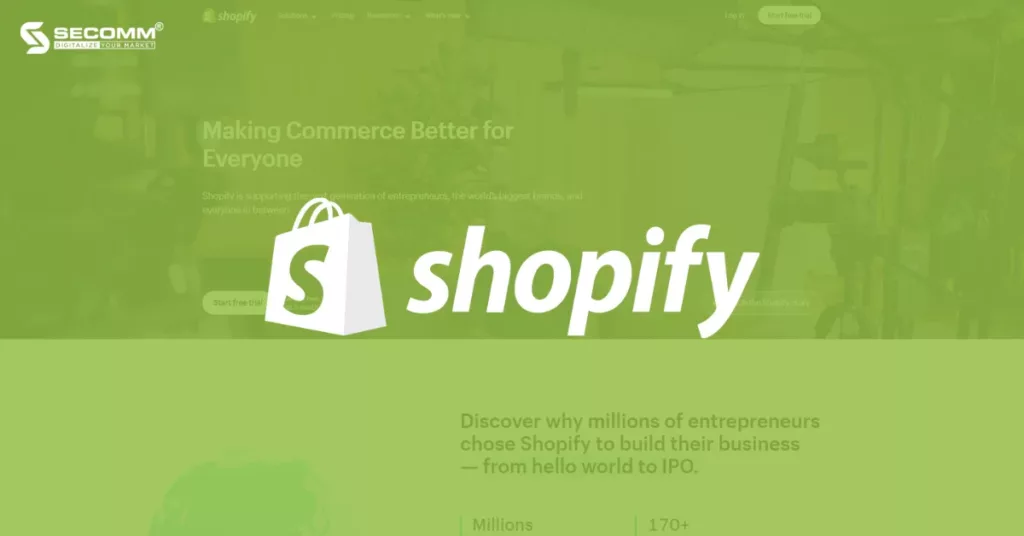
The costs associated with using the Shopify platform vary and include:
- Basic: $19/month, suitable for personal or small businesses.
- Shopify: $79/month, suitable for small businesses.
- Advanced: $299/month, suitable for large businesses.
- Starter: $5/month, with features for social media payment and messaging apps for businesses.
- Retail: $89/month, includes employee management, inventory, and loyalty program features for retail stores.
- Commerce Components: Customized quotes, offering third-party modules for integration into the business’s eCommerce website.
- Shopify Plus: Customized quotes, designed for large enterprises.
- Shopify Hydrogen & Oxygen: Customized quotes, tailored for businesses with Headless Commerce deployment needs.
Read more: Top 5 benefits when applying Headless Commerce in 2023
Evaluating the suitability of Shopify for the jewelry industry:
- Website Interface: Shopify provides a variety of visually appealing and professional website interface templates for the Basic, Shopify, and Advanced versions. Additionally, businesses can use Shopify Plus or Shopify Hydrogen to customise the website interface or design a unique look to align with their brand and business needs.
- Functionality: Shopify supports many essential features for online businesses, but specialized features for the jewelry industry may require significant time and budget investment. However, these features operate with exceptionally high performance.
- Scalability: Being a SaaS platform, Shopify’s scalability has some limitations, especially in terms of customization compared to open-source platforms.
- Security: Shopify employs advanced security technologies to safeguard customer information, including customer data encryption to prevent unauthorized access, two-factor authentication to enhance customer account security, and secure payment technologies to prevent fraud.
Several jewelry businesses currently utilizing Shopify for their eCommerce websites include Made by Mary, MISSOMA, Pura Vida Bracelets, and J&CO.
Shopaccino
Shopaccino is a SaaS platform established in 2014 in India, specializing in assisting both B2C and B2B businesses in building eCommerce websites across various industries, including the jewelry sector.
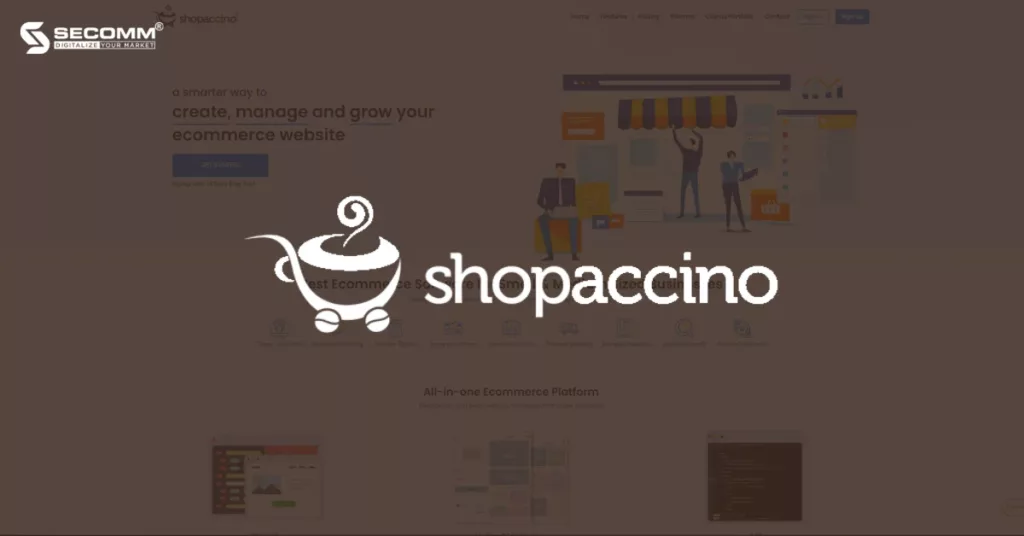
Shopaccino currently offers three main solutions:
- Starter: $200/year, suitable for newly starting eCommerce businesses.
- Basic: $400/year, suitable for small businesses.
- Professional: $600/year, suitable for medium-sized businesses.
- Advanced: $1000/year, suitable for large enterprises.
Evaluating the suitability of Shopaccino for the jewelry industry:
- Website Interface: Currently, Shopaccino provides 9 free themes for building eCommerce jewelry websites. However, businesses may find it challenging to customize these existing themes or request bespoke designs, as it may impact the entire system of this SaaS platform.
- Functionality: Although Shopaccino has features that support building jewelry eCommerce websites, customization or integration of third-party services according to specific needs may be limited.
- Scalability: Similar to Shopify and other SaaS platforms, the scalability of the Shopaccino platform is not highly rated.
- Security: Shopaccino’s operational principle is to secure the existing data on the server system, relieving businesses from concerns about security issues.
Some jewelry businesses currently using Shopaccino include Navratan, KOSH, Bibelot Jewels, Greytone, Hiranya Store, Lavie Jewelz, and Euro Gems S.R.L.
Shift4Shop
Shift4Shop is an eCommerce platform developed by Shift4 Payments, a technology payment company. Shift4Shop provides a comprehensive eCommerce solution for businesses of all sizes and industries, including jewelry businesses.
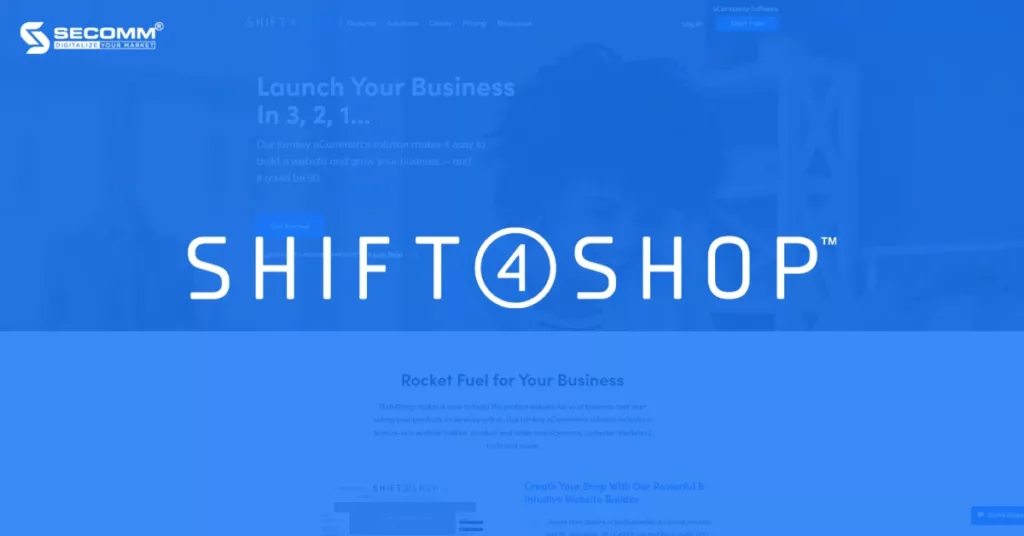
Currently, Shift4Shop only offers services in the U.S. market with four solutions ranging from free to fee-based:
- End-to-End eCommerce: Free, available only when processing credit card payments through Shift4Shop in the U.S.
- Basic Store: $29/month, suitable for businesses with limited revenue up to $100,000/year.
- Plus Store: $79/month, suitable for businesses with limited revenue up to $250,000/year.
- Pro Store: $229/month, suitable for businesses with limited revenue up to $1,000,000/year.
- Enterprise Store: $1,999/month, suitable for businesses with revenue over $10,000,000/year.
Evaluating the suitability of Shift4Shop for the jewelry industry:
- Website Interface: Shift4Shop provides 5 free themes for the jewelry industry and supports customization of these templates, but it does not support custom-designed interfaces.
- Functionality: Shift4Shop offers all the necessary functions for basic eCommerce websites and the jewelry industry. However, customization of functions and integration of third-party services may not be straightforward.
- Scalability: Similar to other SaaS platforms, the scalability of the Shift4Shop platform is not highly rated.
- Security: Shift4Shop employs advanced security technologies to protect customer information, ensuring the safety of customer personal and payment information.
Some brands currently using Shift4Shop include Jewelry Supply, Too Cute Beads, Sasha’s Gemstone Jewelry, Alara Jewelry, Diamond Jewelry NY, and Just Mens Rings.
WooCommerce
WooCommerce is an open-source eCommerce plugin developed for the WordPress platform, one of the most popular content management systems (CMS) worldwide. WooCommerce allows businesses to turn their WordPress websites into online stores or integrate eCommerce features into existing websites.3
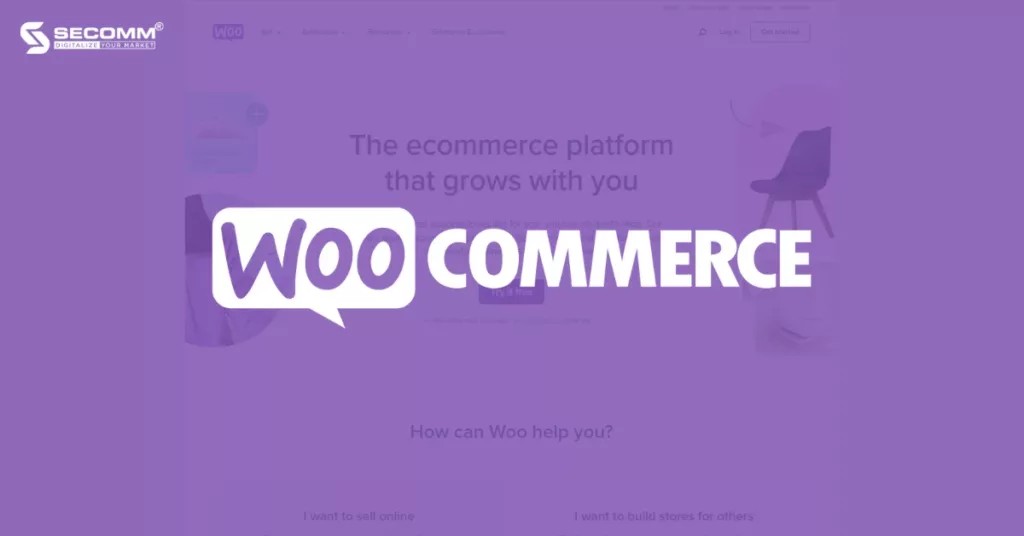
The cost of using WooCommerce depends on the complexity of each project, averaging $1,000 for a basic eCommerce website and $10,000 for a deeply customized eCommerce website.
Evaluating the suitability of WooCommerce for the jewelry industry:
- Website Interface: WooCommerce provides numerous free and premium themes and plugins to help businesses create beautiful and professional-looking jewelry eCommerce websites. Additionally, businesses can customize or design their interfaces to align with their brand.
- Functionality: WooCommerce offers all the necessary features for online jewelry businesses. Being open-source, businesses can customize functions or integrate function-extending plugins as needed.
- Scalability: WooCommerce’s scalability in terms of design and functionality is relatively good. However, its ability to handle high traffic during peak sales seasons is not highly rated.
- Security: WooCommerce is designed with robust security features to protect customer data and payments, including integrated SSL for customer data encryption, two-factor authentication, and regular security updates.
Some businesses using WooCommerce to build jewelry websites include April Soderstrom, NEWTWIST, Waufen, Hyo Silver, Alkemistry, Oxétte, Arden Jewelers, and Binenbaum Antiques & Jewelry.
Adobe Commerce (Magento)
Adobe Commerce, formerly known as Magento Commerce, is a professional and popular eCommerce system. Adobe Commerce is part of the Adobe Experience Cloud product line and is designed to help businesses build eCommerce websites.
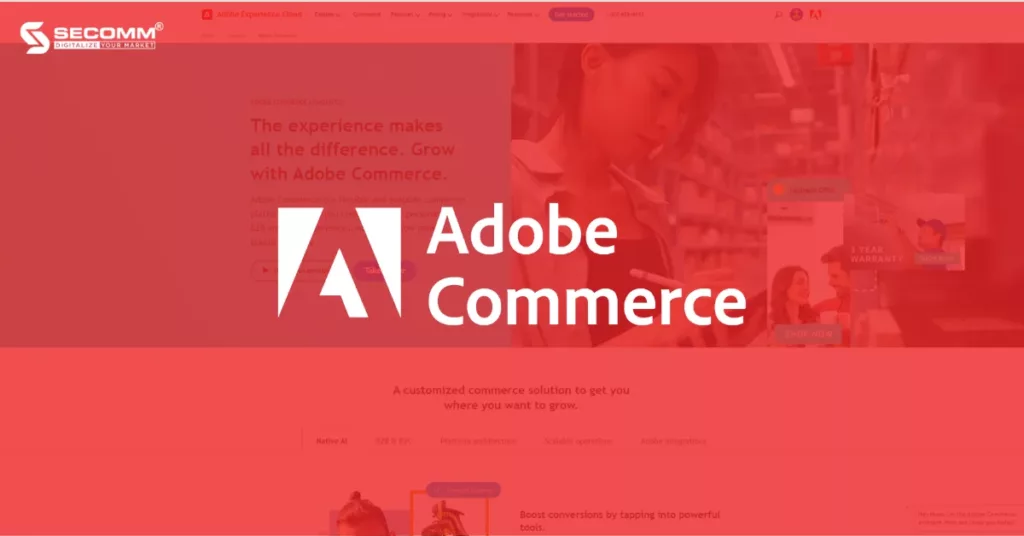
Currently, Adobe Commerce offers two main versions:
- Adobe Commerce (Magento Commerce): This is the premium version of Magento designed for large enterprises, with development costs ranging from $100,000 to $500,000 per project.
- Magento Open Source: Formerly known as Magento Community Edition, this is the open-source, free version of Magento, with development costs ranging from $50,000 to $100,000 per project.
Read more: Magento Open Source vs Magento Commerce Real Comparison
Evaluating the suitability of Adobe Commerce for the jewelry industry:
- Website Interface: Adobe Commerce does not support ready-made themes like other platforms, but businesses can find templates on the marketplace or from the developer community. Additionally, businesses have the freedom to customize or design their interfaces for their website.
- Functionality: Adobe Commerce possesses all the features needed for a complete eCommerce website. Furthermore, Adobe Commerce has a global technical support community with experienced experts and professional development units to meet any business functionality requirements.
- Scalability: A notable feature of the Adobe Commerce platform is its high scalability, allowing businesses to add additional features and integrate external applications as needed.
- Security: All versions of Adobe Commerce have high-security standards, including built-in SSL integration for encrypting customer and payment data, security keys to help businesses create secure URLs, two-factor authentication, protection against distributed denial-of-service (DDoS) attacks, and safeguarding website APIs from unauthorized access.
Some businesses using Adobe Commerce to build jewelry websites include True Facet, Hannoush, Judaica, Mikimoto, Charles and Colvard, J.R.DUNN, and EraGem.
Above are some eCommerce platforms suitable for the jewelry eCommerce industry. This list is just a few examples for businesses to consider, as there are many other eCommerce platforms that businesses can explore based on specific needs and available resources.
Understanding the challenges and difficulties that businesses may face when building a jewelry eCommerce website, SECOMM is ready to provide free consultations on detailed eCommerce system development solutions for businesses.
Contact SECOMM today or call directly at the hotline number (028 7108 9908) for free and detailed advice.
 2
2

 7,113
7,113

 0
0

 1
1
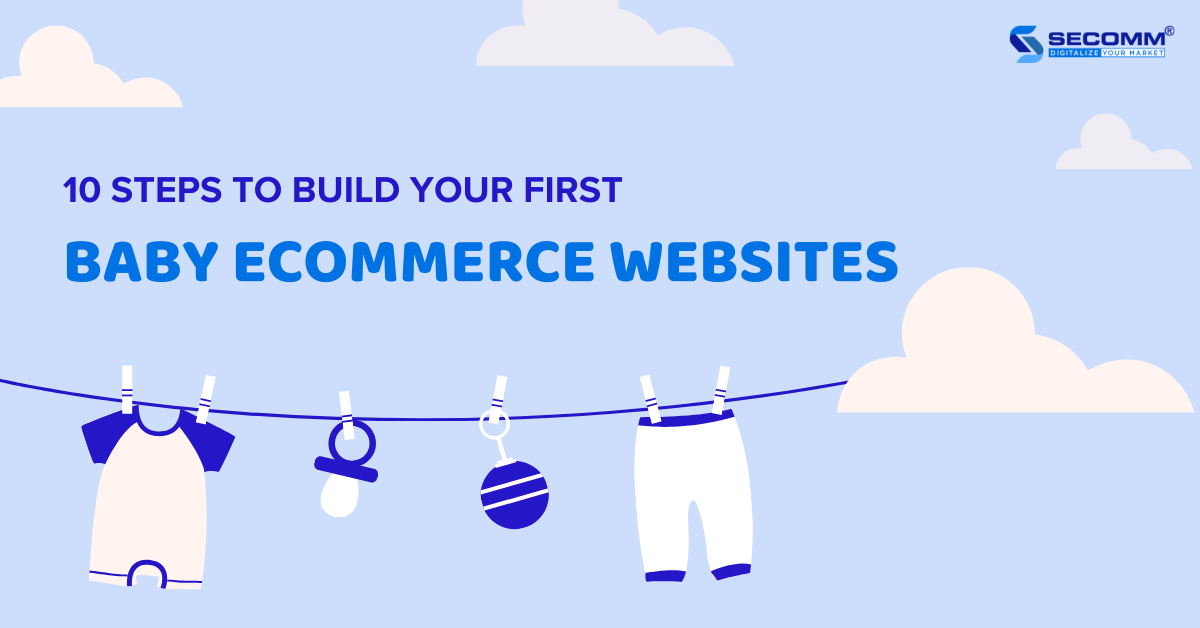
10 STEPS TO BUILD YOUR FIRST ECOMMERCE WEBSITES
Baby eCommerce is a promising market experiencing a steady annual growth rate (CAGR 2023-2027) of 9.86%, projected to reach a market value of approximately USD 129.40 billion by 2027.
To tap into this market, you’ll need to develop a professional and efficient eCommerce website. Here are 10 steps to create an eCommerce website tailored for maternity and baby products.
Identify objectives
The first step is to identify your business goals and prioritize them, forming a plan tailored to develop an effective Baby eCommerce website.
Concerning long-term goals, you may focus on objectives like establishing a strong brand presence, reaching potential customers, and enhancing the efficiency of both online and offline operations.
For short-term goals, businesses can give priority to activities like monitoring, analyzing customer behavior, assessing the effectiveness of marketing campaigns, and boosting revenue.
When it comes to timeline, you can decide to deploy quickly to enter the market or proceed gradually to test and adapt to this eCommerce world.
As for the budget, it depends on your business strategy and financial capacity for this Baby eCommerce development project.
Select eCommerce platform
Currently, there are two types of eCommerce platforms to help you build your first Baby website: SaaS (Software as a Service) and Open-Source platform.
Some popular SaaS eCommerce platforms include Shopify, BigCommerce, Squarespace, and Wix.
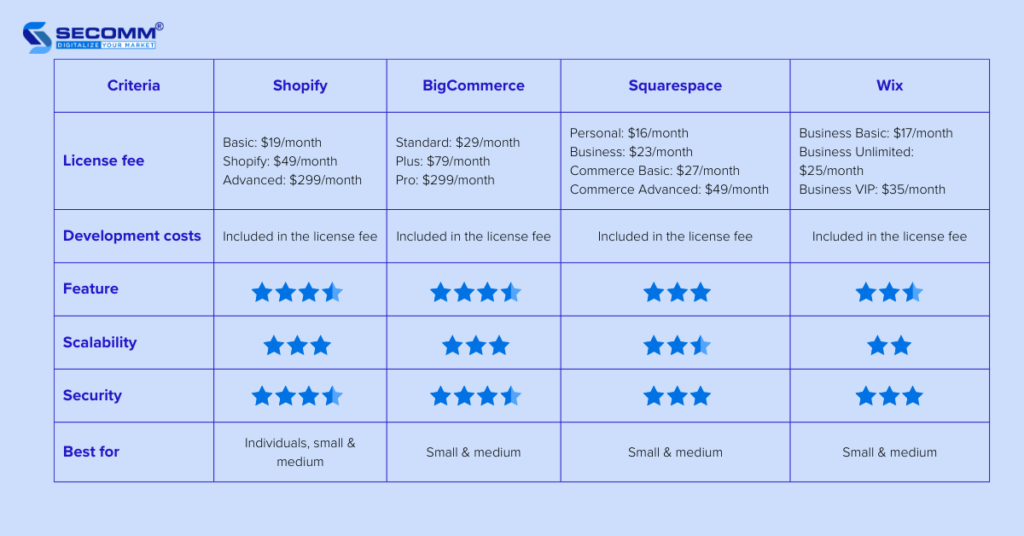
In addition, there are premium versions of these SaaS platforms such as Shopify Plus, BigCommerce Enterprise, and Goflow.
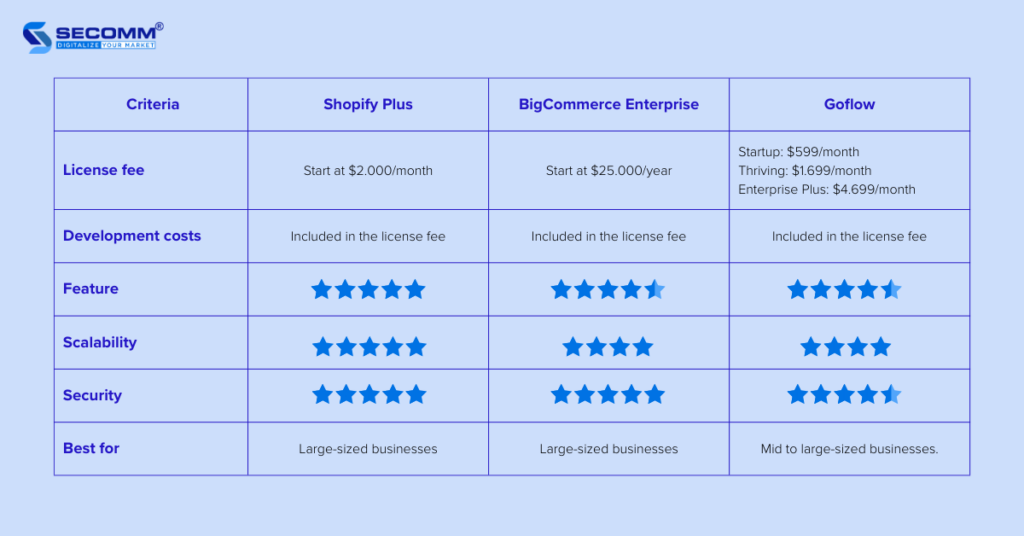
Some open-source platforms are widely used: Adobe Commerce (Magento), WooCommerce, OpenCart, and PrestaShop.
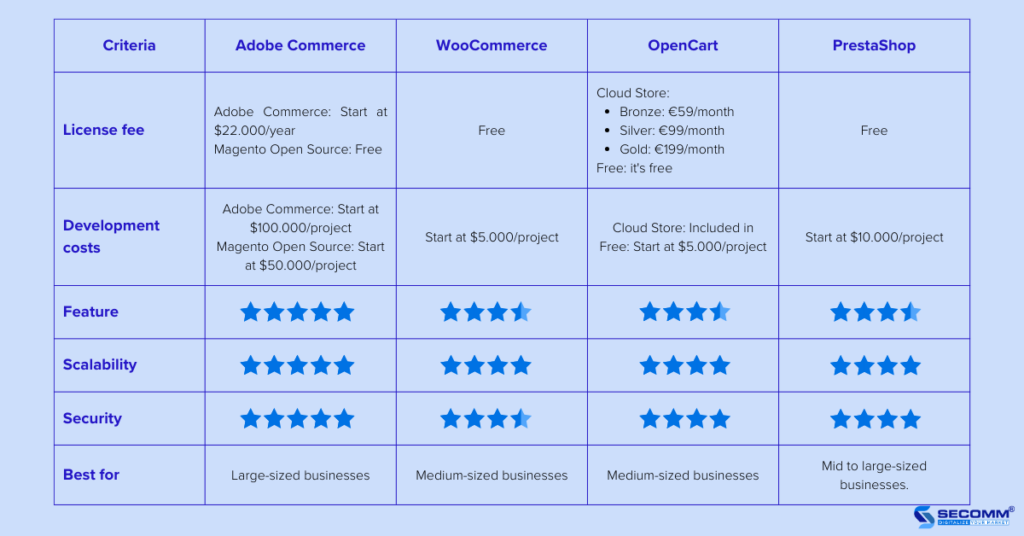
Typically, some new businesses choose basic SaaS platforms to save time and budget in the initial phase of the Baby eCommerce website development. After a while, they may switch to a premium SaaS or an open-source platform to develop their baby websites more advanced.
In another case, some businesses opt for open-source platforms to build a basic eCommerce website and then gradually upgrade the system over time to minimize the need for platform switching in later phases.
In-house team or development agency?
Typically, most eCommerce businesses decide to initially partner with a professional development agency and gradually build their in-house team.
For establishing an in-house team, you’ll need to recruit and train IT and eCommerce professionals for expertise on the chosen platform. It’ll take you significant time and budget but allow you to have full control over your resources. You can develop and adjust your Baby eCommerce website according to your needs and wants.
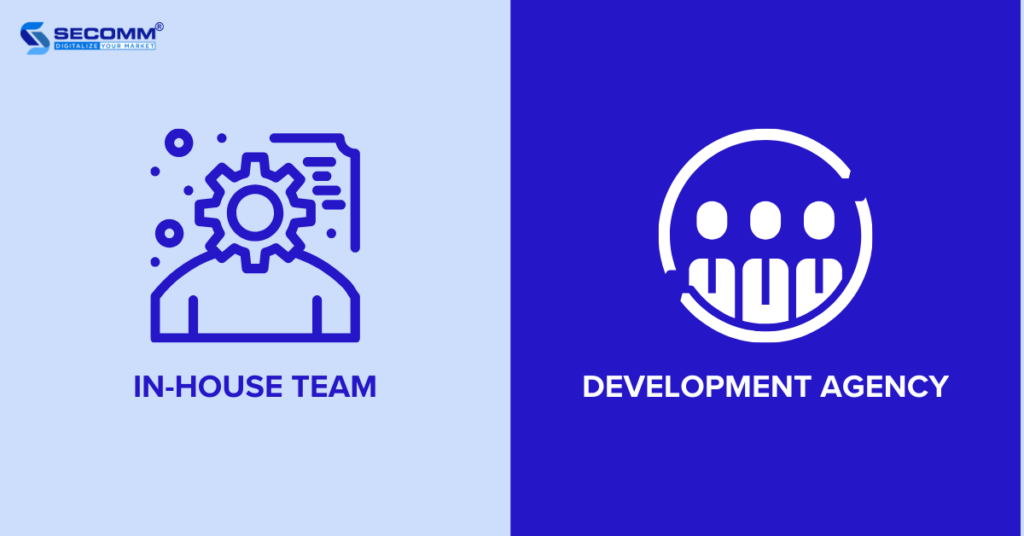
When it comes to partnering with an agency, here are some criteria you need to evaluate:
- eCommerce experience
- High-performing development team
- Clear processes
- Deadline meet
Partnering with a professional development agency gains you specialized eCommerce knowledge, enhances your technical skills, and above all, you’ll facilitate the eCommerce website exactly what you need, tailoring it to the unique features of the maternity and baby industry.
Design UI/UX
When it comes to UI/UX design, it’s important to showcase the brand image, products, user guide, etc. There are three popular ways to make your design:
- Using ready-made themes: Optimizing interface design costs may limit the brand positioning as ready-made themes can be similar to other websites.
- Customizing themes: Balancing cost savings and adding some brand identity elements such as color, font, layout, etc. However, you’ll need a specialized team to customize themes effectively.
- Designing unique themes: The design will tailored to your brand, but it’ll take your time and budget.
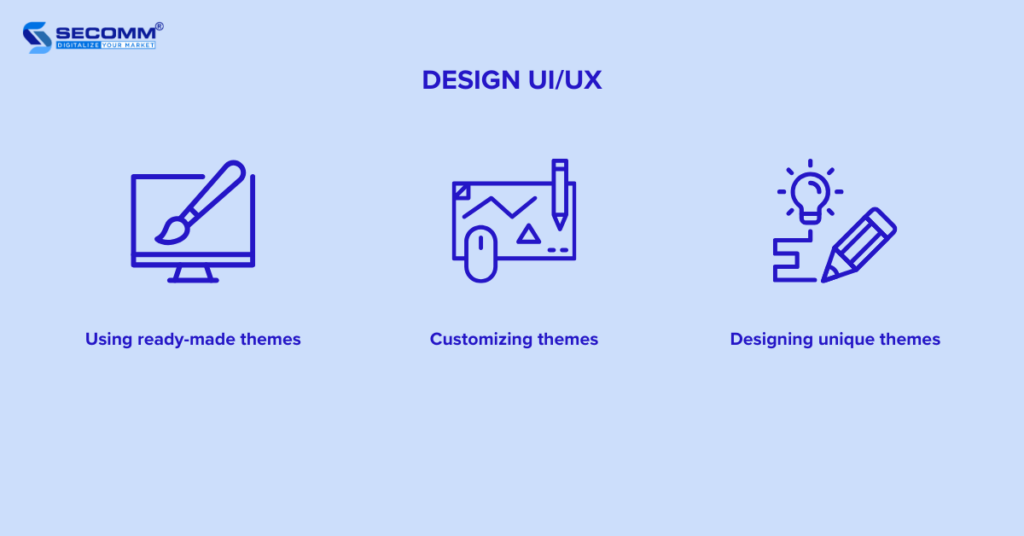
Develop core features
Some essential features that a Baby eCommerce website should have include
- Catalog Management: Control product data, features, categories, prices, inventory quantities, and images/videos for smooth operations and optimal business performance.
- Store Management: Handle product inventory, control the business activities, and manage personnel for each branch.
- Cart & Checkout: Manage the shopping cart and customer checkout information.
- Customer Management: Manage customer information to improve marketing effectiveness, shopping experience, and overall customer satisfaction.
- Marketing Management: Optimize SEO and implement marketing programs using supporting tools to boost sales for the business.
- Sales Management: Establish and operate sales processes, orders, payments, and shipping.
- Content Management: Develop and optimize all content-related aspects for CMS pages, image storage, theme customization, and website design.
- System Management: Administer user roles, and explore best practices in terms of security, maintenance, and system care for the website.
- Analysis & Reporting: Support track, and measure the performance of the eCommerce system and plan for future strategies.
Some advanced features for the baby eCommerce industry:
- Fast delivery: Provides quick delivery services within 2 hours in major cities.
- Personalized Gift Packaging: Gift packages can be designed based on the preferences and needs of each recipient, such as packages for newborns, packages for children, and packages for mothers.
- Buy Now Pay Later: Shop for essential products/services for children without having to pay the full amount immediately, supporting those who may not have the ability to pay a large sum at once.
- Loyalty Program: Allow customers to earn points for each purchase. These points can be used to redeem benefits such as discounts, gifts, or free services.
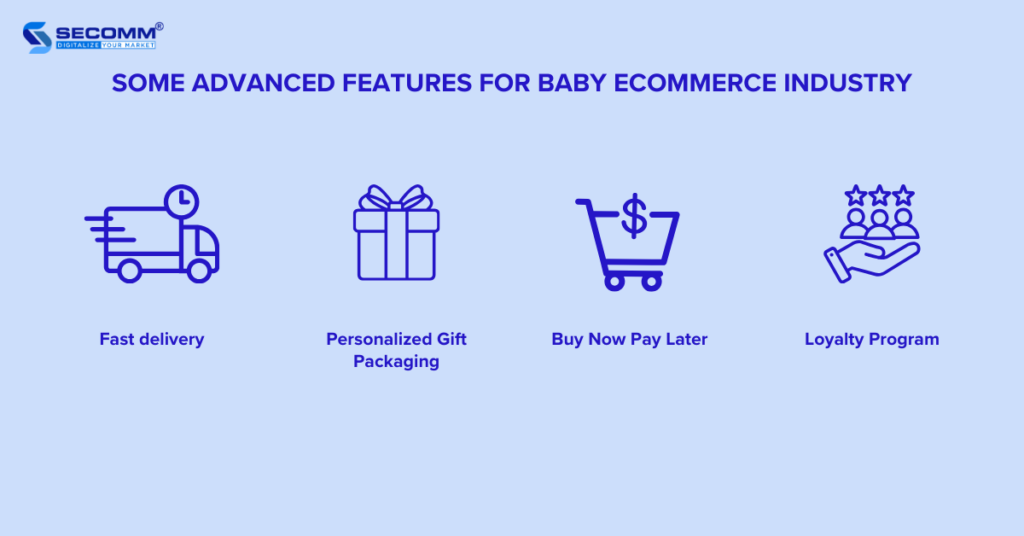
Fulfill Legal Procedures
After developing features and ensuring a successful testing and website launch, you’ll need to complete the legal procedures associated with eCommerce operations.
According to Decree 52/2013/ND-CP by the Government of Vietnam, any individual or organization owning an eCommerce website for sales is required to notify or register with the Ministry of Industry and Trade through the online public service portal of the Ministry of Industry and Trade.
Note: Websites that operate beyond the specified period or fail to register/notify the authorized management agency within the designated timeframe may be subject to administrative penalties as per regulations.
QC/Testing
When QC/testing your eCommerce website, you can leverage either the Waterfall or Agile model to test the entire system.
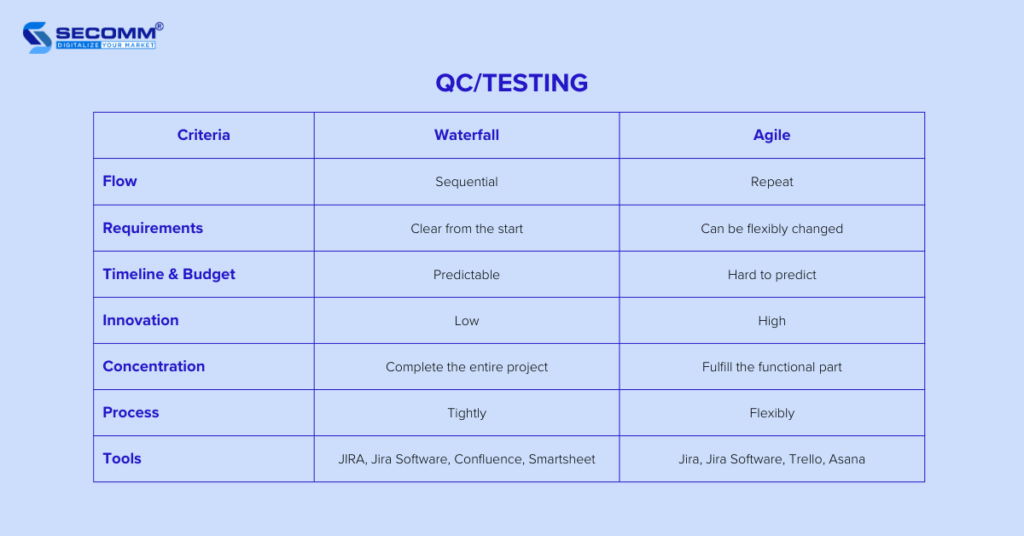
Using these models helps you review and test your entire eCommerce system, functions, and features within a specified timeframe, ensuring optimal order processing speed and overall website stability. In case of any issues, your in-house team or development partner will help you to address them before officially going live.
Go-live
When the QC/testing process is done, your baby eCommerce website is ready to launch. To ensure a smooth go-live process, here are three steps you should prepare:
- Define the go-live objectives: The aims could be system stability, data backup and recovery capabilities, and customer shopping experience.
- Perform testing and error resolution: Conduct comprehensive system testing to identify and rectify functional errors, security issues, and performance issues.
- Create backup plans: Despite conducting testing and resolving errors, unforeseen issues may still arise during the go-live process. To address these issues, backup plans are a must.
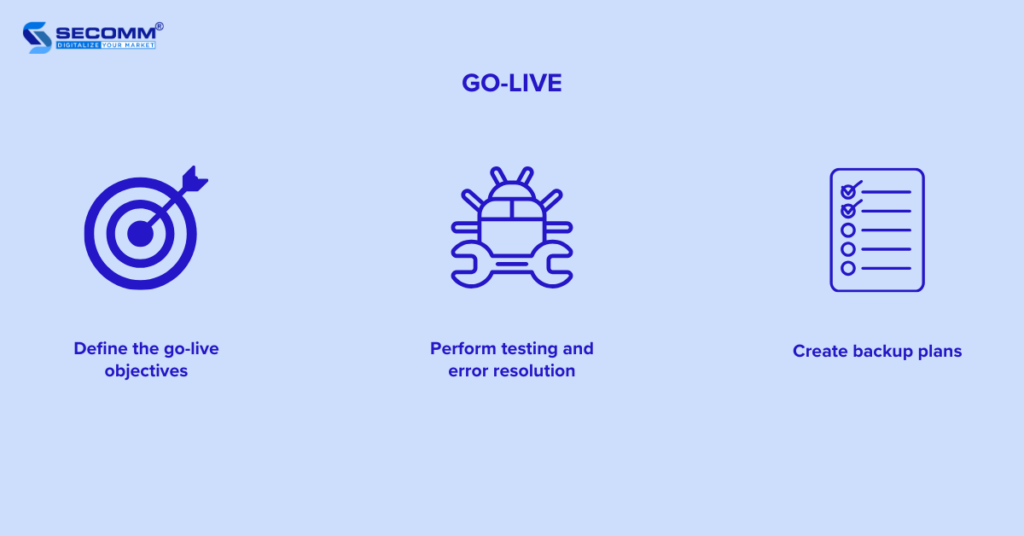
Operate the eCommerce system
Running a baby website is an ongoing effort aimed at ensuring the steady and effective functioning of the system. This involves various activities, including:
- Resource management: Managing the system’s resources, including hardware, software, data, and personnel.
- Process management: Managing all processes within the system, including development, deployment, operation, and maintenance processes.
- Error management: Identifying the causes of errors, quickly and effectively resolving issues, and implementing preventive measures to avoid recurrence.
- Modification management: Assessing the impact of changes on the system and executing modifications safely and efficiently.
Furthermore, you should regularly maintain, update, and upgrade the website system to achieve sustainable growth, adapting quickly to shifts in the eCommerce world or the maternity and baby products market.
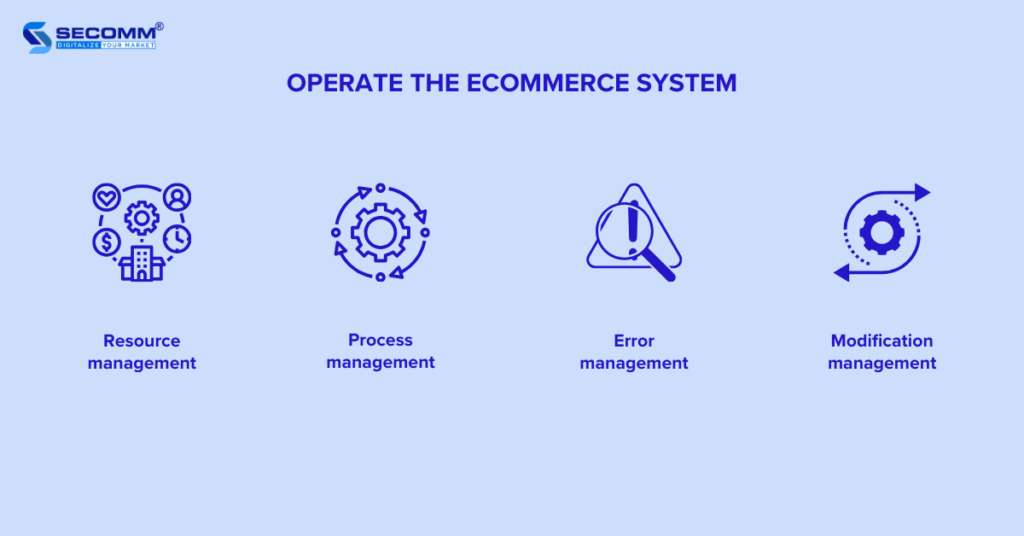
Boost eCommerce growth
After a period of operation, you should shift your focus toward eCommerce marketing strategies or Omnichannel to expand your online presence in the market of maternity and baby products
businesses should redirect their focus toward implementing eCommerce marketing strategies or embracing Omnichannel approaches to expand their online presence in the market of mother and baby products.
Implementing Omnichannel involves setting up a seamless sales, marketing, and management system across channels such as the website, social media platforms (Facebook, Instagram, Zalo, TikTok Shop), and online marketplaces (Shopee, Tiki, Lazada, Sendo) to optimize the customer experience and boost business efficiency.
Developing a comprehensive marketing strategy, centered around key eCommerce marketing channels like Content Marketing, SEO/SEM, Email Marketing, and Affiliate Marketing, becomes crucial for achieving rapid sales growth.
The Bottom Line
In general, the journey of building a baby eCommerce website for the Vietnamese market isn’t an easy task. It requires you to invest a significant amount of time and budget in researching the most fitting strategies tailored to each phase of your eCommerce development.
Understanding the difficulties and challenges that businesses may encounter when building a baby eCommerce website, SECOMM is ready to provide free consultation on detailed eCommerce solutions.
Reach out or call the SECOMM hotline at 028 7108 9908 to get started!
 2
2

 4,395
4,395

 0
0

 1
1

THE RISE OF ONLINE DRUGSTORE & PHARMACEUTICAL ECOMMERCE
In the ever-growing digital age, online drugstores have become an ideal destination for global users seeking convenient and safe ways to care for their health and purchase medications online. The robust growth of eCommerce and changes in user behavior have driven the expansion of this pharmaceutical eCommerce industry.
Below are some crucial insights into why pharmaceutical eCommerce has become an essential component of the modern healthcare system.
What is Pharmaceutical eCommerce?
Pharmaceutical eCommerce has become a promising business model in recent years. According to the “Healthcare eCommerce Global Market Report” compiled by The Business Research Company, pharmaceutical eCommerce is categorized into three main models:
- By type: drug, medical devices
- By application: telemedicine, caregiving services, medical consultation
- By end user: hospitals, clinics, other end users
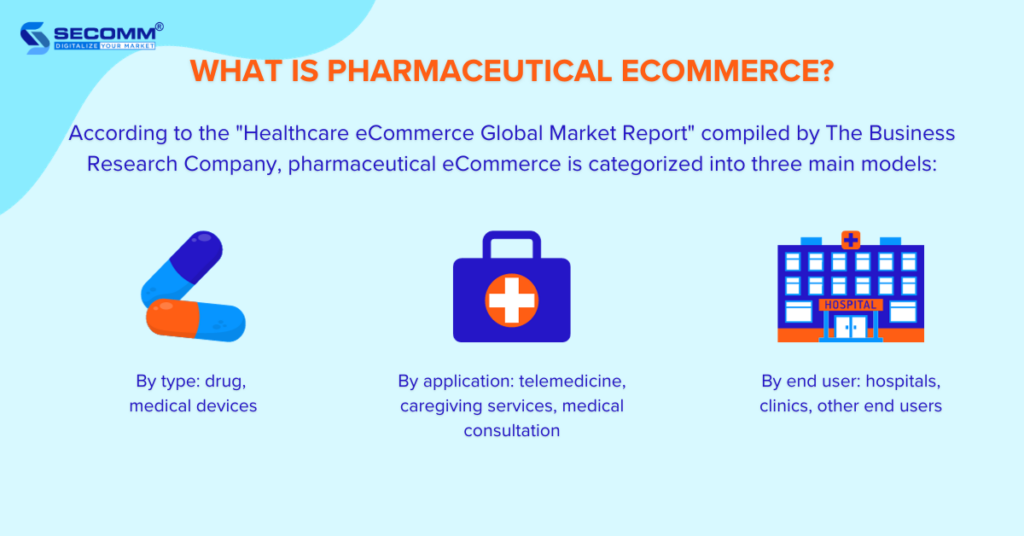
Pharmaceutical eCommerce by Type
This is a model that enables consumers to order and purchase various products such as prescription drugs, over-the-counter medications, vitamins, dietary supplements, healthcare, personal care, etc., through online shopping channels.
Some well-known pharmaceutical eCommerce by type examples include Droga Raia (Brazil), Netmeds (India), Pharmacity (Vietnam), etc.
Pharmaceutical eCommerce by Application
Consumers can access healthcare consultation, advice, and diagnostic services through various applications for this type of pharmaceutical eCommerce. Under this model, consumers typically subscribe to and pay for these services through packages or on a subscription basis (monthly or yearly).
Companies adopting this service-oriented eCommerce model include Teladoc (USA), iCliniq (India), SBB Healthcare (Vietnam), and others.
Pharmaceutical eCommerce by End User
This pharmaceutical eCommerce model often involves websites or applications created by hospitals/clinics to assist patients in scheduling appointments, offering healthcare packages, prescription medications, and more.
Examples of hospitals/clinics following the eCommerce model by end-users include The Royal Melbourne Hospital (Australia), NYC Health+ Hospital (USA), Vinmec (Vietnam), and others.
The Potential of Pharmaceutical eCommerce
Certainly, Covid has not only led to a rise in traditional healthcare expenditures but has also acted as a driving force for pharmaceutical eCommerce. In the United States, telehealth visits witnessed a remarkable surge of 2,600% in March 2020 (during the peak of the COVID-19 outbreak in the U.S.) compared to the same month in 2019.
The growth of the pharmaceutical eCommerce market seems unabated. According to a recent report by CMS, total healthcare spending in the United States reached $3.8 trillion, marking a 4.6% increase in 2022. The Asia-Pacific region is anticipated to experience rapid growth in healthcare eCommerce, with a projected CAGR of 20.5% from 2020 to 2027.
Nielsen predicts that the pharmaceutical eCommerce market in Vietnam will attain a value of $10 billion by 2025.
Some other reasons for the rise of pharmaceutical eCommerce include:
- Population Growth and Healthcare Demand: The increasing global population and improving quality of life lead to a growing demand for healthcare.
- Advancements in Information Technology and the Internet: The development of information technology and the Internet facilitates easy access for consumers to information about healthcare products and services, fostering a greater inclination towards online pharmaceutical shopping.
- Changes in Consumer Lifestyles: Consumers are becoming busier, and there is a trend towards increased online shopping, especially after COVID-19, creating favorable conditions for the growth of online pharmacies.
Top brands built their pharmacy eCommerce websites
Apollo Pharmacy (India)
Apollo Pharmacy is a well-known retail pharmacy chain in India, affiliated with the Apollo Hospitals. After years of operation in the healthcare sector, Apollo decided to establish an eCommerce website to serve millions of customers nationwide. The Apollo eCommerce website is built on the Magento platform, ensuring the capability to manage an extensive product catalog.
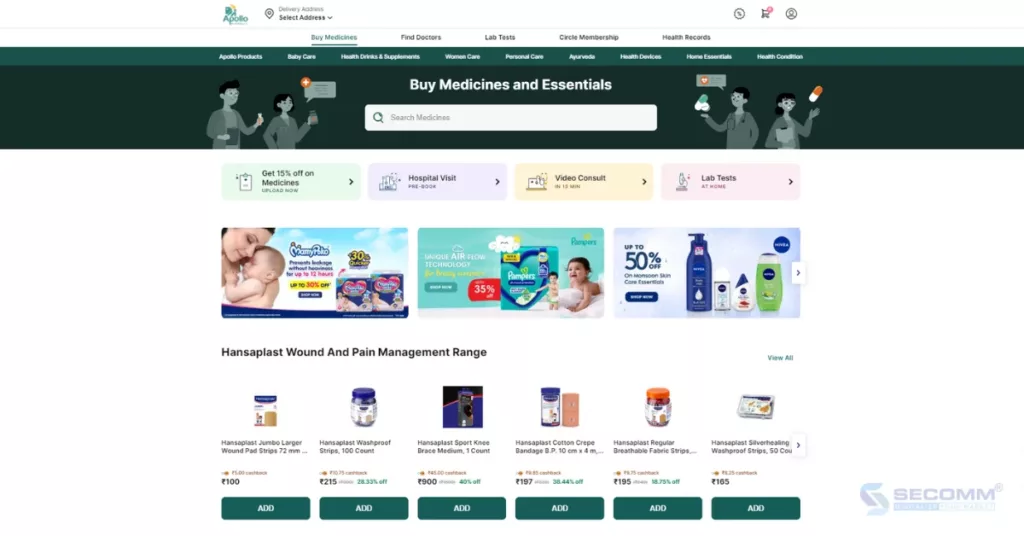
Beyond selling prescription and non-prescription drugs, as well as health care products, Apollo also provides various related services. Among these, notable offerings include online consultation services, health check-up appointments, vaccination appointments, and insurance sales.
Teladoc (USA)
Teladoc Health, Inc. is an American healthcare technology company headquartered in Purchase, New York. The company provides remote healthcare services, including video consultations, phone consultations, and remote health monitoring.
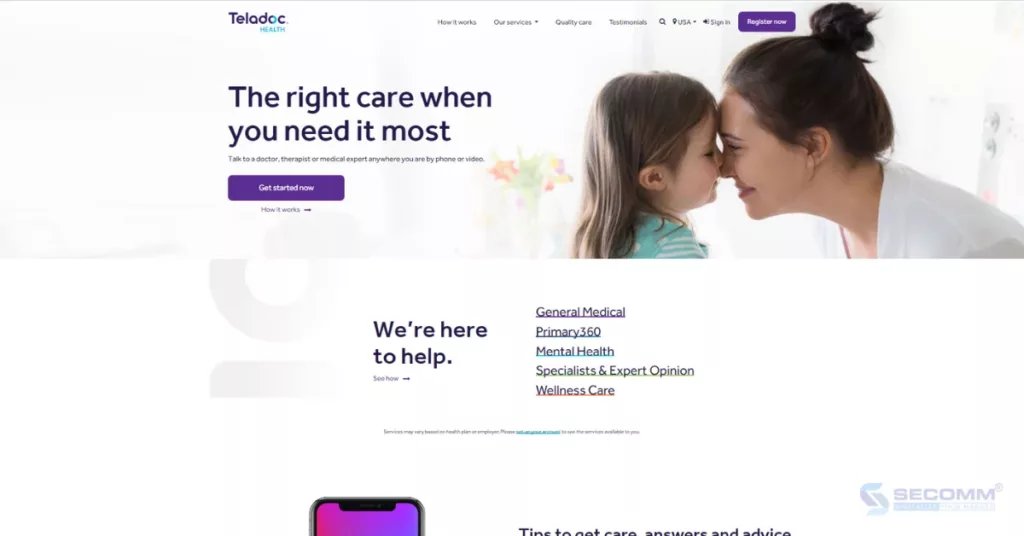
By rapidly deploying a website and eCommerce application, along with the utilization of cutting-edge technologies such as artificial intelligence (AI), machine learning (ML), and data analytics, Teladoc has been able to enhance customer experience and deliver improved remote healthcare services.
Mayo Clinic (USA)
Mayo Clinic was founded in 1889 by Dr. William W. Mayo and his two sons, Dr. Charles and Dr. William J. Mayo. Initially, Mayo Clinic was a small clinic specializing in providing healthcare services to the local community. However, the hospital quickly expanded and became one of the leading hospitals in the world.
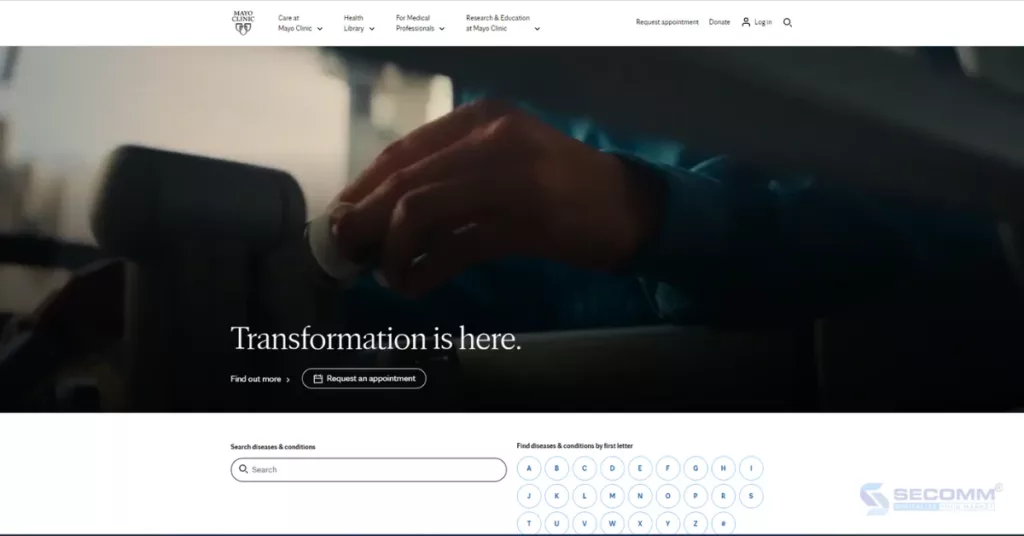
Much of Mayo Clinic’s success can be attributed to the early adoption of eCommerce, allowing patients to schedule appointments, check test results, and purchase medications online. This has helped patients save time and effort, contributing to Mayo Clinic’s overall success.
Learn more: The 10 Best Remarkable Pharmacy eCommerce Websites
The Bottom Line
Pharmaceutical eCommerce not only brings convenience and diverse choices for consumers but also presents attractive business opportunities for healthcare enterprises. If invested systematically and guided correctly, businesses in this field can seize significant opportunities in this promising market.
With extensive experience in implementing eCommerce for customers in various countries, SECOMM understands the difficulties and challenges that businesses face during the deployment process.
Contact SECOMM now or call directly at the hotline number (02871089908) today for a free consultation
 2
2

 11,654
11,654

 0
0

 1
1
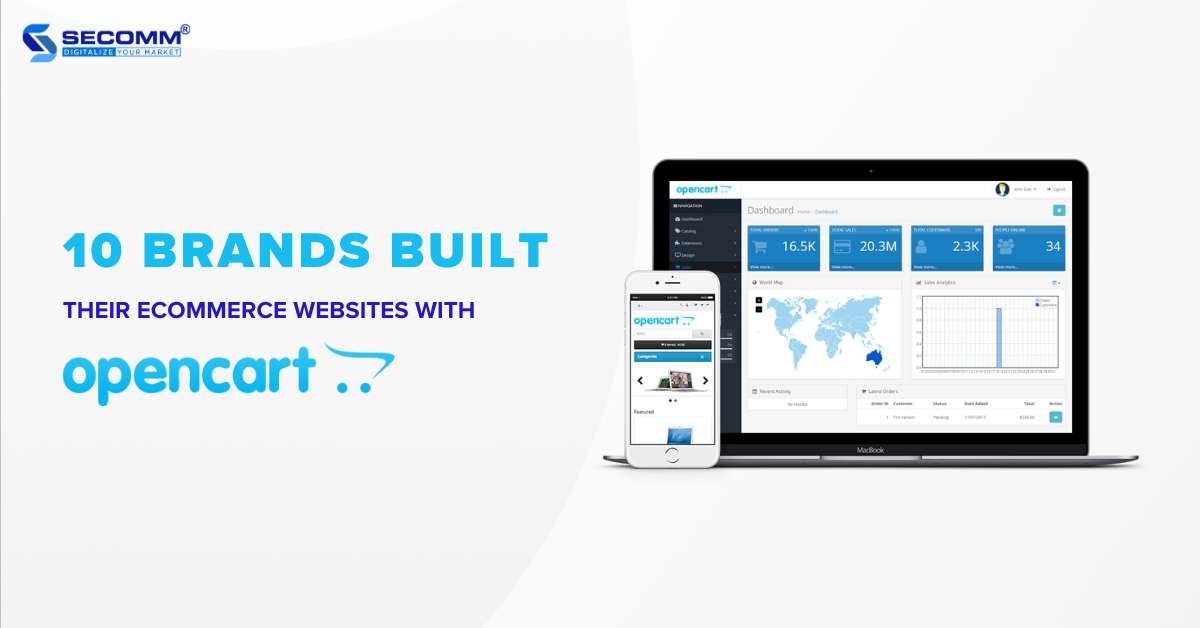
TOP 10 OPENCART ECOMMERCE WEBSITES YOU SHOULD KNOW
OpenCart is an open-source eCommerce platform based on the PHP programming language, utilizing the MySQL database and HTML components to build eCommerce websites. According to Builtwith, the platform powers over 2,500 websites, with the majority in the United States and Russia.
OpenCart offers businesses various options for building eCommerce websites: Free (Open Source) and Cloud Store (Paid). Due to the flexibility of open-source code, many businesses choose this platform to meet specialized requirements in website development.
Below are some brands that have used OpenCart to create dedicated eCommerce websites
Bensound
Bensound is the brainchild of musician Benjamin Tissot, founded in 2012. It is an eCommerce website specializing in providing free and licensed music, as well as sound effects. Initially, Benjamin Tissot composed and licensed only his songs on this platform.
However, as the service grew, Benjamin Tissot started accepting musical works from other artists, making it an ideal destination for content creators on platforms like YouTube, Facebook, and Instagram.
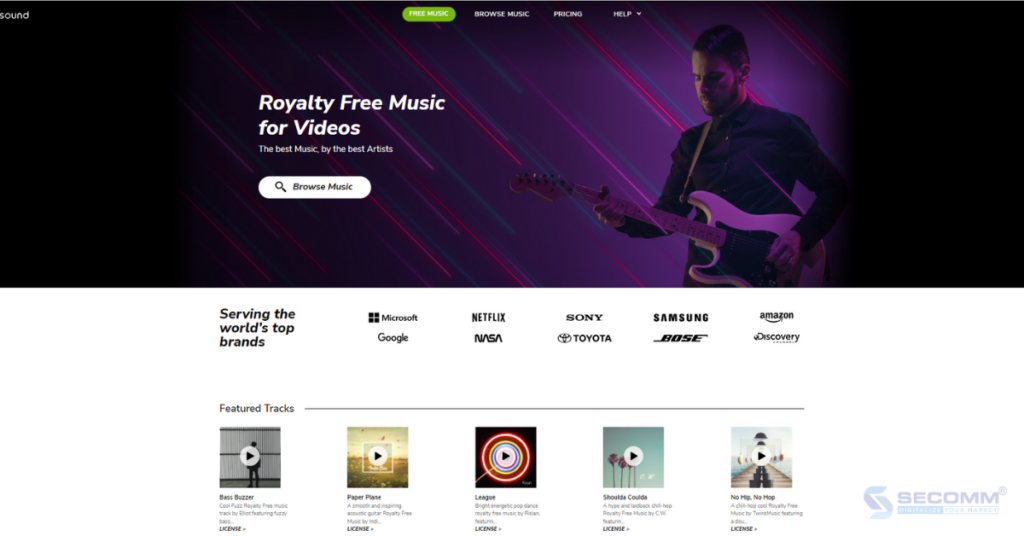
- Website: https://www.bensound.com/
- Industry: Music
- Traffic: 632.3K/month
- Ranking: #69,810 (USA) & #86,312 (Worldwide)
Vicrez
Vicrez is an online automotive parts retailer established in 2014 in the city of Whittier, Southern California, USA. What sets Vicrez apart is that customers can shop online for any external car parts and accessories to customize their vehicles according to their individual preferences.
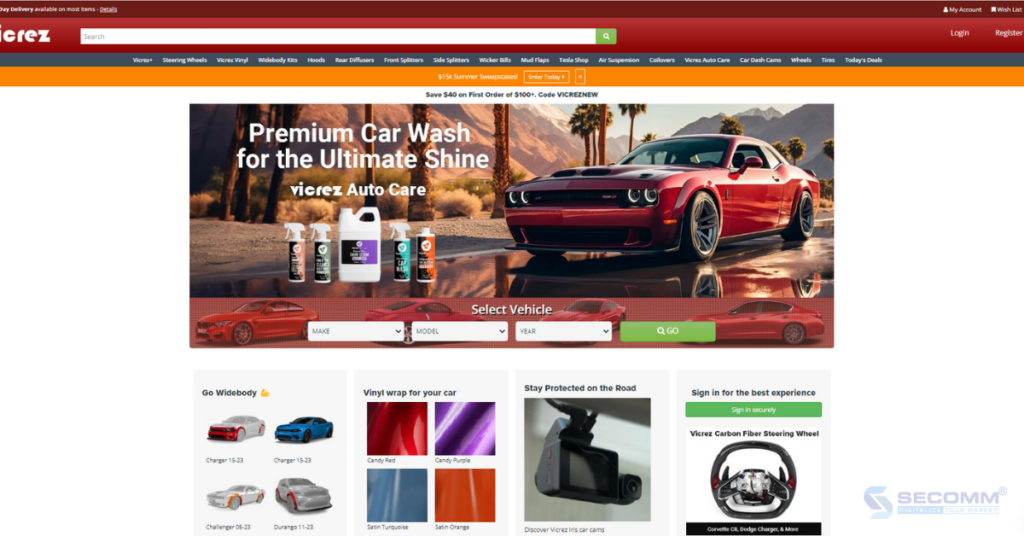
- Website: https://www.vicrez.com/
- Industry: Auto parts
- Traffic: 335.3K/month
- Ranking: #67,964 (USA) & #218,262 (Worldwide)
Pharmacy Direct
Pharmacy Direct is the first online pharmacy to follow the eCommerce model, owned and operated by pharmacists in Australia since 1996. Initially, the brand operated on a small scale, serving local customers. However, as the demand for health products in Australia steadily increased, Pharmacy Direct experienced remarkable growth.
The business invested more in its eCommerce website to offer over 17,000 products, including vitamins, supplements, beauty products, fragrances, childcare products, prescription medications, and over-the-counter medicines from reputable pharmaceutical brands. This expansion allowed Pharmacy Direct to provide online services to the Australian population.
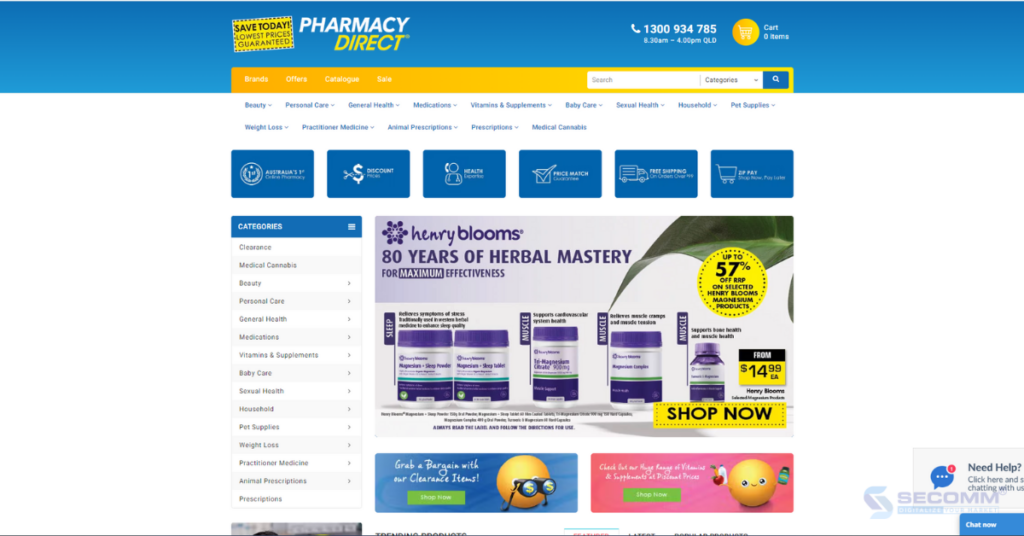
- Website: https://www.pharmacydirect.com.au/
- Industry: Pharmacy
- Traffic: 247.4K/month
- Ranking: #2,005 (Australia) & #126,629 (Worldwide)
Get Laid Beds
Get Laid Beds is a business specializing in handcrafting solid wood beds, founded in 2012 by John and Jean, a pair of architect and carpenter friends.
After more than 10 years of development, Get Laid Beds has expanded its product lines to include bedroom furniture, focusing on building its eCommerce website and enhancing customer service. This brand has gained popularity among customers in the UK and the US.
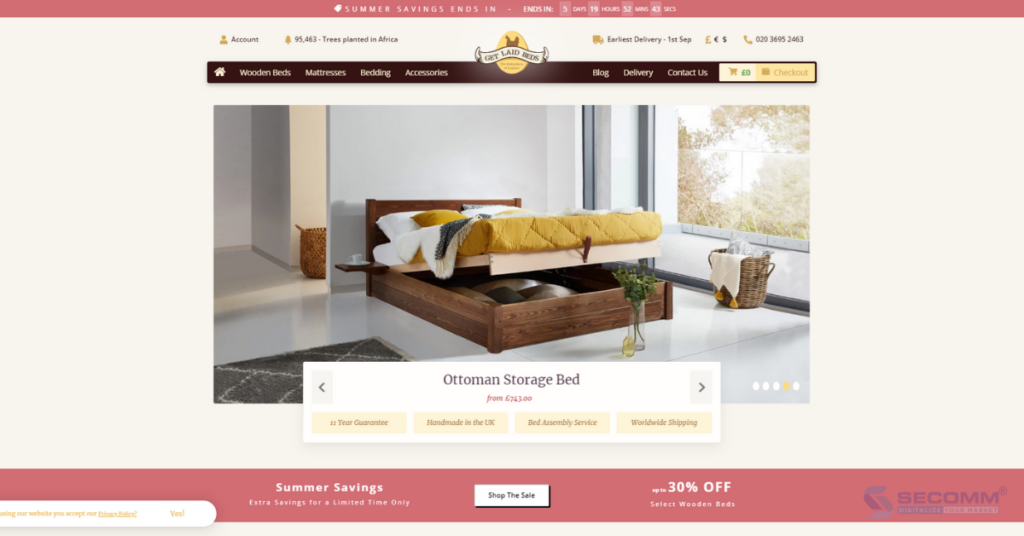
- Website: https://www.getlaidbeds.co.uk/
- Lĩnh vực: Nội thất
- Lưu lượng truy cập: 209.1 nghìn/tháng
- Xếp hạng: #7,415 (Anh) và #186,306 (Toàn cầu)
Self Edge
Self Edge is a men’s fashion brand with a vintage style, established in 2006 by the American couple Kiya and Demitra Babzani. Currently, Self Edge has a presence in major cities such as San Francisco, New York, Los Angeles, Portland, and San Jose del Cabo.
Additionally, Self Edge focuses on developing its eCommerce website to reach new customers across the United States and Mexico.
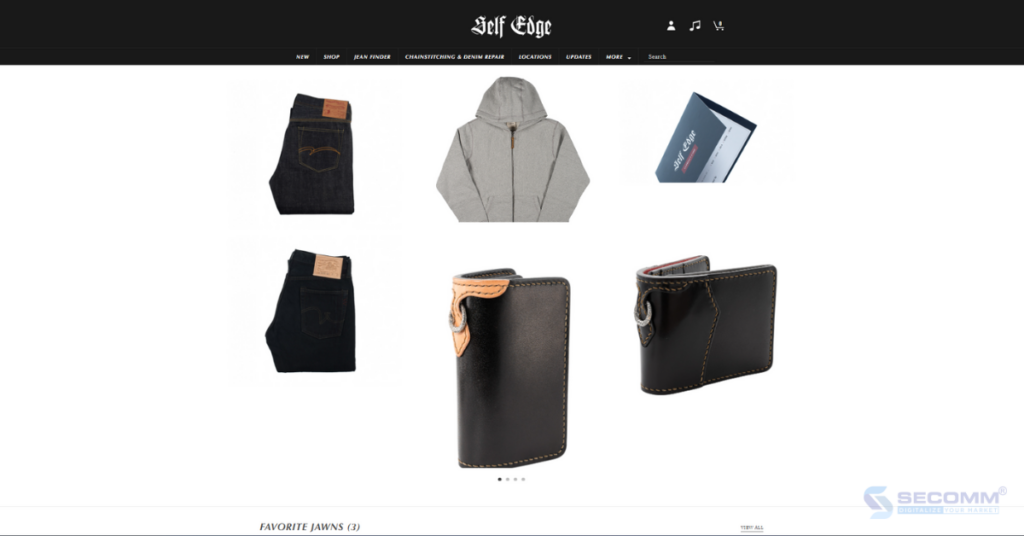
- Website: https://www.selfedge.com/
- Industry: Fashion
- Traffic: 194.5K/month
- Ranking: #67,298 (USA) & #223,754 (Worldwide)
BNA Model World
BNA Model World is a model business established in 2007 in Australia. Since its establishment, the brand’s management has focused on the eCommerce market and gradually upgraded its products/services. Currently, BNA Model World offers over 100,000 products from more than 1,000 manufacturers, serving over 104,000 customers worldwide.
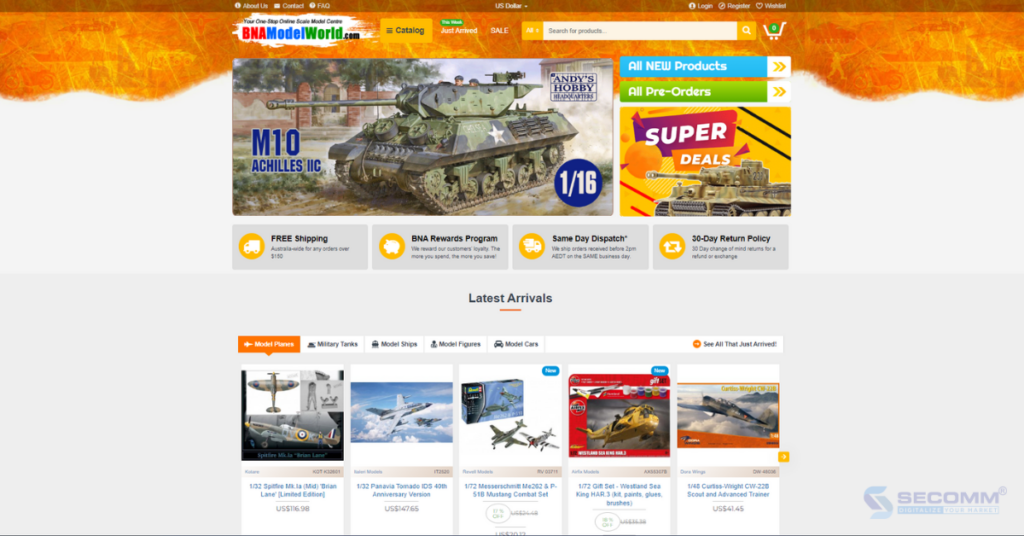
- Website: https://www.bnamodelworld.com/
- Industry: Model
- Traffic: 142.7K/month
- Ranking: #8,314 (Australia) & #226,563 (Worldwide)
Godukkan
Godukkan is a consumer electronics retail business established in 2017 and headquartered in Dubai, United Arab Emirates (UAE). Godukkan’s main goal is to become the number one eCommerce website in the UAE, offering a wide range of products, including laptops, mobile phones, tablets, PCs, gaming equipment, and more.
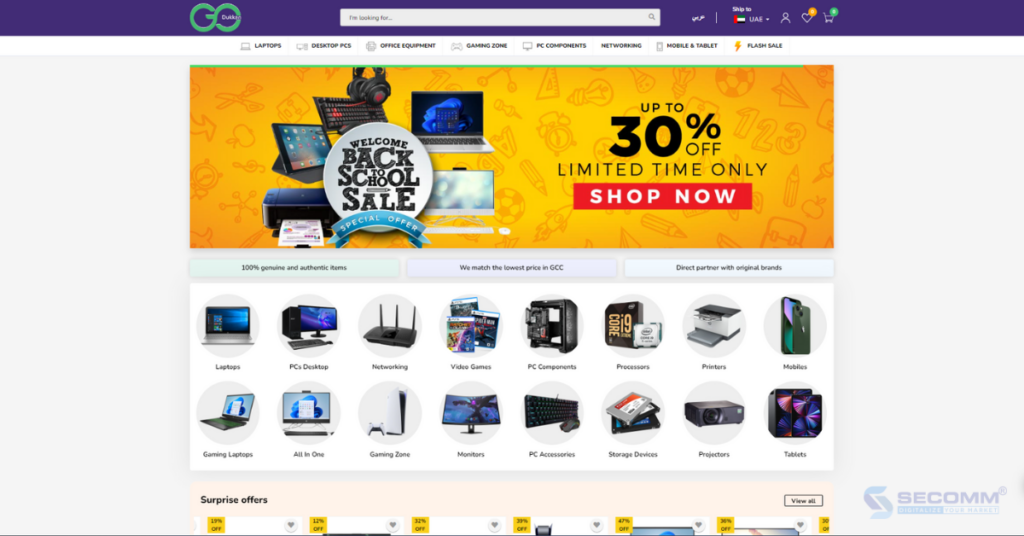
- Website: https://www.godukkan.com/
- Industry: Consumer Electronics
- Traffic: 136.4K/month
- Ranking: #2,893 (UAE) & #274,790 (Worldwide)
Get Er Brewed
Get Er Brewed is a beverage brand specializing in brewing beer, wine, tea, etc., as well as supplying fermentation ingredients and brewing equipment. The business was established in 2013 and is based in Northern Ireland.
In recent years, Get Er Brewed has expanded its reach by launching an OpenCart website to cater to an international customer base, achieving certain successes, particularly in securing contracts for the installation of fermentation and brewing systems.
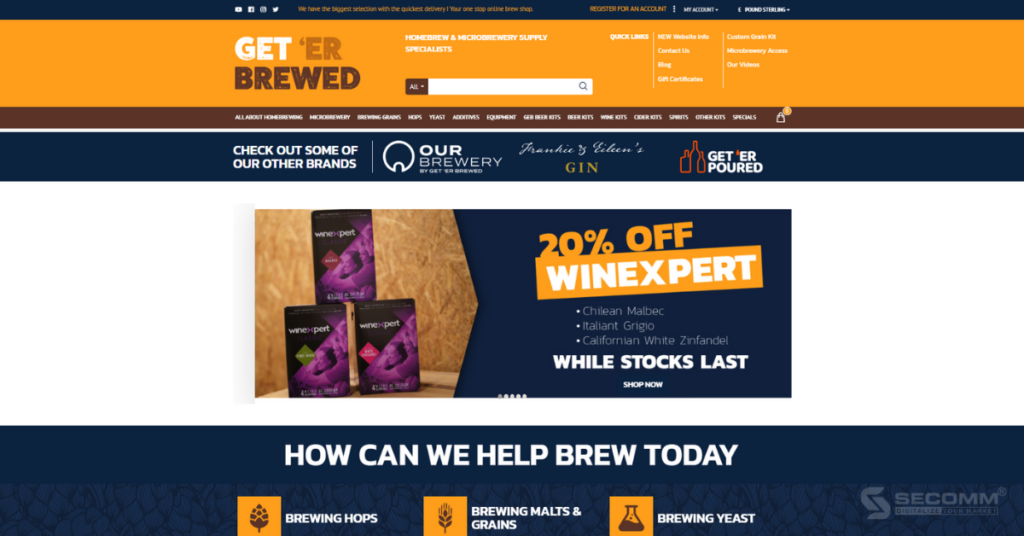
- Website: https://www.geterbrewed.com/
- Industry: Beverage
- Traffic: 110.0K/month
- Ranking: #38,209 (UK) và #380,234 (Worldwide)
CatSmart
With over 20 years of experience in the pet industry, brothers Raymond and Roger decided to establish CatSmart, the largest cat-centric brand in Singapore. Currently, CatSmart is actively investing in its OpenCart website and expanding its presence beyond traditional retail branches in the “Lion City.”
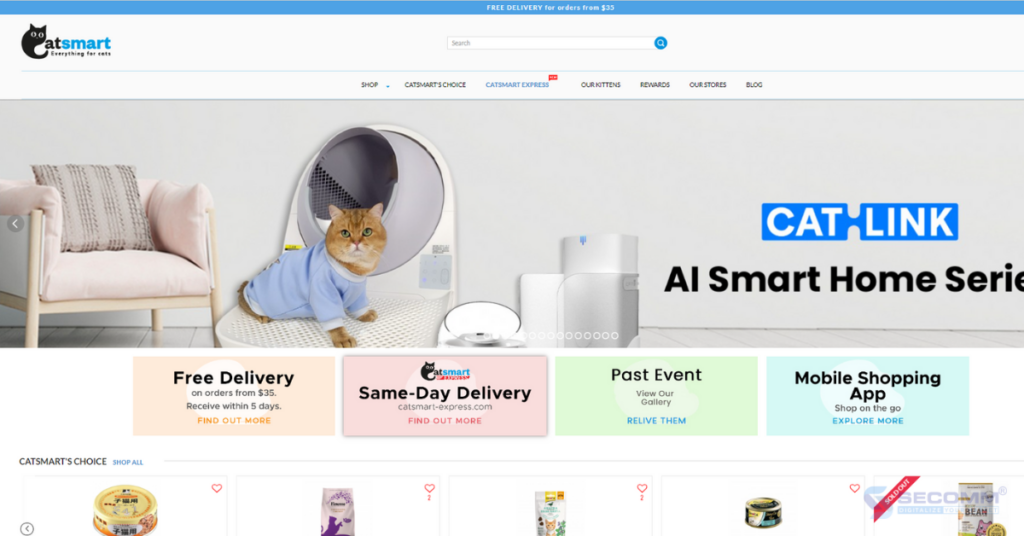
- Website: https://catsmart.com.sg/
- Industry: Pet
- Traffic: 48.8K/month
- Ranking: #850,172 (Singapore) & #9,174 (Worldwide)
Derails
Derails is a business specializing in designing and selling model trains, established in 2010. With the boom of eCommerce, Derails began building an OpenCart website to adapt to the changing market.
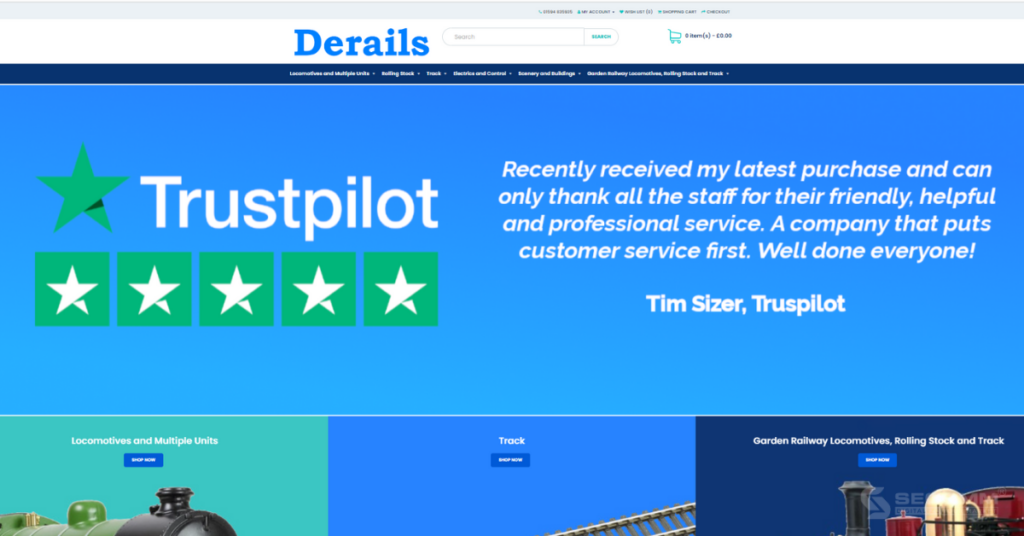
- Website: https://derails.co.uk/
- Industry: Model railways
- Traffic: 26.2K/month
- Ranking: #104,013 (UK) & #1,926,389 (Worldwide)
The Bottom Line
Here are 10 brands that have developed OpenCart websites and achieved success in both branding and revenue. This success serves as inspiration for other businesses seeking solutions to break through their operations and enhance competitiveness in the market.
Learn more: OpenCart vs Magento: Which Fits Your Business Best?
With extensive experience in deploying eCommerce for clients in many countries, SECOMM understands the difficulties and challenges that businesses face during implementation.
Contact SECOMM now or call the hotline at 02871089908 today for a free consultation.
 2
2

 7,827
7,827

 0
0

 1
1
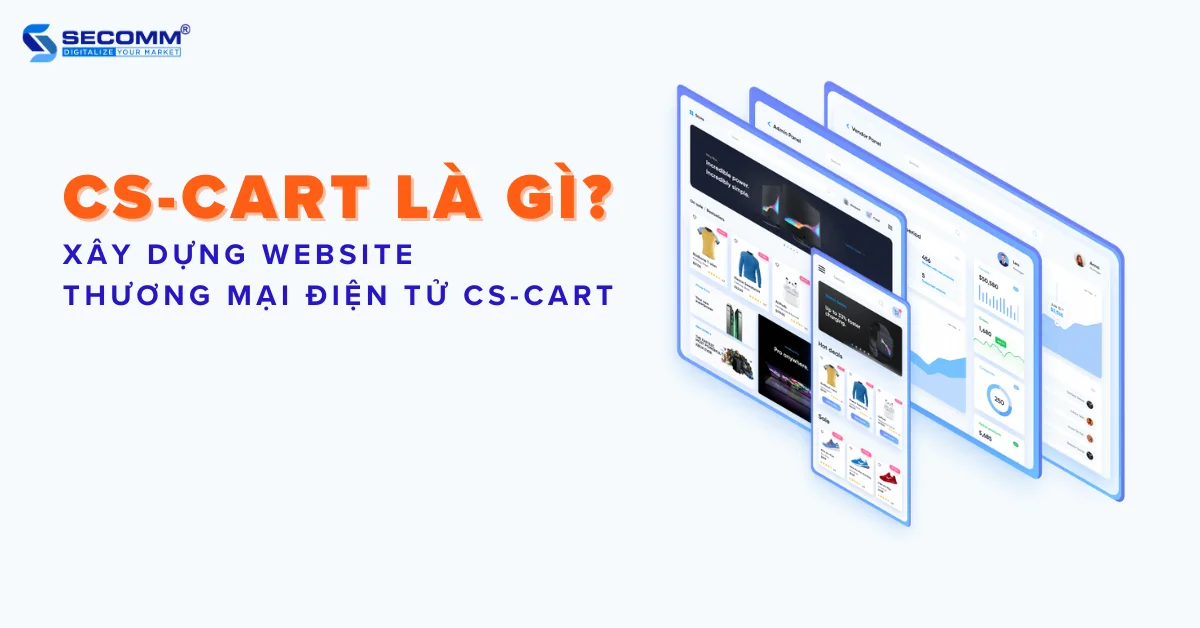
WHAT IS CS-CART? BUILD YOUR FIRST CS-CART ECOMMERCE WEBSITE
In the era of growing eCommerce, building an eCommerce website has become an essential part of how businesses approach and interact with customers. To successfully build and manage an online store, businesses will need to choose the right eCommerce platform that aligns with their business needs and wants. CS-Cart is one such eCommerce platform chosen by many medium and large-scale businesses.
According to BuiltWith, the platform currently supports approximately 13,232 websites globally, with Russia (about 3,772 websites) and the United States (about 2,809 websites) being the most prevalent markets.
In this article, SECOMM will share insights into what CS-Cart is and the advantages and disadvantages of this eCommerce platform.
What is CS-Cart?
CS-Cart is an open-source eCommerce platform that utilizes a SaaS (Software as a Service) model and was developed by Simbirsk Technologies Ltd. Launched for the first time in 2005, CS-Cart has gradually become one of the popular and trusted solutions used by many businesses worldwide.
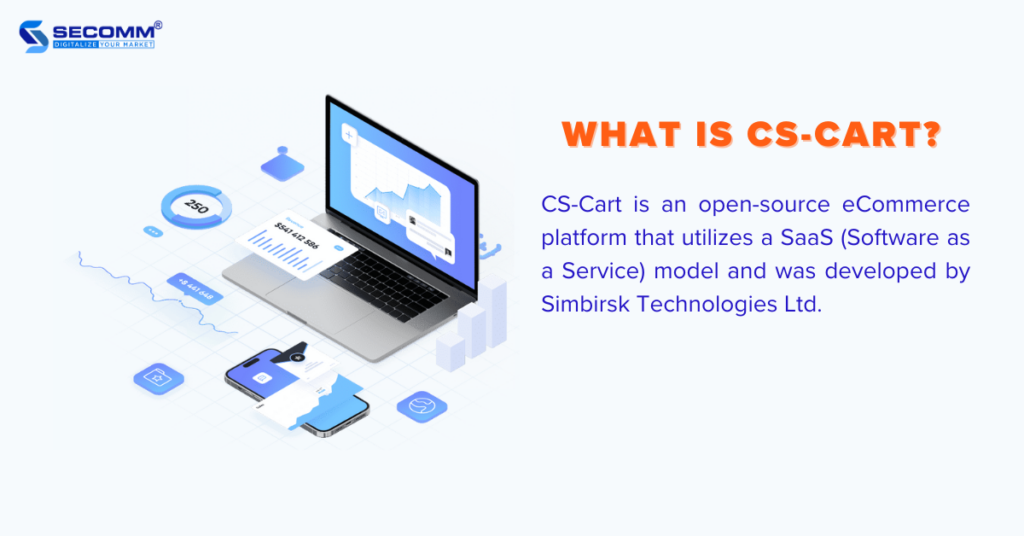
Some eCommerce websites currently using the CS-Cart platform include TechAble (USA), Yumbles (UK), Bakeshop (Australia), ToolBrothers (Germany), Inasbay (Canada), Nguyễn Kim (Vietnam), and more.
Currently, CS-Cart offers two main solutions: No-Code (a no-code e-commerce website builder) and On-Premises (an open-source eCommerce solution for website customization).
No-Code solution pricing:
- Basic: $95/month – For businesses with up to 500 products
- Pro: $155/month – For businesses with up to 5,000 products
- Advanced: $295/month – For businesses with up to 200,000 products
On-Premises solution pricing:
- Standard: $1,250/year – For businesses needing basic system customization
- Plus: $3,150/year – For businesses using open source for mobile applications
- Ultimate: $6,950/year – For businesses with multiple global markets and requiring centralized management
- Unlim: Contact for pricing – For businesses needing a permanent solution with a one-time payment.
Moreover, CS-Cart provides a free open-source version for businesses to freely apply for building eCommerce websites.
Advantages of building CS Cart website
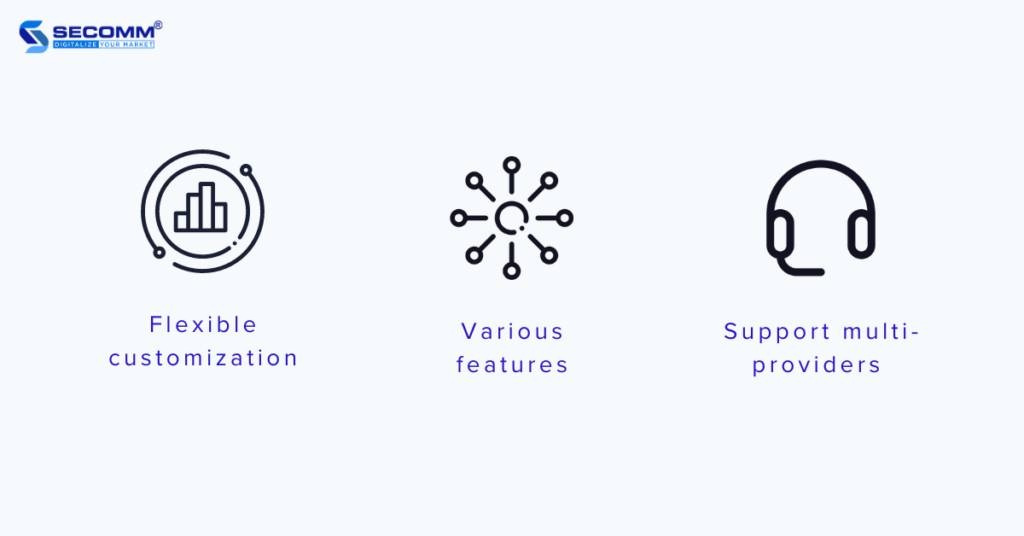
Flexible customization
One of the standout features of the CS-Cart platform is its flexibility, supporting businesses of both moderate and large scales in the eCommerce market.
Beyond employing open-source with the PHP language, CS-Cart also implements Headless architecture, allowing businesses extensive customization capabilities. This flexibility empowers businesses to create eCommerce websites tailored to their specific needs, delivering a unique and memorable shopping experience for customers.
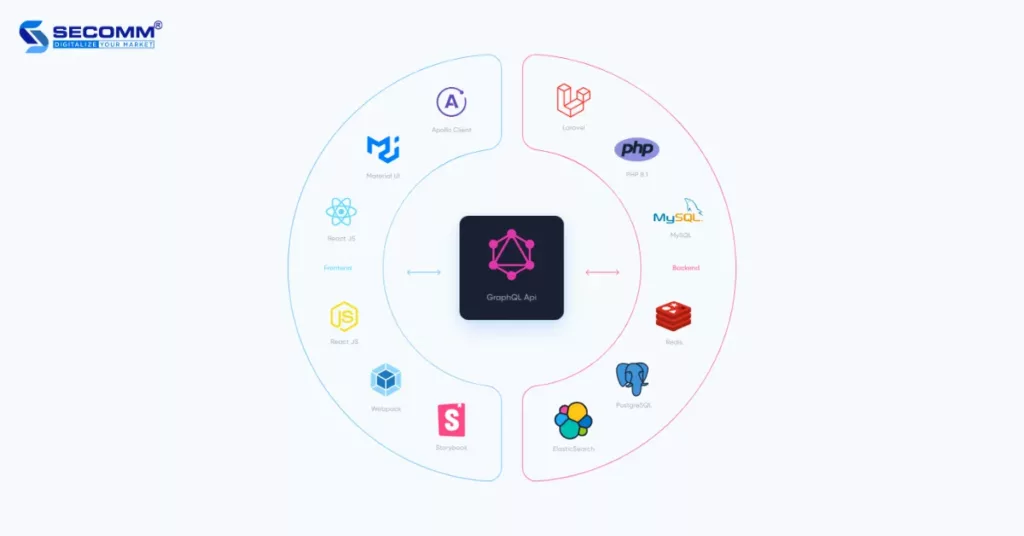
Various features
CS-Cart provides a comprehensive range of features from A to Z for operating an eCommerce system for businesses, including over 500 features and 2,000 available add-ons. From product management and order processing to marketing and SEO optimization, among others
This richness helps businesses minimize the need to integrate numerous third-party plugins, streamlining the technology stack of the eCommerce website.
Support multi-providers
CS-Cart is highly praised for its ability to connect and manage multiple suppliers with customers. This multi-vendor capability optimizes the management of different sellers, inventory, and payments, making the website system an ideal solution for businesses looking to oversee multiple suppliers on a single platform.
Disadvantages of building CS Cart website
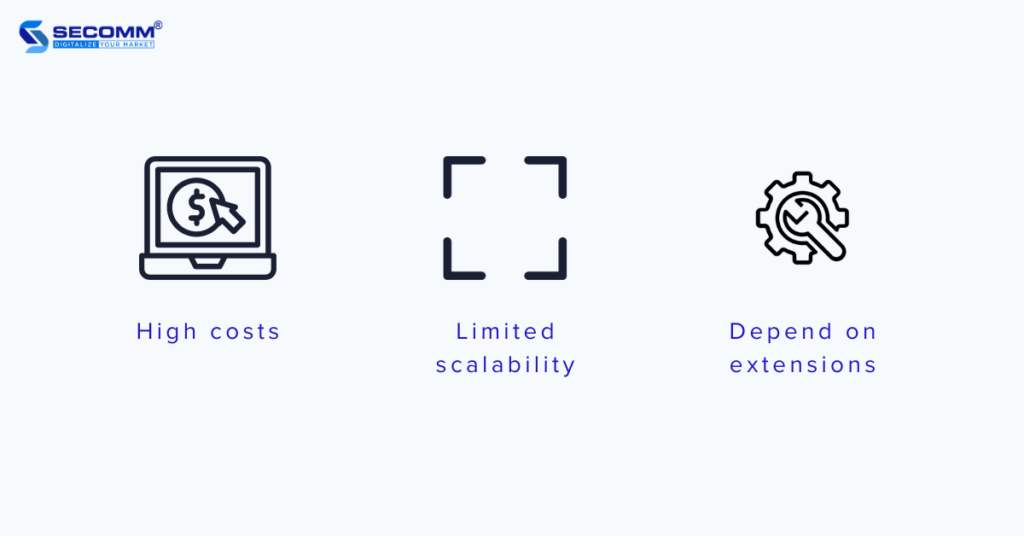
High costs
The paid versions, No-Code, and On-Premises, are considered to have relatively high usage costs. Additionally, the free version of CS-Cart may not be sufficient to meet the needs of building an eCommerce website for businesses, especially larger ones.
Businesses should note that many advanced features and functionalities will require purchasing licenses or additional add-ons. The costs associated with these add-ons and development and customization expenses can accumulate, particularly for small businesses or startups with limited budgets.
Limited scalability
While CS-Cart is suitable for a variety of business scales, it may not be the most scalable solution for rapidly growing businesses with high levels of traffic and transactions. As businesses expand, performance issues may arise, necessitating improvements to the system’s performance or a transition to another platform.
Depend on extensions
Although CS-Cart provides many comprehensive features, some businesses feel the need for specific functionalities, requiring the purchase or development of additional third-party add-ons outside the CS-Cart ecosystem.
Relying heavily on third-party add-ons can lead to issues of compatibility, security concerns, and difficulties during the upgrade process.
The Bottom Line
In general, CS-Cart is an eCommerce platform suitable for businesses seeking an open-source solution, especially those with a medium scale. However, when upgrading to a more specialized and complex eCommerce website system, businesses will need to invest additional costs and resources to scale up the system.
These are the details about CS Cart, along with its notable advantages and disadvantages that businesses should consider when developing an eCommerce website.
After years of implementing eCommerce solutions for various businesses across different countries, SECOMM has accumulated valuable experience in helping businesses build and develop effective eCommerce websites.
Contact SECOMM or call the hotline at 02871089908 for advice on choosing a platform and deploying eCommerce today!
 2
2

 5,358
5,358

 0
0

 1
1
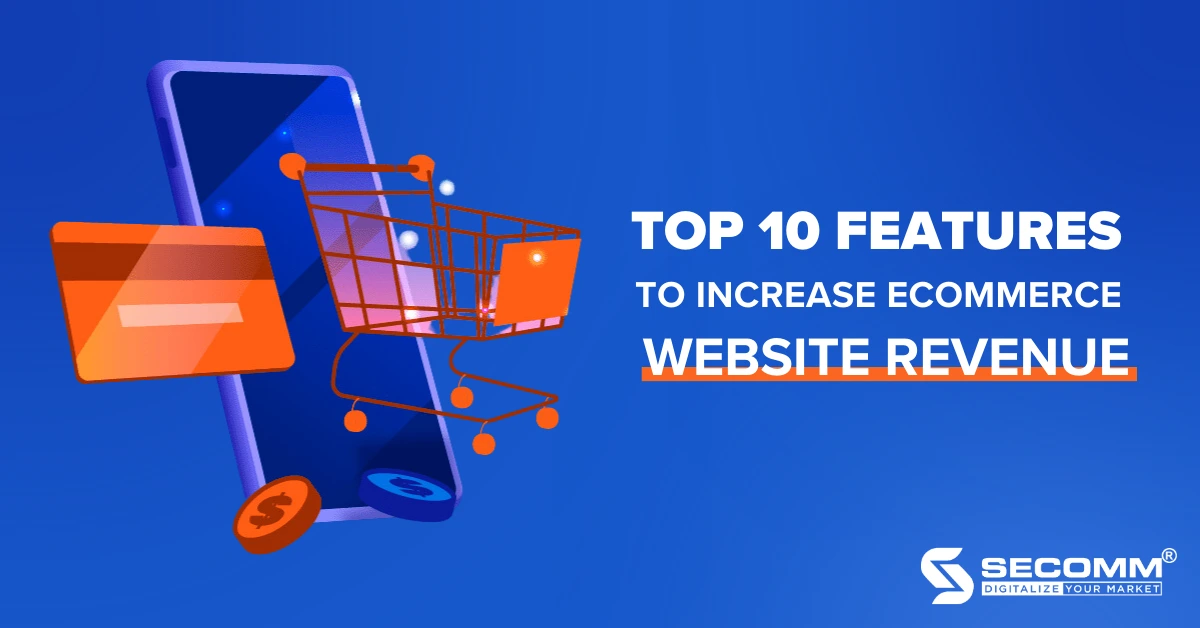
10 ECOMMERCE WEBSITE FEATURES FOR YOUR REVENUE INCREASE
eCommerce has become an essential trend for successful business in the Vietnamese market. According to a report from Facebook’s SYNC Southeast Asia and consulting firm Bain & Company, Vietnam is expected to be the fastest-growing eCommerce market in Southeast Asia by 2026, with a total eCommerce goods value reaching $56 billion, 4.5 times that of 2021, ranking second in the region.
To harness the advantages of this thriving market, businesses need an eCommerce website system with a full range of functionalities, from basic to advanced. Therefore, planning a step-by-step construction of the functional system is crucial to avoid situations where there are ‘missing essentials’ or ‘unnecessary features’ for the business.
Here are some specialized functionalities that any eCommerce website system for businesses in this lucrative market should have!
Display High-Resolution Images and Videos
Images and videos play a crucial role in allowing customers to evaluate the quality of products, especially high-involvement items like jewellery, watches, gemstones, etc.
Additionally, businesses can incorporate features such as 360-degree views, Augmented Reality (AR), or Virtual Reality (VR) to help customers get a comprehensive and realistic view of the product’s quality on the eCommerce website.
In today’s era where ‘good wood comes with good paint,’ investing in high-quality images or videos enhances the impression of a business’s products in the eyes of consumers and demonstrates the professionalism of the brand. Consequently, businesses can keep customers engaged on the website for longer periods, reduce bounce rates, and boost online sales.

Advanced Product Filtering and Search Functionality
One of the essential features of modern eCommerce systems is the ability to filter and search for products effectively, such as live search or ElasticSearch in Magento.
This feature plays a role in directing customers to the detailed product information they are looking to purchase, enhancing the overall customer experience and shortening the shopping journey.
As a result, businesses can improve customer satisfaction and streamline the purchasing process.

Wishlist
Sometimes, customers may be interested in a particular product but decide to purchase it later, or they might find an intriguing product and want to check detailed information before making a buying decision. In such cases, a wishlist allows customers to store these products for easy retrieval when they are ready to make a purchase decision.

Attractive promotions
Although promotional programs are not unfamiliar to consumers in the eCommerce market, this feature has never gone out of fashion for businesses. According to Google, up to 75% of customers view advertisements before making a purchase, and 84% of customers use information from ads to research product details.

Frequently displaying promotional programs/deals such as flash sales, D-Day promotions, festive season offers, etc., will stimulate customers’ ‘sale hunting’ desires, increase website traffic significantly, and boost sales for businesses.
Up-selling and Cross-selling
After leveraging and analyzing the collected data from customers, an advanced eCommerce website system can provide suggestions for similar or related products, aiming to increase the quantity and value of orders. This, in turn, contributes to the growth of online sales revenue for the business.

Up-selling is a technique aimed at selling a more expensive version of a product that a customer already has or intends to purchase by adding new features or accessories to that product. Meanwhile, Cross-selling is a technique aimed at selling complementary products, items that may be related to the product a customer has purchased or intends to buy.
In addition to suggestions for similar and related products on the homepage, product category page, product detail page, and search results page, Up-selling and Cross-selling are also designed to appear on the checkout page to encourage customers to spend more.
Quick order
The quick order placement feature is an essential function for an eCommerce website. To expedite the shopping process, it’s not enough to have a step-by-step ordering process. Businesses need to design a ‘quick order’ function that allows customers to add products to the checkout page immediately. This will be a significant advantage for businesses to expedite the customer’s ‘order confirmation’ process, thereby generating a surge in online sales.

One-step Checkout
Typically, the default checkout process on an eCommerce website is a step-by-step procedure, meaning that each step is completed automatically only after the customer finishes the previous one until the entire process is completed.
According to a report from Adobe, 88% of customers abandon their purchases simply because the checkout process takes too much time and is complicated. To streamline this cumbersome payment process, the One Step Checkout feature has been introduced. This feature provides essential information to customers in just one step, facilitating faster transactions and creating a smoother payment process.

Various payment methods
Diverse payment methods, including card payments (local cards, VISA, Mastercard), e-wallets (MOMO, Zalopay), payment gateways (OnePay, VNPay, PayPal, Stripe), and Cash on Delivery (COD), will enhance the shopping experience for customers. Additionally, businesses should stay updated on emerging payment trends in the eCommerce market, such as creating their digital wallets, implementing Buy Now – Pay Later options, etc., to build a Loyalty Program and provide more payment choices for customers.

However, to diversify payment methods, businesses should choose open-source eCommerce platforms such as Magento, WooCommerce, and OpenCart to have high integration capabilities and ensure compatibility between payment software and the company’s website.
Product reviews
According to a report from Customer Gauge, 92% of customers will read product reviews from other users before making a purchasing decision. Therefore, the product review feature is always prioritized by businesses to be included in the functionality system from the beginning to enhance the brand’s credibility.
A website with many positive comments from previous users will attract attention and trust from potential new customers, laying the foundation for revenue growth for the business. In addition, negative reviews will help businesses identify the weaknesses of the product, thereby motivating them to improve product quality and services for the future.

Compatible on multiple devices
In addition to a visually appealing interface and standard UI/UX, the ability to be compatible across multiple devices such as desktops, smartphones, and tablets is a mandatory feature that must be present on the interface of an eCommerce website. This is not only a factor affecting the Omnichannel experience of customers but also a criterion that influences SEO and rankings from Google.

Furthermore, many other features need to be considered for integration into the functional system of the eCommerce website of the business. This will depend on the strategy and business model of each enterprise, as well as the eCommerce platform the business is using.
With SaaS platforms, businesses will not have many options for features since these systems are pre-built, making it difficult to modify the source code and potentially causing instability if there are automatic edits or additions/removals of features.
In contrast, with open-source platforms, businesses have the freedom to choose features to build at each stage of brand development, as well as the ability to integrate with third-party utilities more easily than SaaS platforms.
With deep expertise and experience in developing complex eCommerce systems across multiple countries such as Vietnam, Australia, the US, and New Zealand, SECOMM understands the challenges in the process of building and deploying eCommerce functions that businesses are currently facing.
Contact SECOMM now for a free consultation on detailed eCommerce system development solutions!
 2
2

 8,602
8,602

 0
0

 1
1
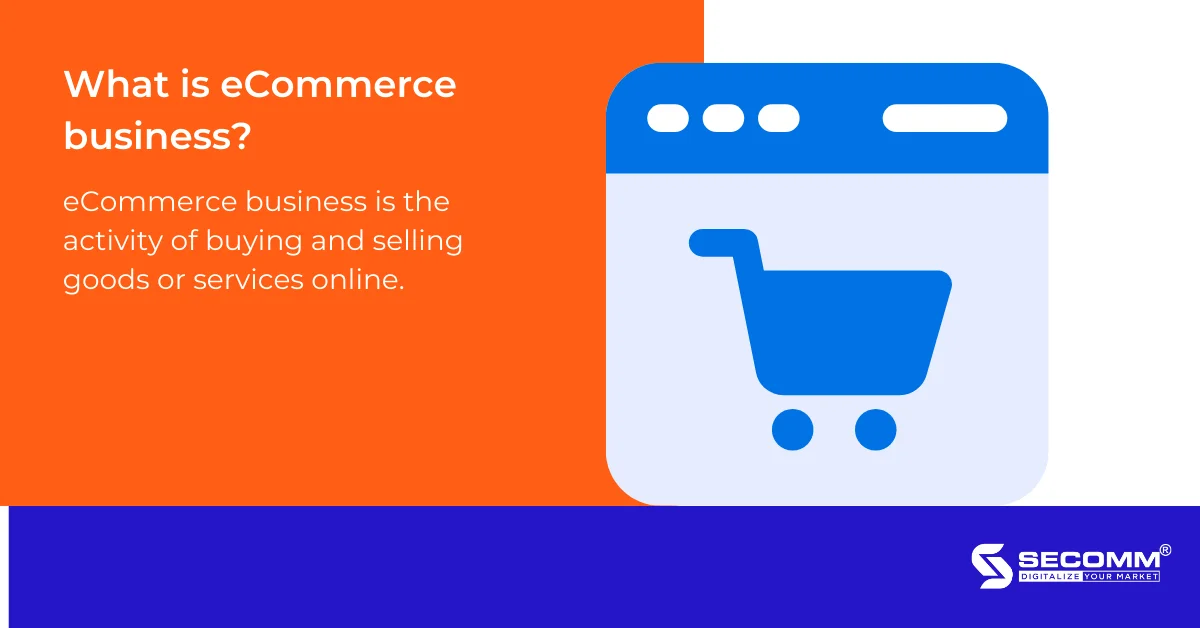
8 STEPS TO START A SUSTAINABLE ECOMMERCE BUSINESS
For businesses that are just entering the market, the term “eCommerce” is often recognized through eCommerce marketplaces. Most managers are often unsure of where to start, including which systems to use, which eCommerce platform to choose for development, and what steps to take next.
Therefore, in this article, SECOMM will share comprehensive information from basics to advanced levels to kickstart eCommerce business in Vietnam.
Learn about eCommerce business
According to Decree No. 52/2013/ND-CP on eCommerce: “eCommerce activities involve conducting all or part of the commercial process through electronic means connected to the Internet, mobile telecommunications networks, or other open networks.”
In simpler terms, eCommerce business is the activity of buying and selling goods or services online.
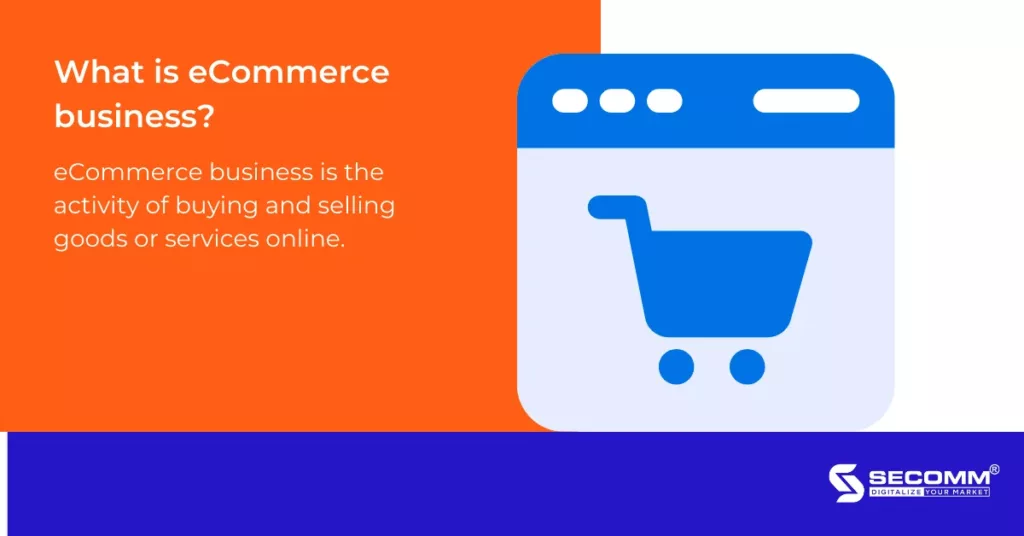
Popular eCommerce models
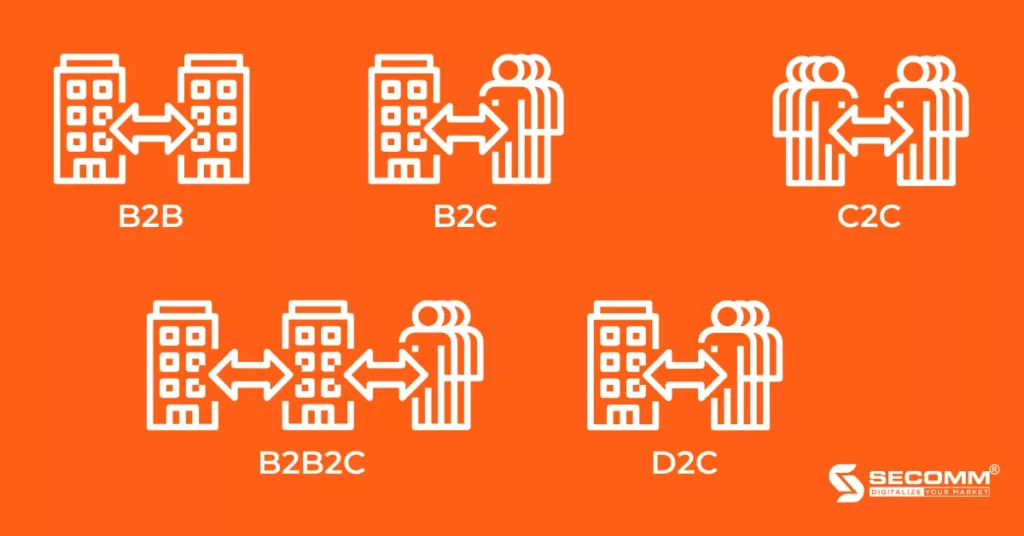
B2C
B2C (Business to Customer) involves transactions between businesses and customers. This is also the most common model in the Vietnamese market.
Example: Thế Giới Di Động is the number one retail model in Vietnam’s eCommerce market for devices such as phones, laptops, tablets, and accessories.

- Website: https://www.thegioididong.com/
- Monthly traffic: 62.23 million
- Website ranking: #19 (Vietnam), #758 (Global)
B2B
B2B (Business to Business) involves commercial transactions between two businesses.
Example: TELIO is Vietnam’s first B2B eCommerce platform, facilitating the connection between small-scale traditional retailers and brands by aggregating demand, providing more choices, better prices, and more efficient logistics support.

- Website: https://www.telio.vn/
- Monthly traffic: 5 million
- Website ranking: #112,909 (Vietnam), #6,105,937 (Global)
B2B2C
B2B2C (Business to Business to Customer) is a business model that involves collaboration between two businesses (B2B) to create and deliver products or services to end consumers (B2C).
Example: Shopee is the most popular eCommerce platform in Vietnam. Shopee Vietnam initially operated under a C2C model, serving as an intermediary in the buying and selling process between individuals. However, Shopee Vietnam has evolved into a B2B2C hybrid model by offering various services and conveniences to support the shopping process for both businesses and consumers.
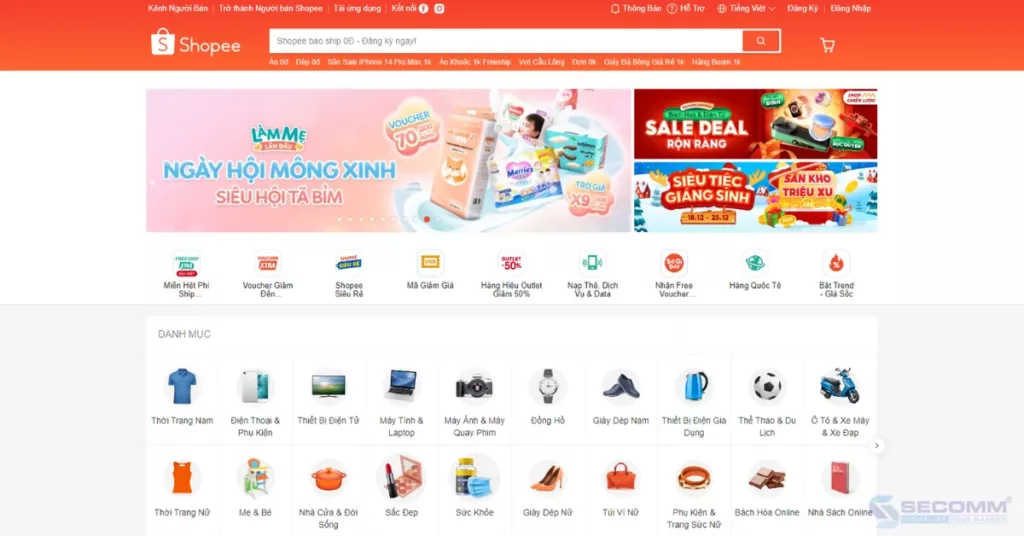
- Website: https://shopee.vn/
- Monthly traffic: 105.5 million
- Website ranking: #6 (Vietnam), #295 (Global)
C2C
C2C (Consumer to Consumer) is a form of business where transactions occur directly between two individuals rather than involving businesses.
Example: Chợ Tốt is an eCommerce website that facilitates transactions between individual sellers and buyers for items such as real estate, cars, job postings, used electronics, pets, and various home services.

- Website: https://www.chotot.com/
- Monthly traffic: 13.19 million
- Website ranking: #54 (Vietnam), #2,980 (Global)
D2C
D2C (Direct to Customer) is a business model that delivers products directly from the business to the customer, bypassing intermediary distribution channels.
Example: Coolmate is a men’s fashion startup established in 2019. Within just 2 years of operation, the brand raised a rapid $500,000 in funding for Sharktank.
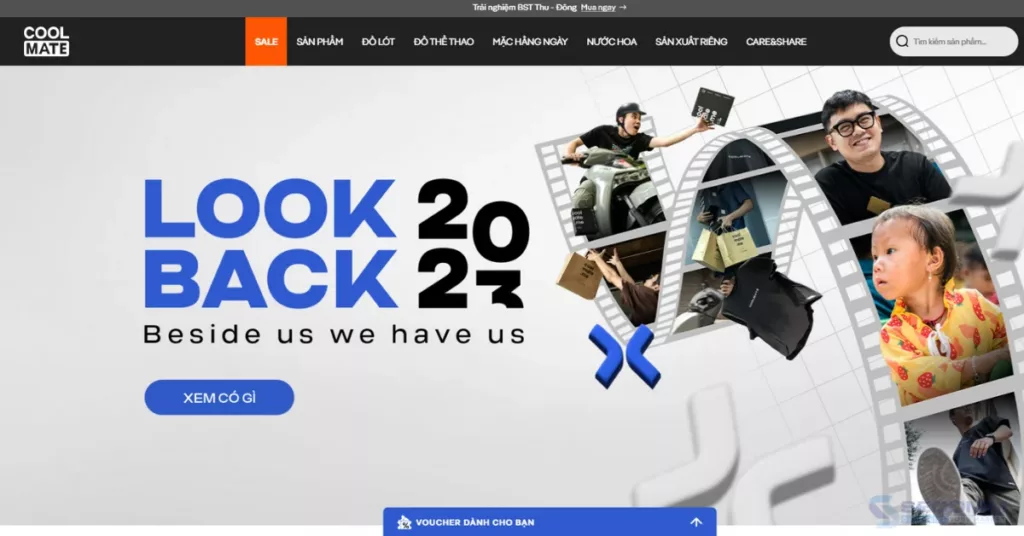
- Website: https://www.coolmate.me/
- Monthly traffic: 1.204 million
- Website ranking: #861 (Vietnam), #46,051 (Global)
Steps to start a sustainable eCommerce business
Step 1. Make an eCommerce business plan
When starting to plan a business, the first step that managers should take is market research to understand the overall market situation, details about competitors, trends, and consumer behaviour. Some free and reputable sources businesses can refer to include the White Paper on eCommerce in Vietnam by IDEA, the e-Conomy SEA report by Google & Temasek, the eCommerce Index report by Vecom, etc.
After conducting market research, the next thing businesses should pay attention to is defining objectives, such as adding sales channels to increase revenue, positioning the brand in the eCommerce market, supporting marketing campaigns, enhancing user experience and interaction, etc.
Following market research and goal setting, businesses should also budget and plan the implementation timeline for each stage of eCommerce operations. Depending on the goals and strategies, each business will set budgets and timelines for the most effective eCommerce operations.
Step 2. Build an eCommerce system
Next, businesses need to choose an eCommerce platform to build a system that aligns with the brand’s scale and strategy. The components of an eCommerce system typically include a website and an eCommerce website application.
There are two main types of platforms nowadays: SaaS (Software as a Service) and Open Source.
For Open Source platforms:
- Advantages: Full ownership of source code and data, the ability to build advanced features, flexible customization, easy integration, and scalability.
- Disadvantages: High initial development costs and specialized expertise required, often requiring experienced professionals for implementation.
- Popular Open Source platforms: Magento, WooCommerce, OpenCart, PrestaShop, etc.
- Target users: Suitable for businesses looking for a long-term investment, aiming to save costs in the future.
For SaaS platforms:
- Advantages: User-friendly, many pre-built interfaces and features, low initial costs.
- Disadvantages: Increasing usage fees over time, limited customization and scalability, and challenging integration with external tools.
- Popular SaaS platforms: Haravan, Shopify Plus, BigCommerce, Squarespace, Wix, etc.
- Target users: Suitable for businesses needing a simple website with minimal customization.
Once the eCommerce platform is selected, businesses have two options for resources to build the website: building an in-house team or using services from developers.
For building an in-house team, businesses need to recruit and train IT and eCommerce professionals with expertise and experience on the chosen platform. This process may take time and budget to build a suitable team but provides better control over resources, allowing adjustments or developments according to specific requirements.
For collaborating with development firms, businesses should seek developers based on criteria such as deep experience in eCommerce, an experienced team, a clear process, quick handling and support, and commitments to warranty and maintenance. This approach helps businesses gain professional expertise, enhance experience, and develop a suitable website.
Step 3. Set up eCommerce payment methods
In the eCommerce market, there are various payment methods, with Cash on Delivery (COD) being the most common. However, due to the rise of “cashless” payment trends amid the Covid-19 pandemic, electronic payment methods are gaining more prominence.
Some payment methods chosen by eCommerce businesses include:
- Bank Transfer: Transferring money from the buyer’s bank account to the seller’s bank account to pay for products or services. Internet Banking and Mobile Banking are gradually replacing traditional ATM transfers.
- Online Payment Gateways: Systems connecting banks, buyers, and sellers, allowing the seller to receive funds immediately when online transactions are completed. Some popular gateways in Vietnam such as VNPay, ZaloPay, Payoo, Paypal, Onepay, etc.
- E-wallets: Payment through e-wallets involves linking a bank account, depositing money into the wallet, and making simple and convenient payments for linked services. Some popular E-wallets in Vietnam such as Momo, ZaloPay, VNPay.
- Scratch Cards: Allowing users to pay or top up their electronic accounts by purchasing scratch cards from mobile network providers such as Viettel, Mobifone, Vinaphone, etc. However, this payment method is often limited to certain eCommerce platforms and specific websites.
- Brand-Specific Cards/Wallets: Payment methods designed and allowed for use within the system of a specific brand or business. Some popular wallets such as Shopee Wallet, Lazada’s eM Wallet, Starbucks Card, VinID by VinGroup.
- E-vouchers: Also known as online discount vouchers/codes provided by eCommerce businesses like Shopee, Lazada, Tiki, etc.
Step 4. Build a fulfilment process
Usually, a fulfilment process includes the following steps: Importing goods or manufacturing → Shipping to warehouse/distribution centre → Warehousing → Processing goods upon request (Shipping, invoicing, packaging, labelling) → Delivery → Handling post-sale requests (Returns, refunds, exchanges).
Therefore, a comprehensive eCommerce system needs to build or integrate functionalities such as eLogistics, blockchain, QR codes, etc., to automate the shipping process, track orders, and thereby enhance the quality of delivery to end consumers.
Step 5. Improve customer care system
A Customer Relationship Management (CRM) system is an essential component in the operation of eCommerce businesses. Building and continuously improving the CRM system, as well as implementing a multi-channel customer care centre, helps expedite the processing of complaints, returns, and refunds. Additionally, a CRM system assists businesses in gaining insights into customer needs, facilitating the establishment of interactions between the brand and its customers.
Step 6: eCommerce System Maintenance
Maintaining the eCommerce system 24/7, continually updating and upgrading it helps businesses promptly address arising issues, achieve sustainable sales growth, and adapt quickly to the ever-changing market. Simultaneously, continuous monitoring and maintaining eCommerce operations aim to prevent risks from hackers, data breaches, etc.
Step 7: eCommerce Growth Strategy
One of the crucial strategies in current eCommerce operations is omnichannel selling. By following customers’ “footprints” across eCommerce platforms (Shopee, Lazada, Tiki, Sendo), social media (Facebook, TikTok, Instagram, Zalo), websites, and eCommerce apps, this strategy centralizes customer data, reaches diverse shopping behaviours, and optimizes personalized experiences in the eCommerce system. Additionally, various eCommerce marketing campaigns are being developed, such as Affiliate Marketing, Shoppertainment, SEO, Email Marketing, etc. This strategy optimizes brand visibility and boosts online sales.
Step 8: Optimization of eCommerce Business Operations
Building reporting functions to exploit the efficiency of data, including reports on Sales, Marketing, Customers, Inventory, and Operational Performance, to improve and enhance business efficiency. Integrating analytical tools such as Google Analytics, Facebook Pixels, Microsoft Power BI, etc., supports tracking and measuring system performance to provide detailed reports on business results in eCommerce.
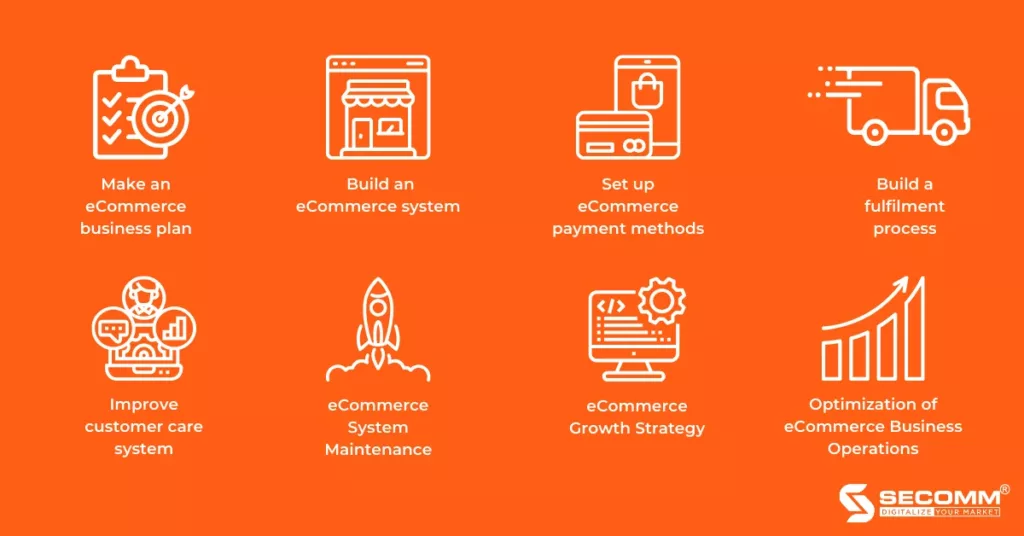
In summary, conducting eCommerce based on the above 8 steps is not an easy task for business managers. To stay competitive in the eCommerce race, various factors come into play, including financial strength, human resources, the general economic situation, changes in consumer behaviour, etc. Therefore, managers need to be cautious when making critical decisions to bring business efficiency.
With over 9 years of experience in designing complex eCommerce systems for companies like Annam Gourmet, Laybyland, and Jasnor, SECOMM understands the challenges businesses face in researching and efficiently implementing eCommerce.
Contact SECOMM now for free consultation on detailed eCommerce system development solutions!
 2
2

 14,876
14,876

 0
0

 1
1
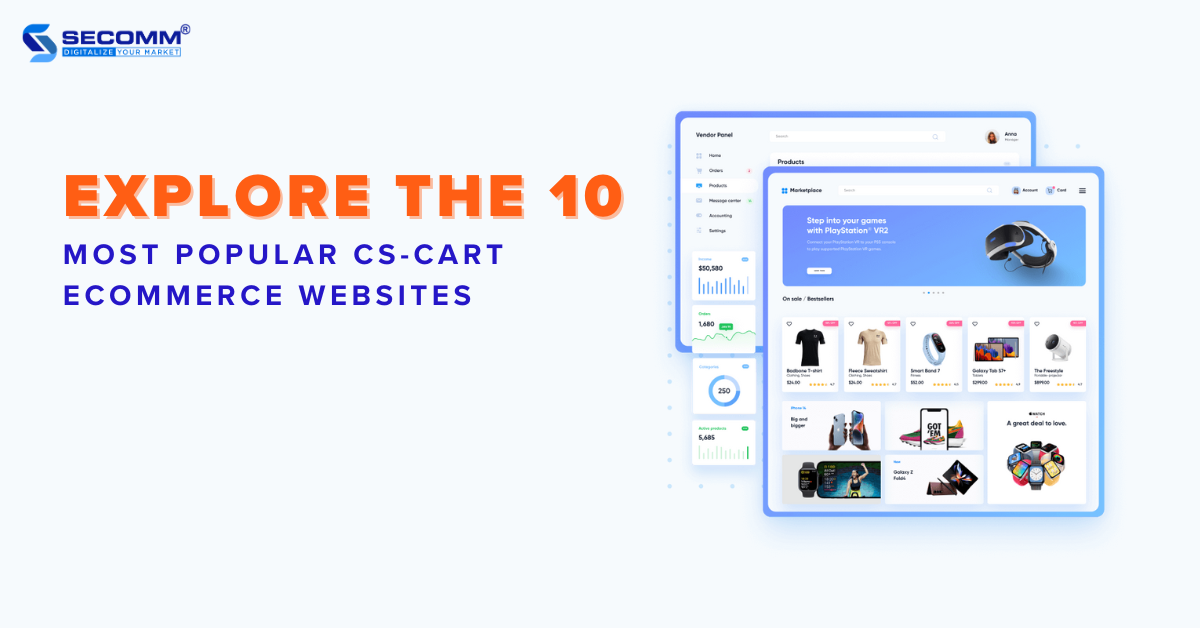
EXPLORE THE 10 MOST POPULAR CS-CART ECOMMERCE WEBSITES
CS-Cart is a versatile eCommerce platform, available in both open-source and SaaS models. Established in 2005 under Simbirsk Technologies Ltd., it has garnered trust from medium-sized and large businesses. Its reputation is built on robust customization options, numerous features, and supplementary utilities within its ecosystem.
Listed below are brands that have built their CS-Cart eCommerce websites.
House of CB
House of CB is a leading women’s fashion brand in London, United Kingdom. Renowned for its meticulously crafted collections tailored for significant events, the brand was established by Conna Walker at the age of 17, backed by a £3,000 loan from her father.

Faced with initial capital constraints, House of CB strategically leverages eCommerce to engage with its potential customers. Over time, the brand has graced the wardrobes of numerous Hollywood luminaries, including Beyonce, Gigi Hadid, Lady Gaga, Jennifer Lopez, and the Kardashians.
- Website: https://www.houseofcb.com/
- Industry: Fashion
- Traffic: 1.8M/month (7/2023)
- Ranking: #28,116 (Worldwide), #12,982 (UK)
Maxbhi
Maxbhi is an eCommerce venture operated by Elcotek India Private Limited in India. The CS-Cart website is dedicated to offering a wide range of accessories for electronic devices, including mobile phones, tablets, laptops, and more, specifically within the Indian market.
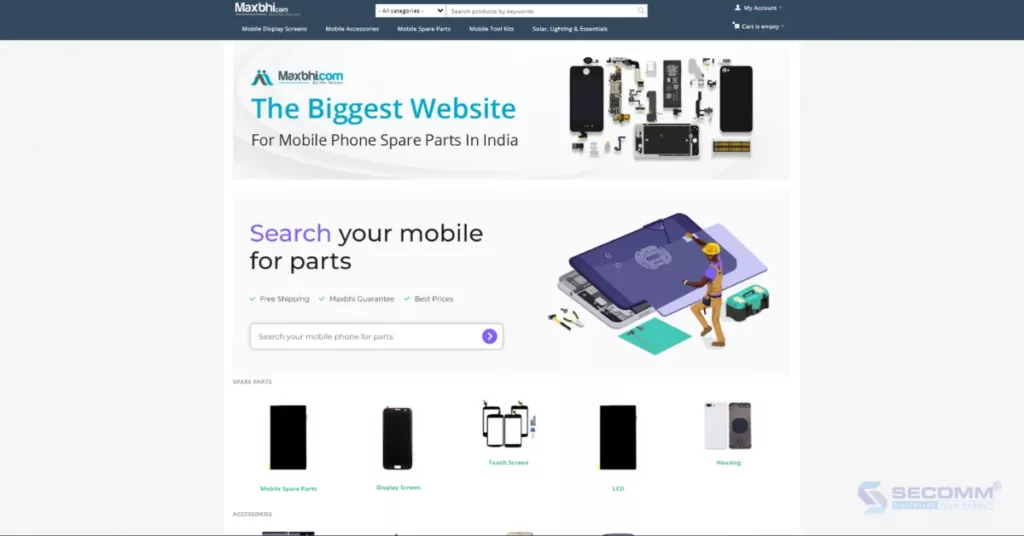
Launched in 2004 in Ghaziabad, India, this CS-Cart eCommerce website has grown to become one of the largest and most enduring online stores for phone accessories in the country.
- Website: http://maxbhi.com/
- Industry: Consumer electronics
- Traffic: 1.7M/month (7/2023)
- Ranking: #32,992 (Worldwide), #2,410 (India)
Harvey Norman
Harvey Norman is a leading retailer in New Zealand, offering a diverse range of products including computers, electronics, furniture, bedding, and household appliances from renowned global brands.
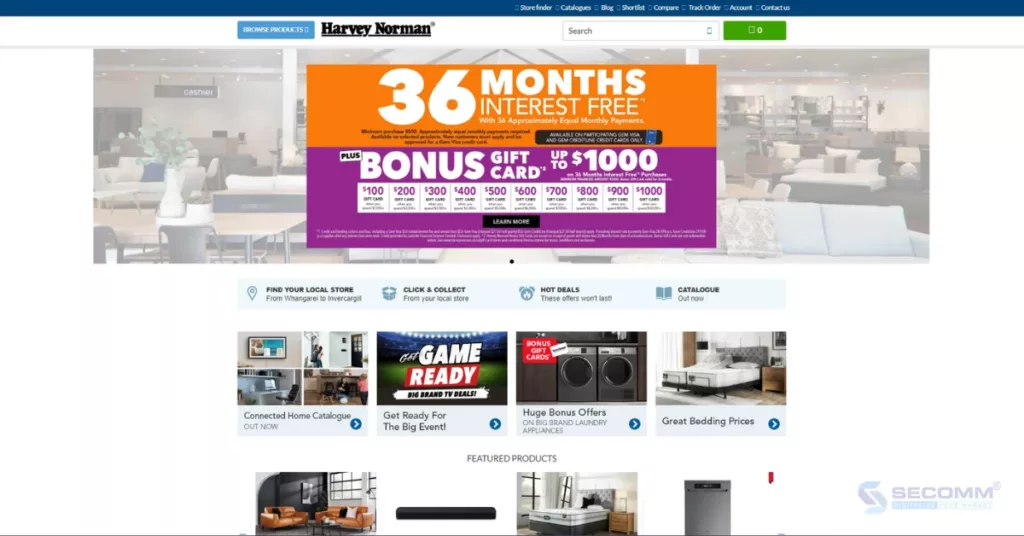
This initiative is part of the franchise system operated by Harvey Norman Holdings Limited, a publicly listed company on the Australian Securities Exchange Limited. The company’s main activities encompass retail, franchise operations, real estate, and digital enterprises.
- Website: https://www.harveynorman.co.nz/
- Industry: Retail
- Traffic: 1.4M/month (7/2023)
- Ranking: #40,692 (Worldwide), #115 (New Zealand)
Enter
Enter stands out as one of Moldova’s major retailers in the consumer electronics sector. Boasting a network of 25 traditional stores across the country, Enter focuses on delivering a wide range of electronic devices, including mobile phones, tech accessories, home appliances, and more.
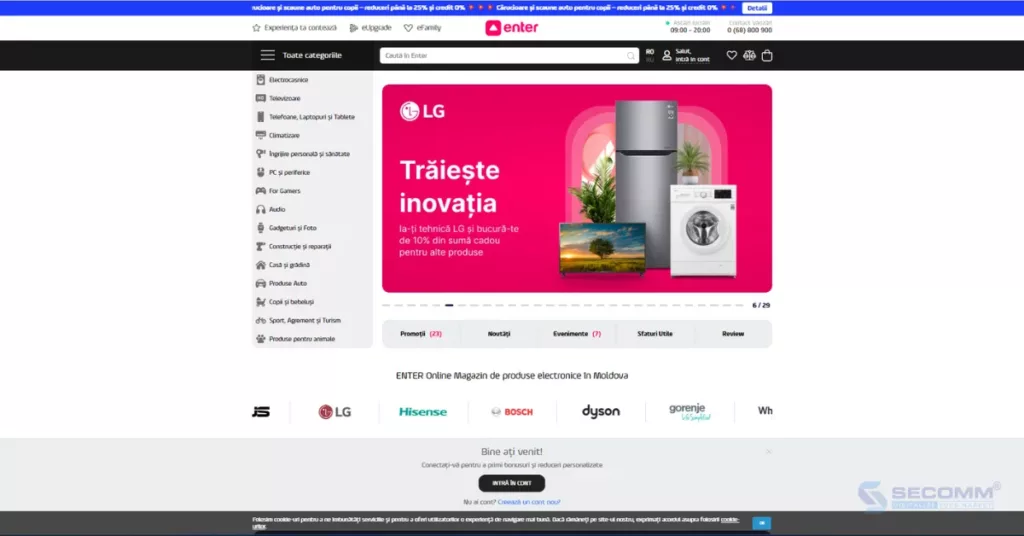
Moreover, Enter has established itself as a trusted authorized dealer for renowned brands such as Apple, Samsung, Xiaomi, Dyson, Lenovo, LG, and others. With future plans in mind, the company aims to further expand its brick-and-mortar stores and enhance its eCommerce website for an even more convenient shopping experience for customers
- Website: https://enter.online/
- Industry: Retail
- Traffic: 705.9K/month (7/2023)
- Ranking: #76,885 (Worldwide), #73 (Moldova)
Mobilier1
Mobilier1 is a Romanian CS-Cart eCommerce website specializing in the furniture industry. With over a decade of experience, the company remains focused on manufacturing and selling furniture within the eCommerce market. Mobilier1 consistently earns praise for the high quality of its products and services, providing competitive pricing compared to other market players.
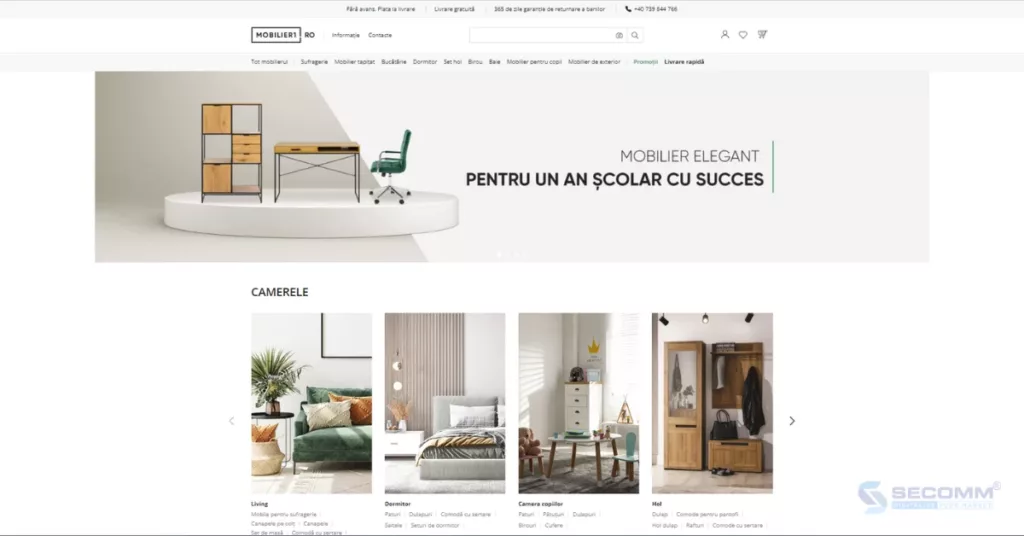
Furthermore, Mobilier1 offers additional services such as nationwide free delivery and a 365-day return policy, ensuring a seamless experience for its customers.
- Website: http://mobilier1.ro/
- Industry: Furniture
- Traffic: 365.5K/month (7/2023)
- Ranking: #142,635 (Worldwide), #726 (Romania)
Butor1
Butor1 is a Hungarian business specializing in the distribution of furniture and interior accessories. Over the past decade, the company has formed direct partnerships with renowned furniture manufacturers to offer customers products at reasonable prices.
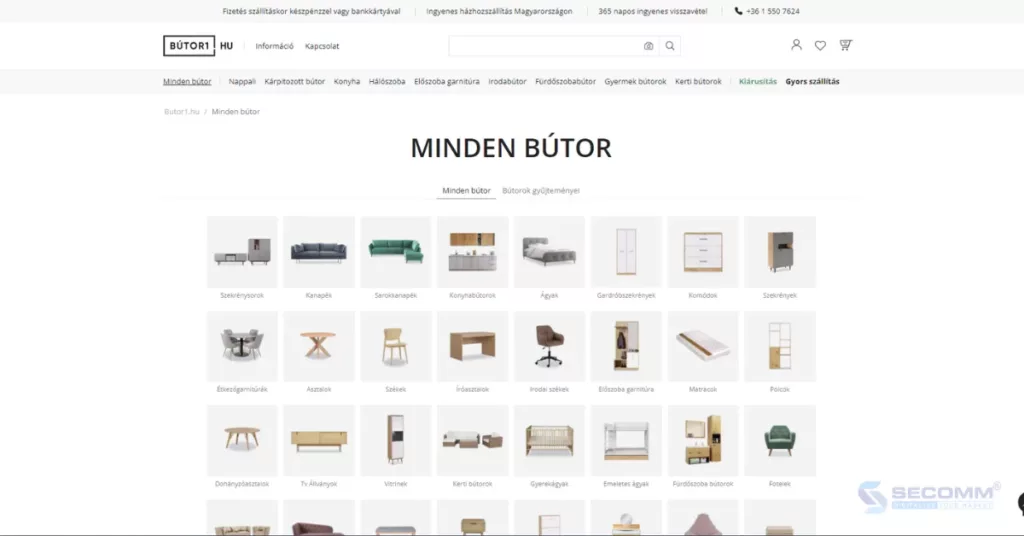
Recently, Butor1 has taken a step further by combining CS-Cart eCommerce website operations with sustainable practices, pledging to plant a tree for each successfully placed order, demonstrating its commitment to environmental responsibility.
- Website: https://www.butor1.hu/
- Industry: Furniture
- Traffic: 340.0K/month (7/2023)
- Ranking: #140,320 (Worldwide), #733 (Hungary)
Siriust
Siriust is a CS-Cart eCommerce website under the umbrella of Profi, a leading retail chain in Russia. Specializing in tech accessories like smartphones, laptops, wireless devices, and repair tools, Siriust boasts a catalog of over 16,000 products.
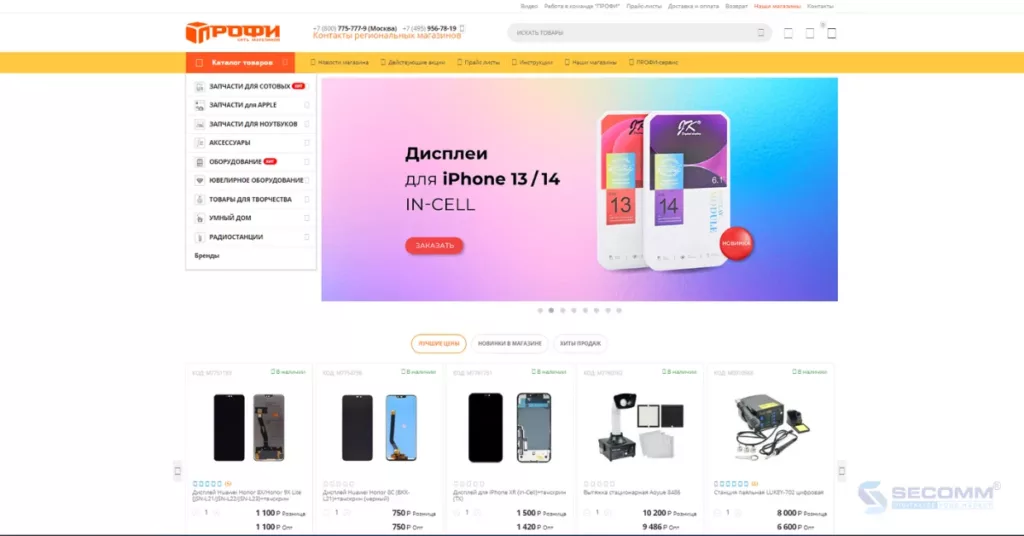
With 50 physical stores in major Russian cities, the company has strategically introduced a CS-Cart website, enabling customers to conveniently make online purchases and pick up their orders from the nearest store.
- Website: http://siriust.ru/
- Industry: Consumer electronics
- Traffic: 318.4K/month (7/2023)
- Ranking: #151,245 (Worldwide), #7,774 (Russia)
Topsto
Topsto is an online store serving customers in both B2B and B2C sectors in the Crimea region, Ukraine. With an expansive product catalog comprising over 280,000 items, Topsto’s CS-Cart website gained favor among customers for its varied product range, affordable pricing, and swift delivery services across the Crimea region.
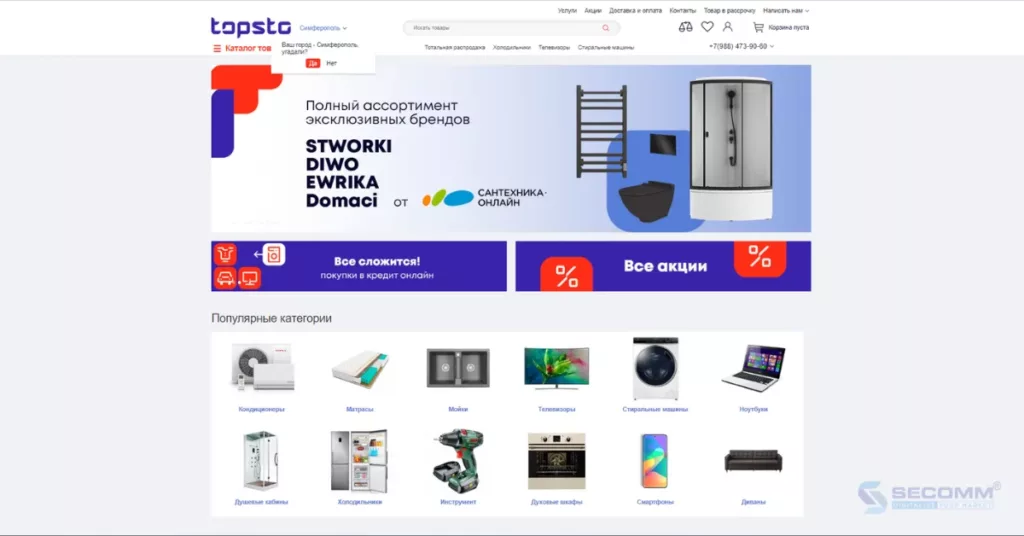
- Website: https://topsto-crimea.ru/
- Industry: Retail
- Traffic: 220.8K/month (7/2023)
- Ranking: #167,337 (Worldwide), #4,166 (Ukraine)
Ucuzkitapal
UcuzKitapal is a Turkish online book retail business with a loyal customer base of over 85,000. The store offers a vast collection of books covering diverse genres, including education, literature, economics, self-development, and more.
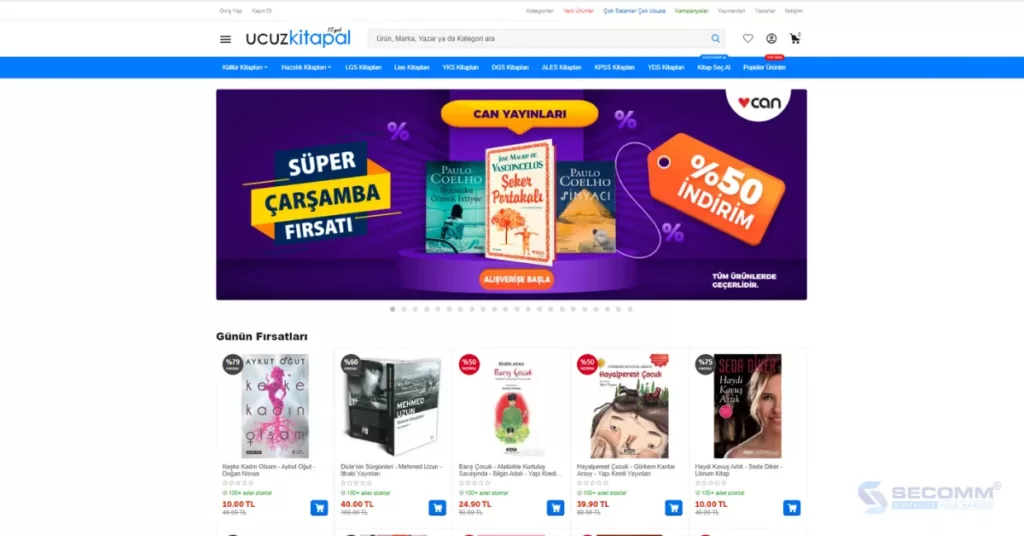
Through the early adoption of a CS-Cart eCommerce website, the business consistently satisfies book-buying needs with highly competitive prices, swift delivery, and attractive offers.
- Website: https://www.ucuzkitapal.com/
- Industry: Online book retail
- Traffic: 146.8K/month (7/2023)
- Ranking: #227,028 (Worldwide), #5,881 (Turkey)
Riviera Couleurs
Riviera Vaudoise is a paint and coating business established 40 years ago in the “Riviera Vaudoise” region in western Switzerland. Renowned for its picturesque landscapes, traditional villages, rose gardens, and idyllic lakeside views, the region provides an exquisite backdrop.
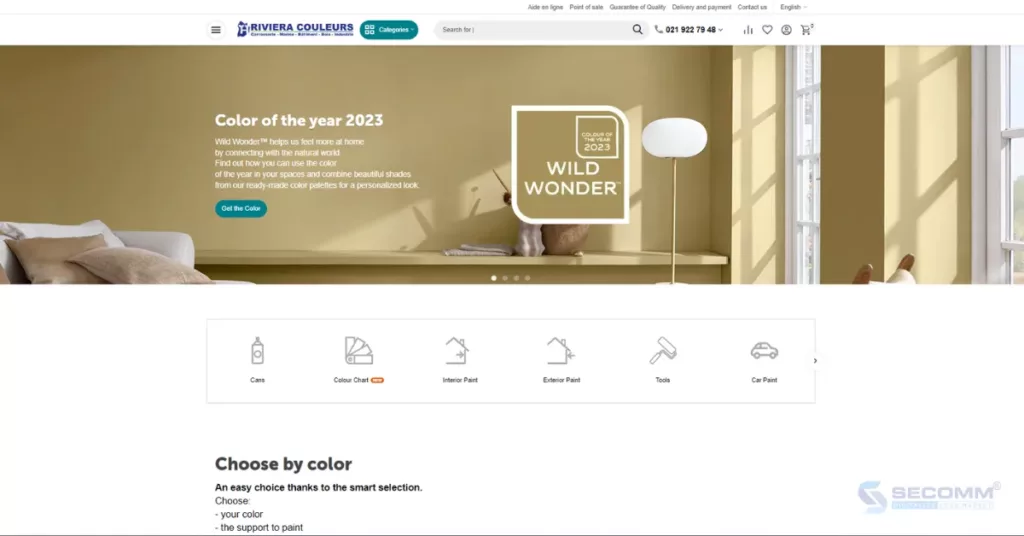
Over the years, Riviera Vaudoise has evolved into the premier destination for oil-based paints in the area, catering to diverse needs such as automotive, residential, and wood applications.
Currently, the company has built its CS-Cart website to extend its business footprint into the realm of eCommerce, aiming to connect with a broader audience of potential customers throughout Switzerland.
- Website: https://www.magasindepeinture.ch/
- Industry: paint and coating
- Traffic: 41.1K/month (7/2023)
- Ranking: #1,367,213 (Worldwide), #272,883 (Switzerland)
Here are 10 CS-Cart eCommerce websites that have not only successfully developed their online presence but have also achieved notable success in their respective industries. This triumph serves as inspiration for other businesses looking for effective solutions to elevate their operations and enhance competitiveness in the market.
Drawing on substantial experience in implementing eCommerce solutions for clients across diverse countries, SECOMM comprehends the challenges and hurdles businesses encounter during the deployment process.
Contact SECOMM today or call the hotline at 02871089908 for a free consultation.
 2
2

 7,465
7,465

 0
0

 1
1
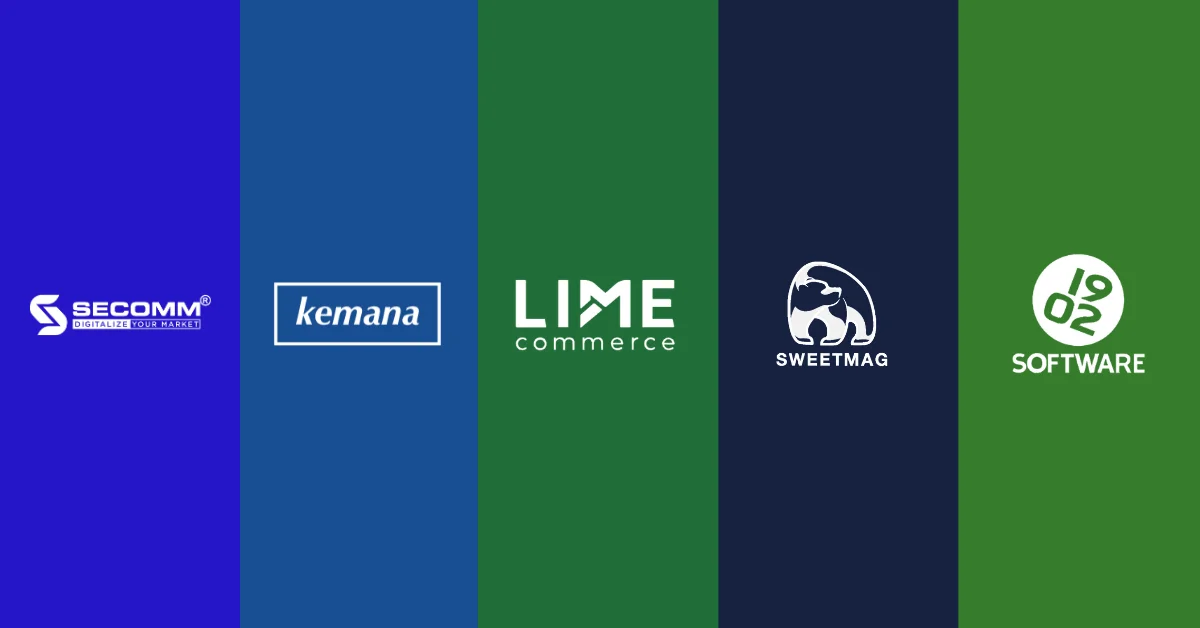
TOP 5 MAGENTO DEVELOPERS IN SOUTH EAST ASIA (SEA)
The eCommerce landscape in SEA is experiencing robust growth, with a CAGR of 11.43%. The anticipated total revenue for 2023 is projected to reach USD 109 billion, as reported by Statista. Moreover, there are over 2000 eCommerce websites built on the Magento platform within this market.
For most Magento deployment projects, collaboration with experienced developers on this platform is crucial. This partnership ensures joint planning, design, and development of customized websites tailored to the specific requirements of each business.
This article will delve into why Magento remains the preferred platform for eCommerce website development and spotlight the top 5 Magento developers in the SEA region, including Kemana (Indonesia), Lime Commerce (Indonesia), SECOMM (Vietnam), Sweetmag (Malaysia), and 1902 Software (Philippines).
What is Magento?
Magento is an open-source eCommerce platform built using the PHP programming language and the Zend Framework. In 2018, Adobe officially acquired Magento and rebranded it as Adobe Commerce, aiming to integrate this platform into Adobe’s suite of digital solutions.
This merger has enhanced Magento’s capabilities and provided businesses with a more comprehensive eCommerce solution powered by Adobe.
Magento has two main versions: Magento Open Source – a free version (formerly known as Magento Community Edition) and the paid version called Adobe Commerce (formerly Magento Commerce).
The paid version offers users two options: on-premise and on-cloud, with numerous upgraded features and enhancements to meet higher demands for customization and scalability.
Why do brands choose Magento?
Customization & Scalability
Being an open-source platform, Magento provides businesses with the flexibility to access and modify source code, functionalities, themes, and extensions. Moreover, Magento can efficiently handle up to 500,000 daily visits and imposes no restrictions on annual sales volumes.
According to BuiltWith, there are currently over 144,000 active Magento websites including several global brands experiencing significant traffic, such as:
- Samsung – 1 billion/month (USA)
- Walmart – 394 million/month (USA)
- Nike – 141 million/month (USA)
- Adidas – 29.2 million/month (USA)
- Levi’s – 10.6 million/month (USA)
Notably, some high-traffic eCommerce websites in the Southeast Asian market are also using Magento, such as:
- Didongviet – 4.4 million/month (Vietnam)
- Abenson – 1 million/month (Philippines)
- Klik Indomaret – 3.8 million/month (Indonesia)
These leading brands leverage the Magento platform to execute complex customizations for their eCommerce systems, enhancing their capabilities in handling high traffic, extensive product catalogs, and substantial sales volumes. Therefore, for any business seeking a highly customizable and scalable eCommerce platform, Magento is likely the first name that comes to mind.
Headless Commerce
Headless Commerce is an eCommerce trend with 80% of businesses planning to adopt this approach within the next two years, according to Salesforce’s “State of Commerce” report.
For the demands of Headless architecture, the open-source Magento platform stands out as an optimal choice. Unlike traditional Magento architecture, Headless Magento utilizes GraphQL API to support various frontend designs for different devices and screens. This setup is optimized and integrated into the existing backend system to deliver a seamless omnichannel experience.
Moreover, Adobe offers enterprises an advanced suite to enhance the efficiency of Headless Commerce operations. This suite includes Adobe Experience Manager (Content Management), Adobe Analytics (In-depth analytics reporting), and Adobe Marketo Engage (Marketing automation).
PWA Studio
According to Emergen Research, the global Progressive Web App (PWA) market is expected to reach 10.44 billion USD by 2027. Therefore, it’s not surprising that many businesses are turning to Magento’s PWA Studio features. This toolkit facilitates the rapid development, launch, and maintenance of PWAs.
Moreover, businesses adopting Headless Commerce can seamlessly integrate with PWA Studio to customize frontend designs. PWAs are often combined with Headless architecture to create Headless PWAs, replacing conventional frontends with PWA storefronts to enhance website performance.
Moreover, Magento PWA utilizes Service Worker technology for device caching, significantly boosting page load speeds by 2 to 3 times.
Magento Global Community
Magento boasts a thriving and engaged community comprising developers, designers, and users. This community consistently generates modules, themes, plugins, and integrated add-ons for the Magento platform.
Moreover, there are many Magento developers in the market, making it easy for businesses to find a suitable partner.
In addition, prominent forums like Reddit, Quora, Substack, Slack Groups, and online conferences provide platforms for Magento users to exchange knowledge and experiences.
Hence, beyond direct support from collaborative partners, these forums serve as invaluable resources whenever businesses face challenges or require assistance throughout the Magento deployment journey.
Top 5 Magento Developers in SEA
Magento is designed to meet almost every need when it comes to creating professional and custom eCommerce websites.
However, not all businesses have the technical expertise and understanding of Magento to start and successfully implement this platform. This is why many businesses seek to collaborate with Magento developers to bring their ideas and business goals to life.
Below are 5 Magento agencies in South East Asia, boasting exceptional experience and expertise.
SECOMM (Vietnam)
SECOMM is known as a provider of comprehensive and specialized eCommerce solutions tailored to each business model and requirement.
Established in 2014, SECOMM has successfully collaborated on and developed Magento eCommerce websites for numerous major clients spanning from Australia, Singapore, Hong Kong to Vietnam, including LaybyLand, Changi Airport Group, My Market, Annam Group, and Vinamilk.
Going beyond Magento website development collaborations, SECOMM and its clients strategically outline sustainable short and long-term development plans, ensuring continued leadership in the targeted markets.
With vast experience in executing over 300 custom Magento website development projects for clients worldwide, SECOMM has firmly established itself as a premier professional Magento developer in Vietnam.
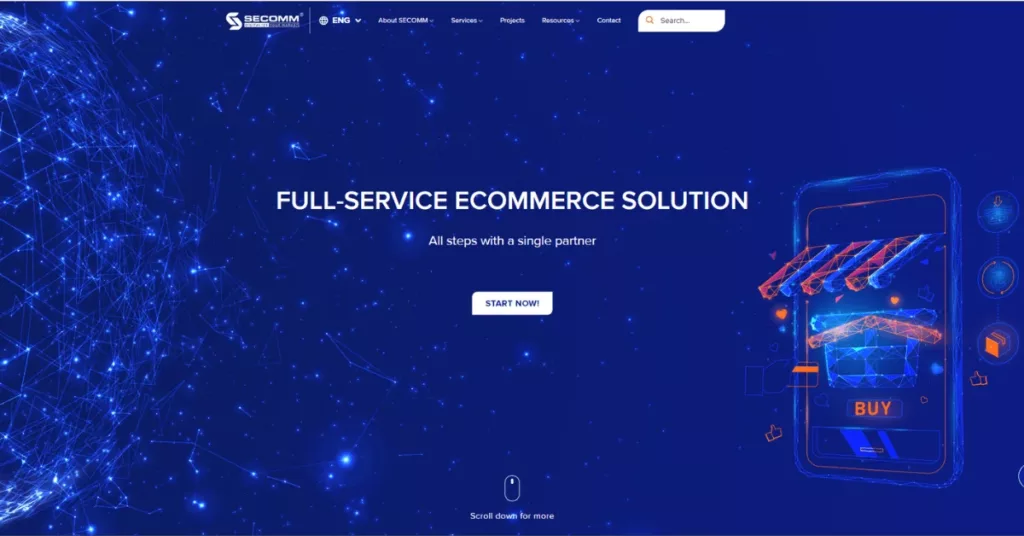
Kemana Technology (Indonesia)
Established in 2011, Kemana Technology is a private company consisting of a team of experts with over a decade of experience in the eCommerce industry. Recognized as an official Silver partner of Adobe, Kemana stands out as a leading Magento developer in the broader APAC region and specifically in Indonesia.
When it comes to eCommerce website development services, Magento is the core technology solution that the company suggests to its clients.
Moreover, Kemana leverages Magento’s exceptional customization capabilities to deliver Omnichannel deployment solutions for retailers, offering two primary services: Click & Collect (Pick Up In-store) and Ship From Store.
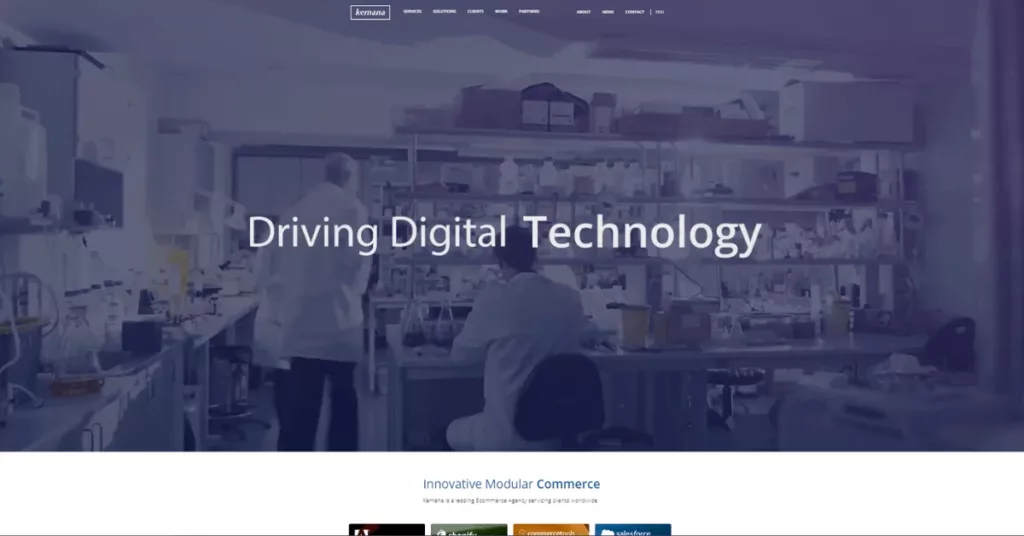
Lime Commerce (Indonesia)
Similar to Kemana Technology, Lime Commerce is also among the top Magento developers in Indonesia. Established in 2014, the company holds the Bronze partnership status in the Adobe Solution Partner Program. Lime Commerce provides personalized solutions tailored to meet the deployment needs of each customer segment.
As a dedicated eCommerce development company focusing on Magento, Lime Commerce offers a range of comprehensive services and solutions related to the Magento platform.
This includes custom design and development of Magento eCommerce websites, system maintenance and updates, optimization of website performance and security, and implementation of various crucial integrations.
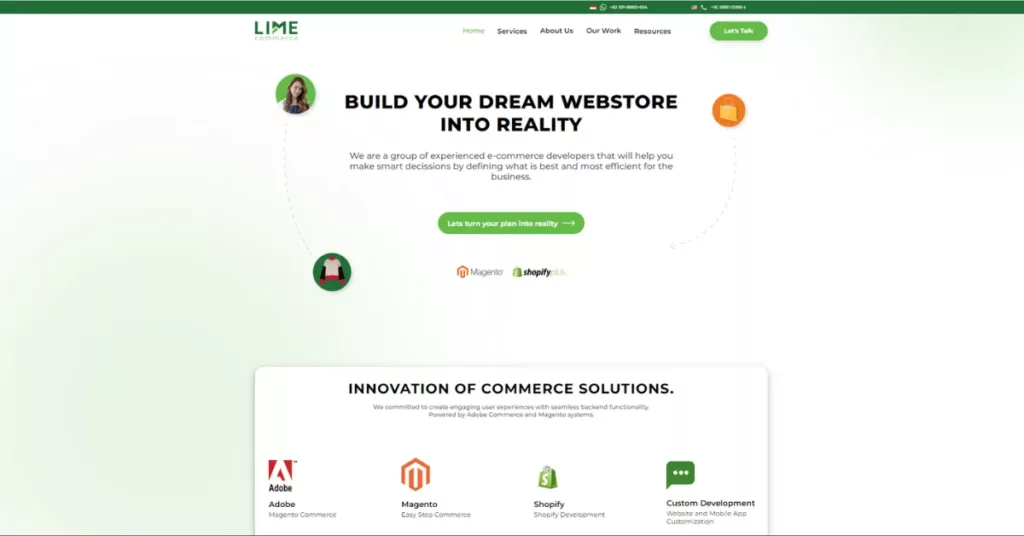
Sweetmag Solutions (Malaysia)
Established in 2008, Sweetmag Solutions has distinguished itself as a premier provider of Magento website development solutions in Malaysia, offering a range of associated web services. Over the years, Sweetmag has achieved Bronze-level partnership status in the Adobe Solution Partner program.
Sweetmag provides a seasoned team to build Magento eCommerce websites to meet specific requirements and objectives related to customer experience and conversion.
Through collaborations with prominent brands like Padini, Innisfree Malaysia, Parkson Online, and Caring Pharmacy, the company has firmly established its position in the Malaysian eCommerce market.
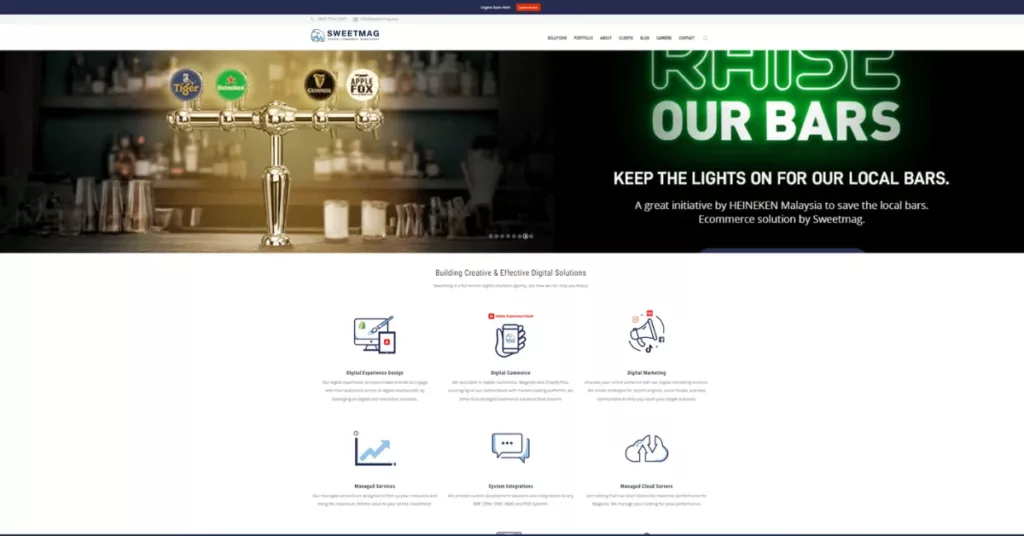
1902 Software (Philippines)
Founded and operated since 1998 by Danish programmer Peter, 1902 Software has evolved into a prominent software development and eCommerce solutions company in the Philippines. Their key services include AI development, eCommerce solutions, custom software development, and innovative design, all of which contribute to their notable reputation.
In the realm of eCommerce development, the company excels in delivering solutions for creating powerful, flexible, and scalable Magento websites. With a track record of successful projects, 1902 Software has earned positive reviews from satisfied clients.
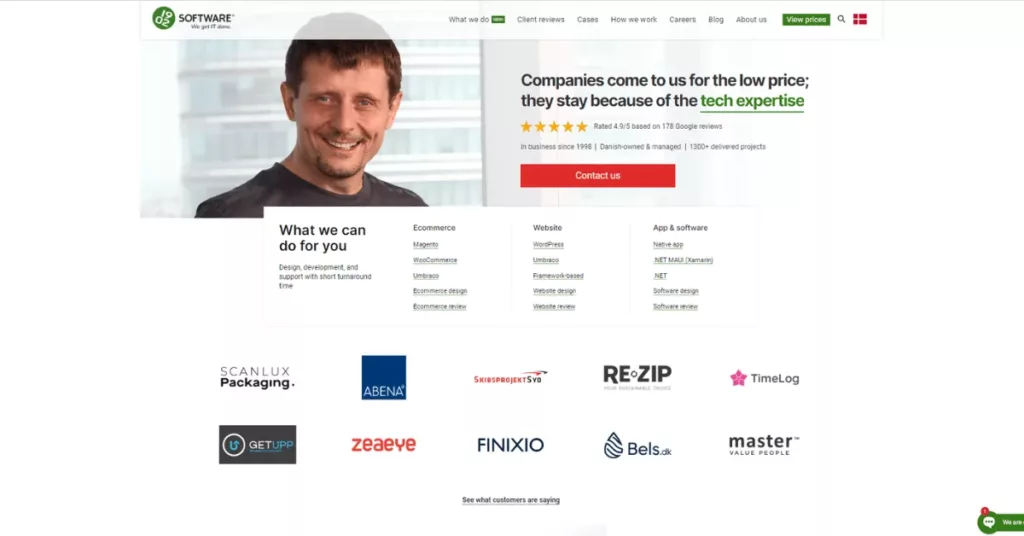
Start Your eCommerce Journey with Magento Today!
The effectiveness and popularity of Magento are demonstrated by the numerous businesses, spanning from medium-sized enterprises to large corporations, that have successfully implemented and operated their eCommerce websites on this platform. Moreover, the global Magento developer community is extensive, and the Southeast Asian region is no exception, featuring top-notch specialists with high technical expertise and extensive experience in Magento, as mentioned in the article.
Contact or call SECOMM’s hotline at (+84)28 7108 9908 to build your Magento eCommerce website today!
 2
2

 5,489
5,489

 0
0

 1
1



